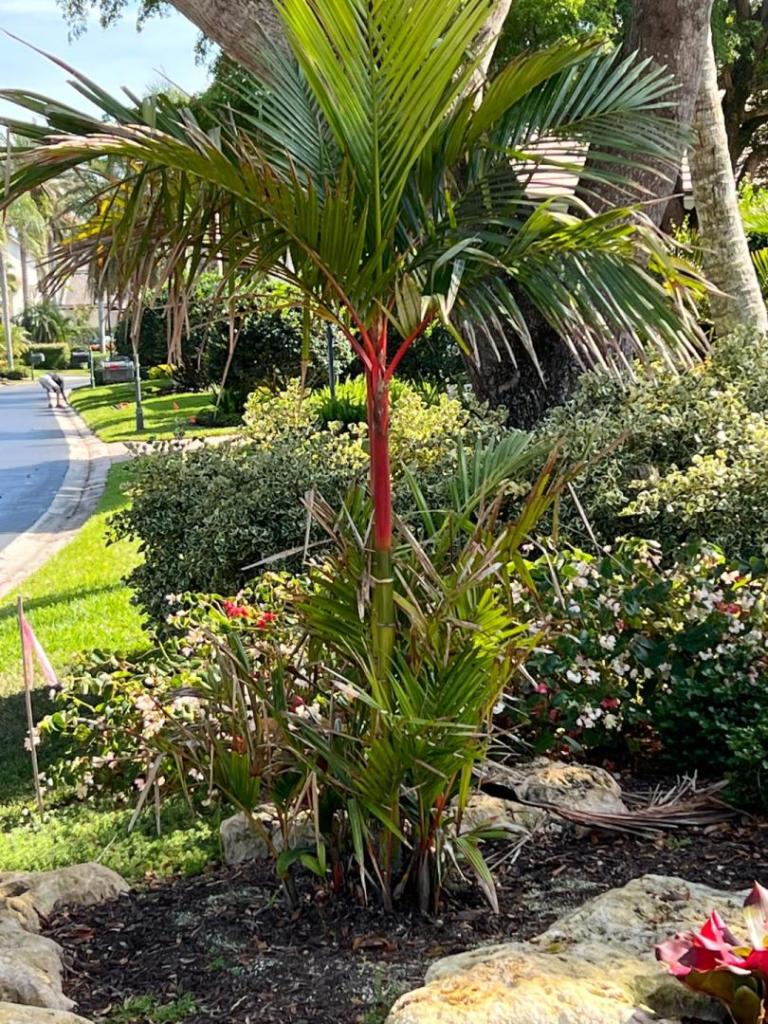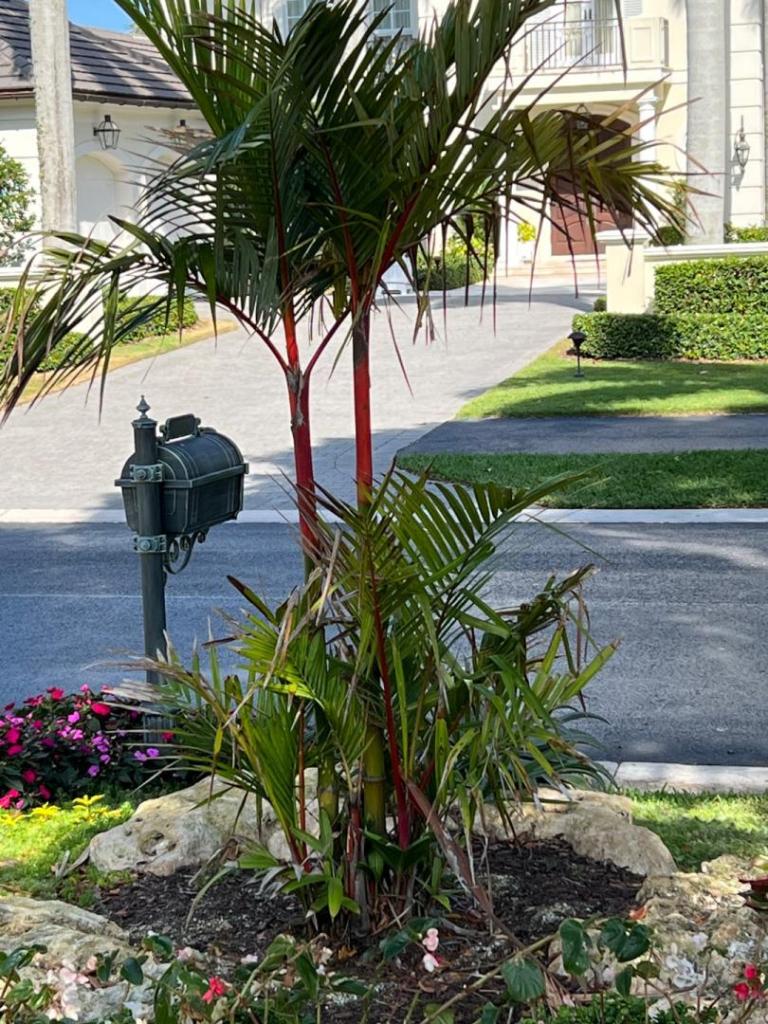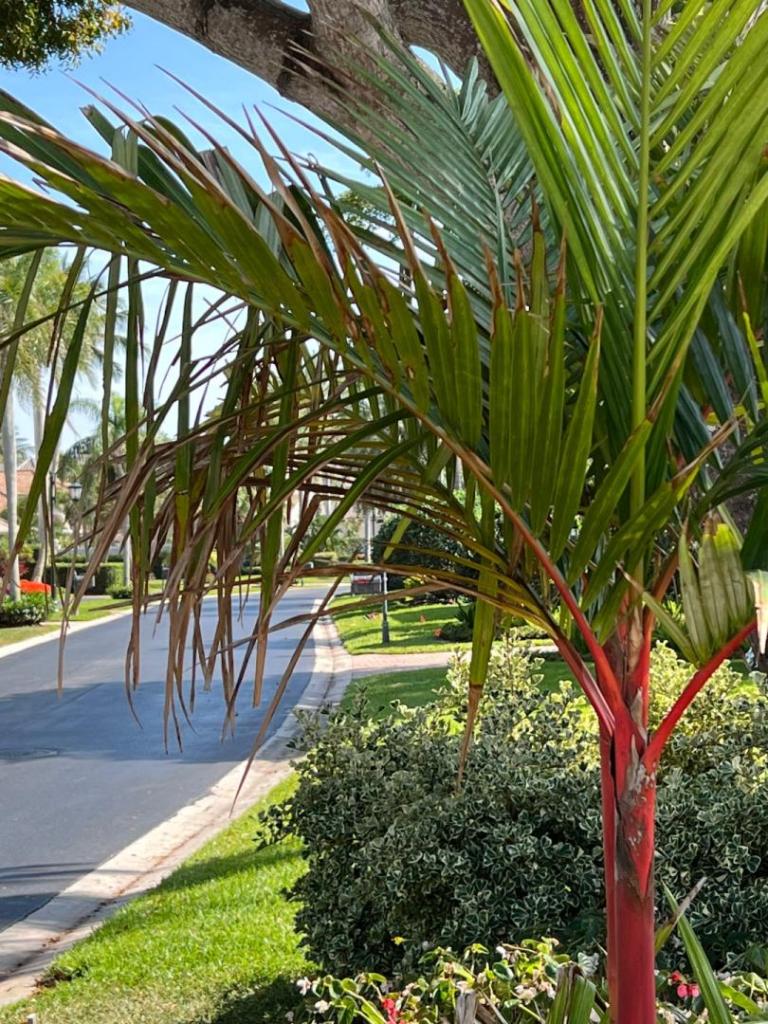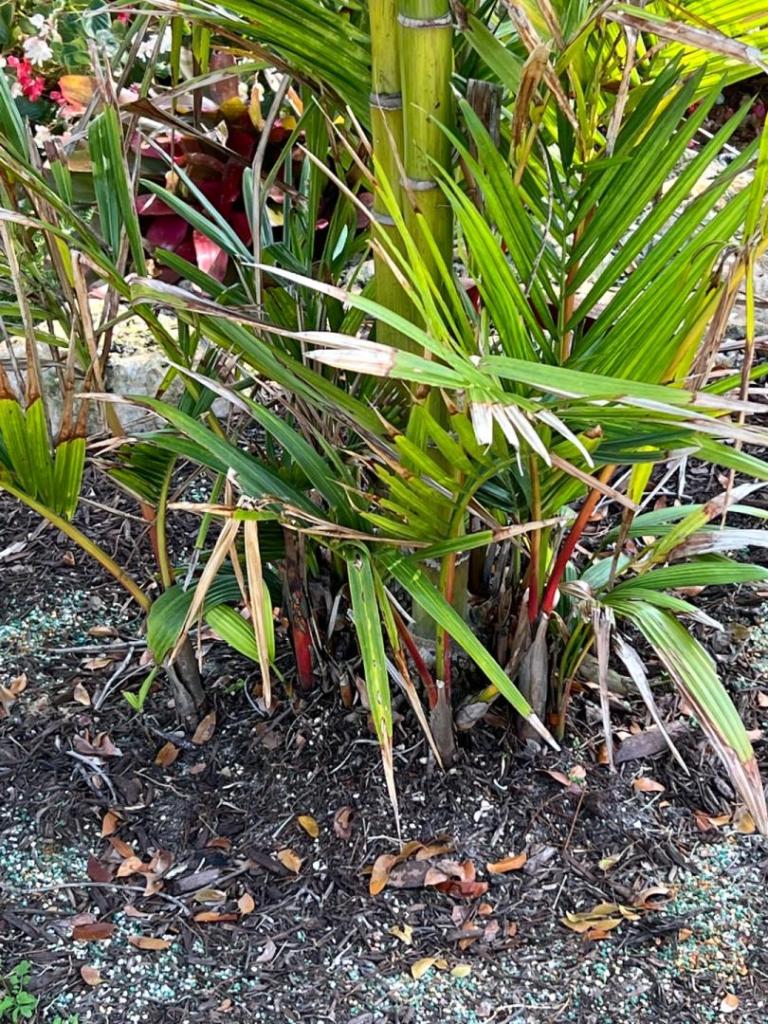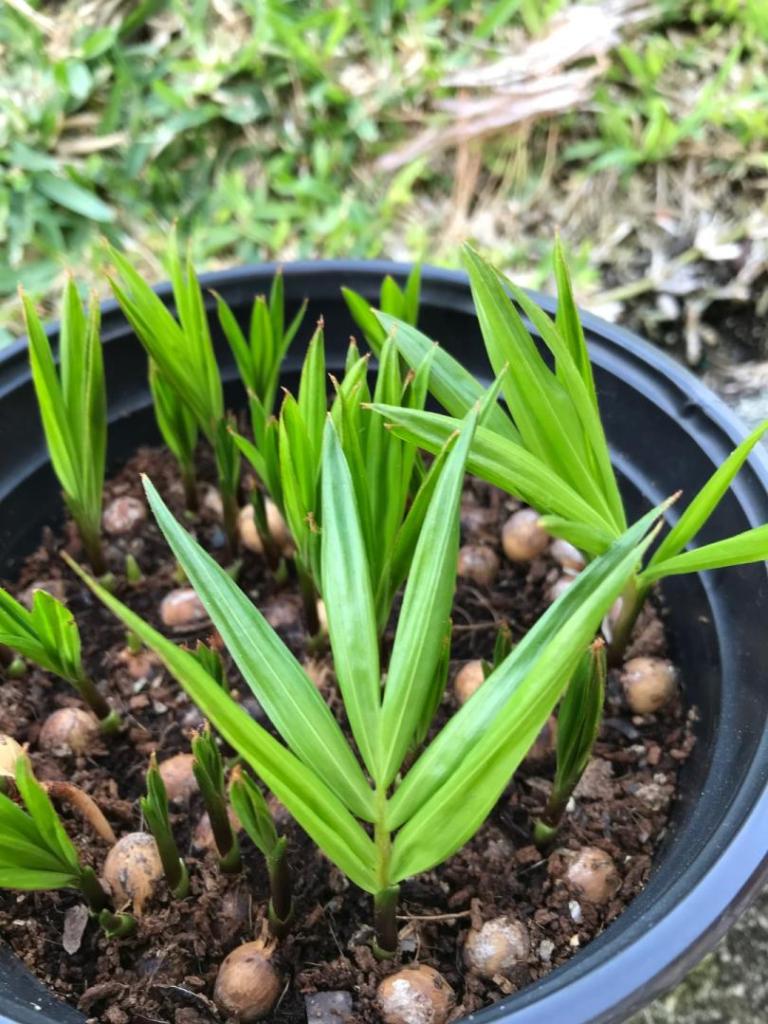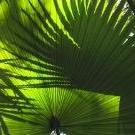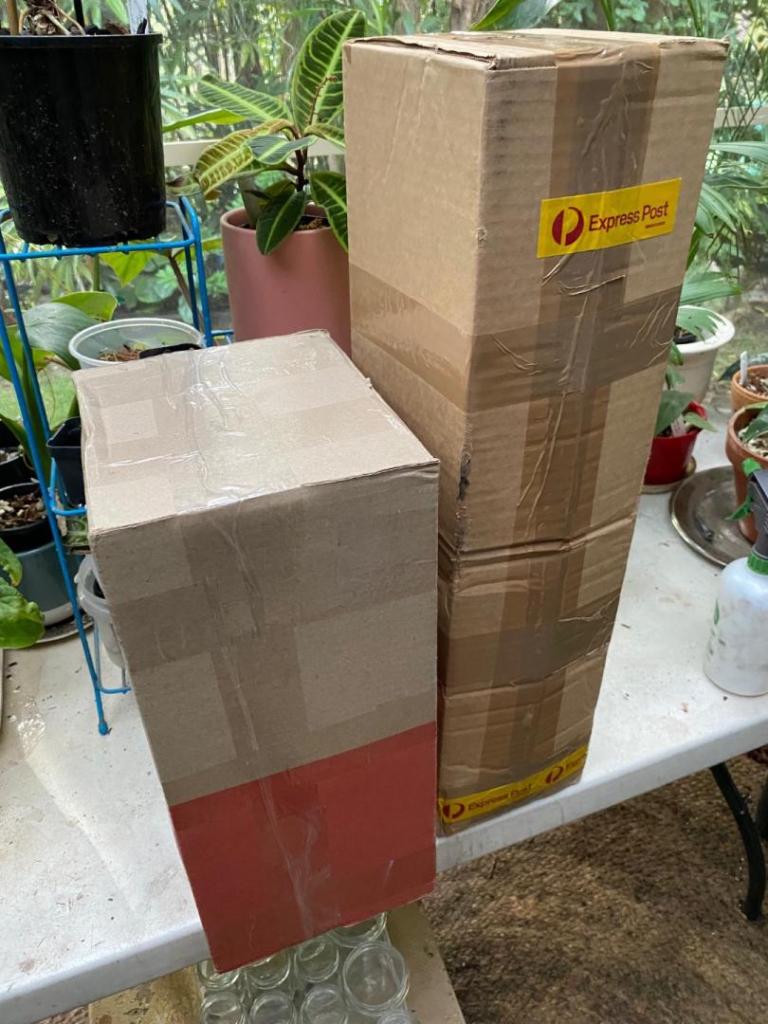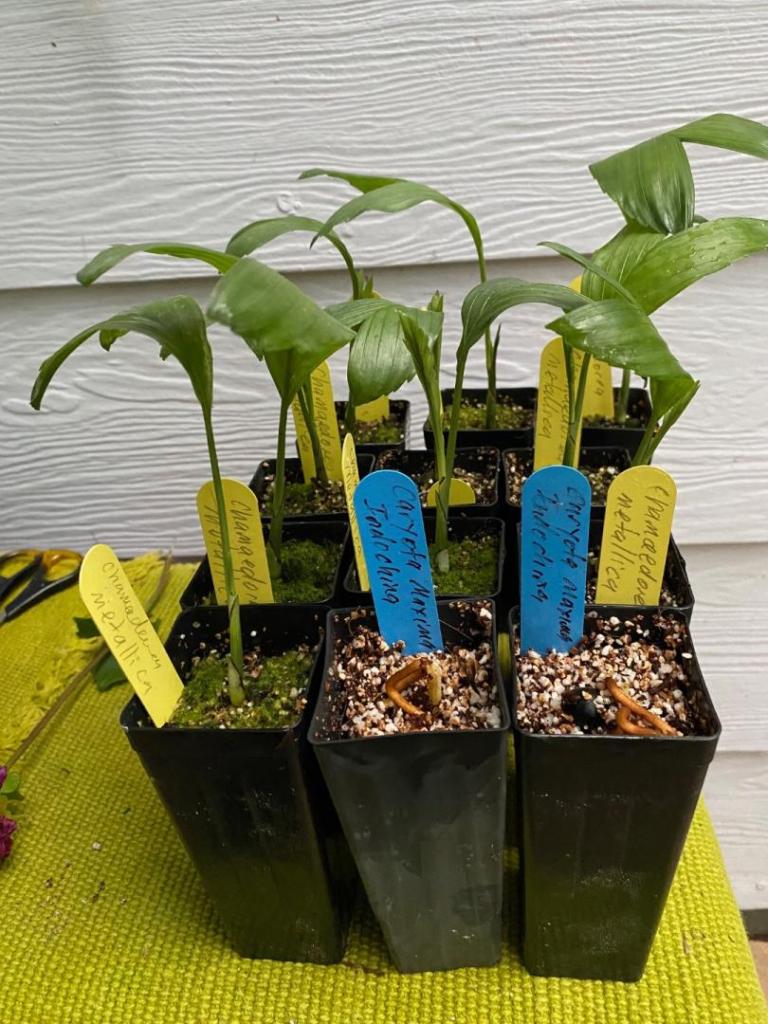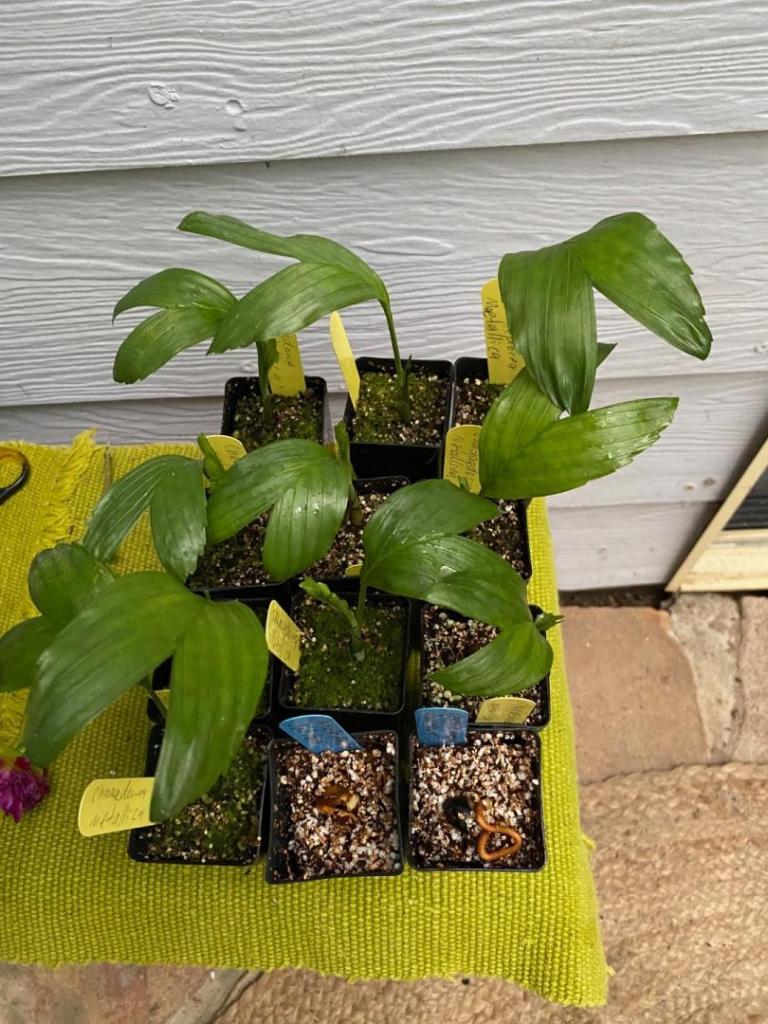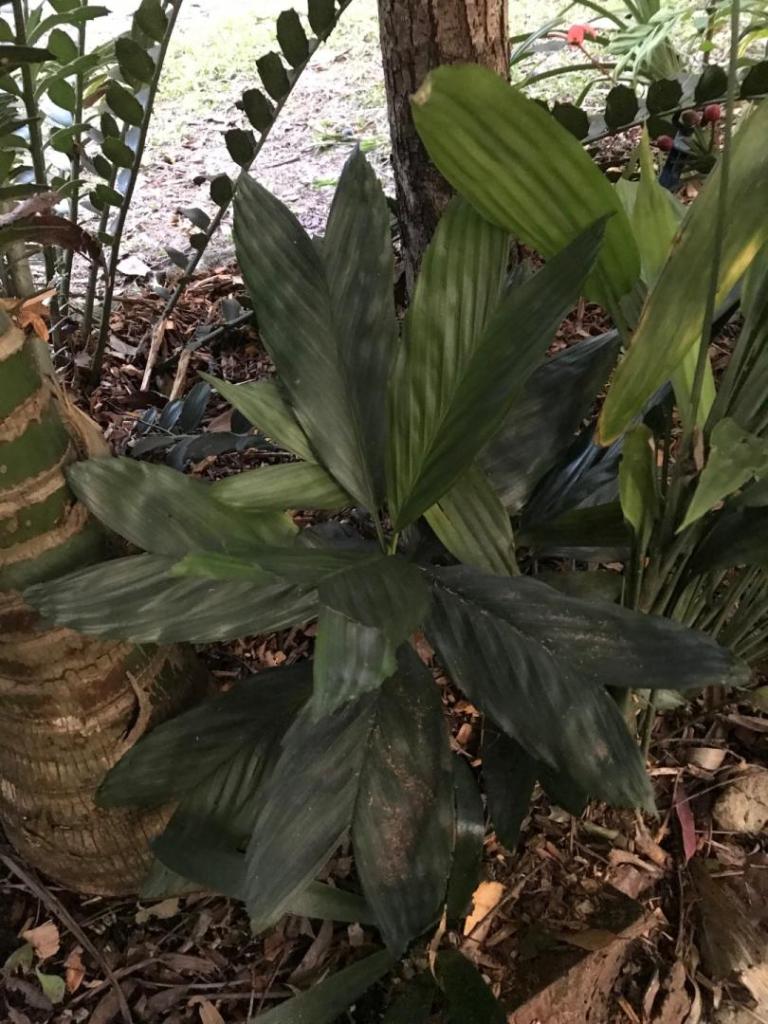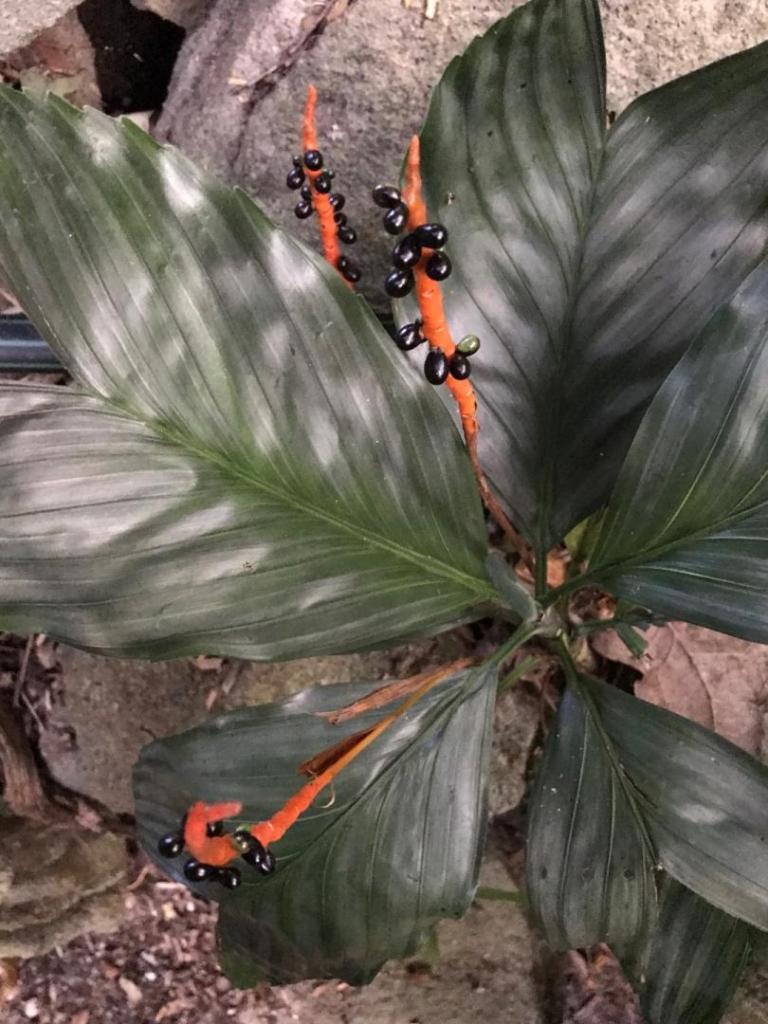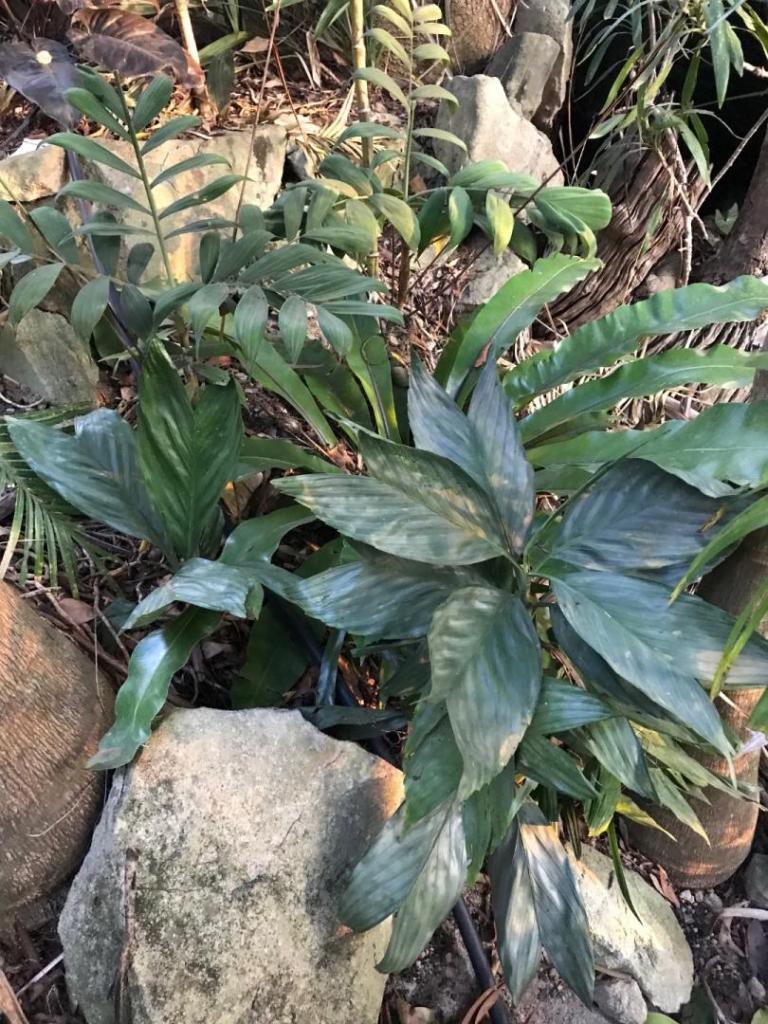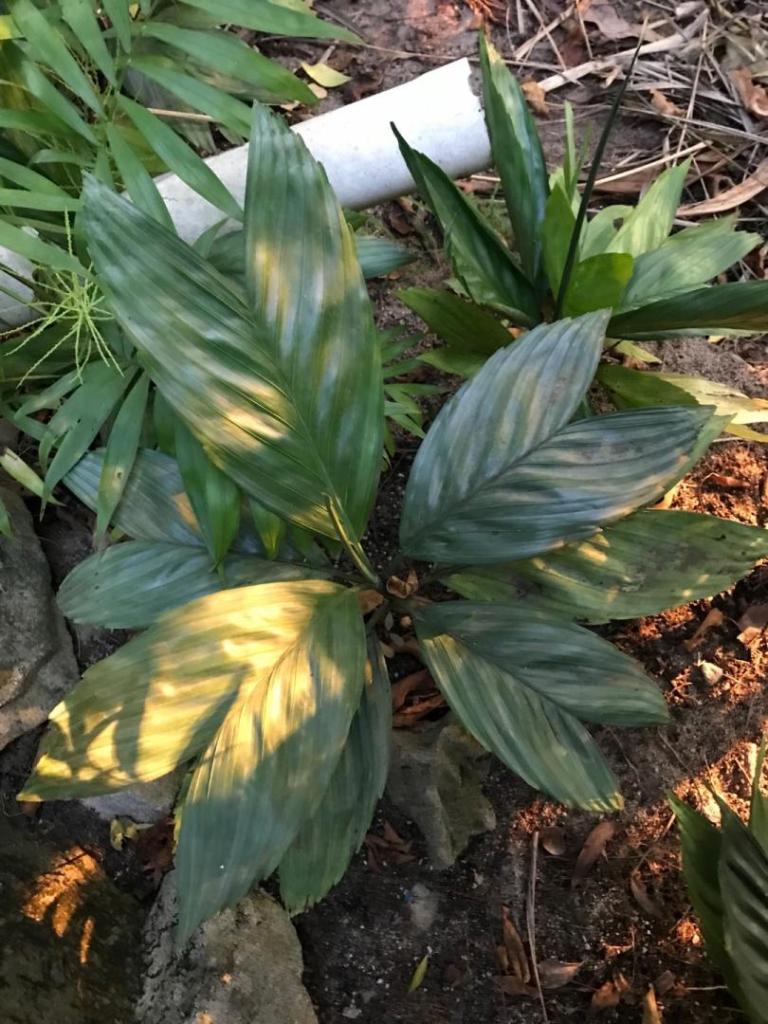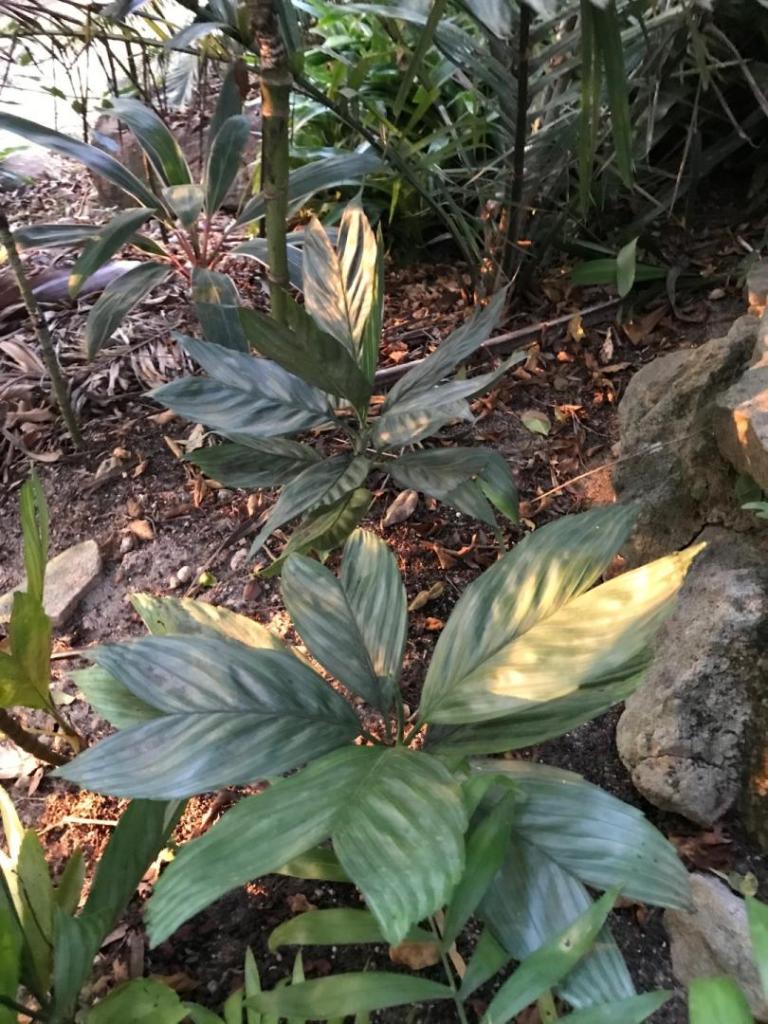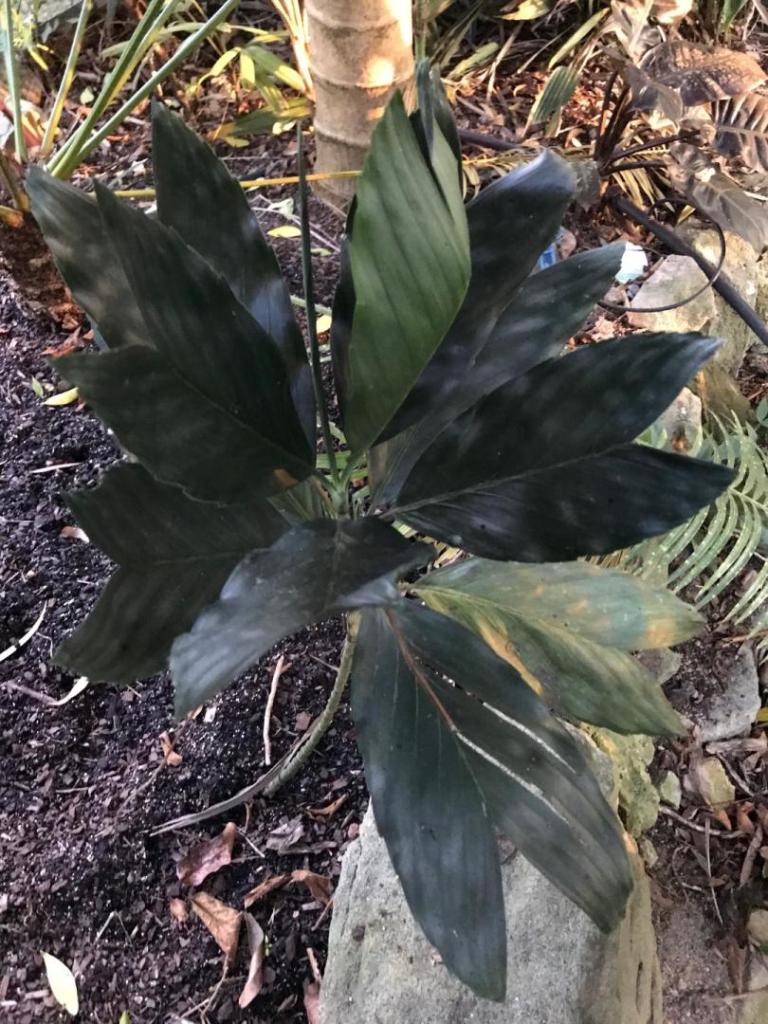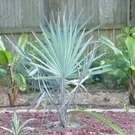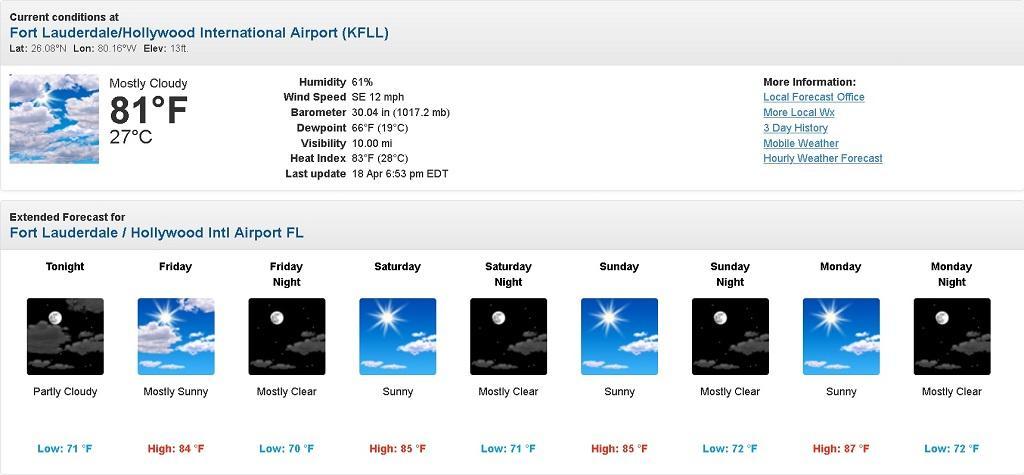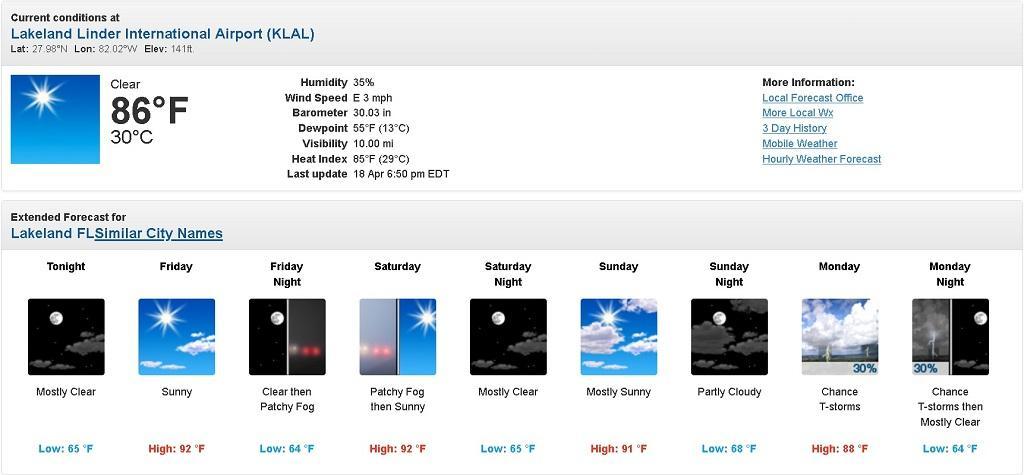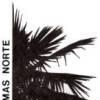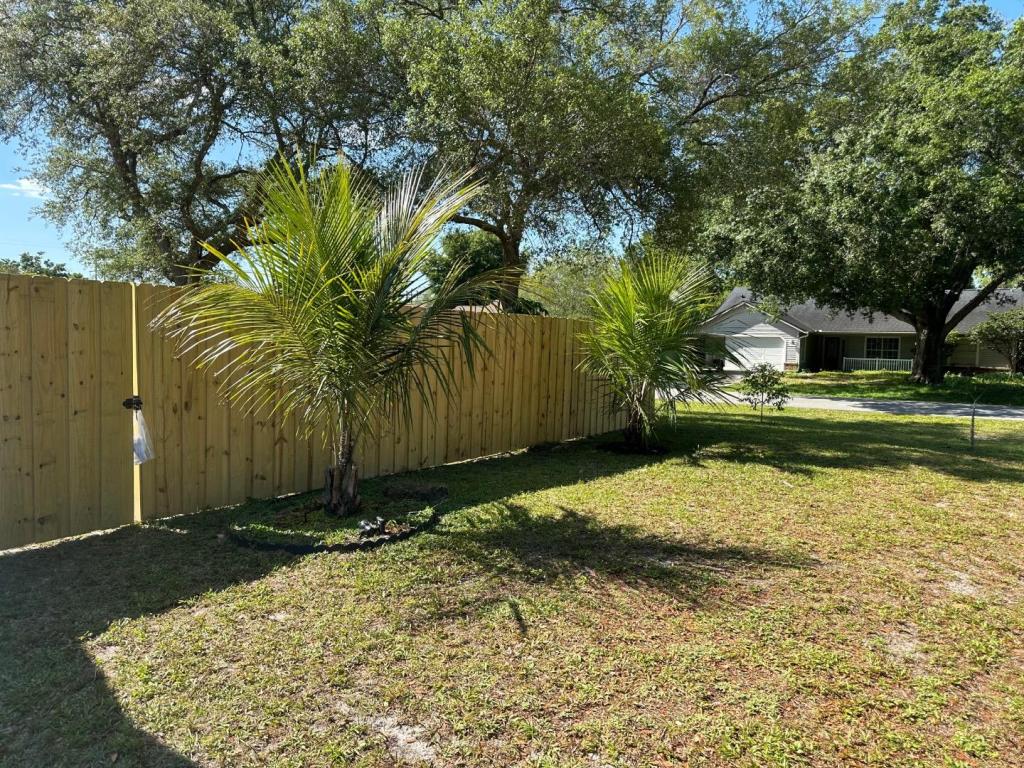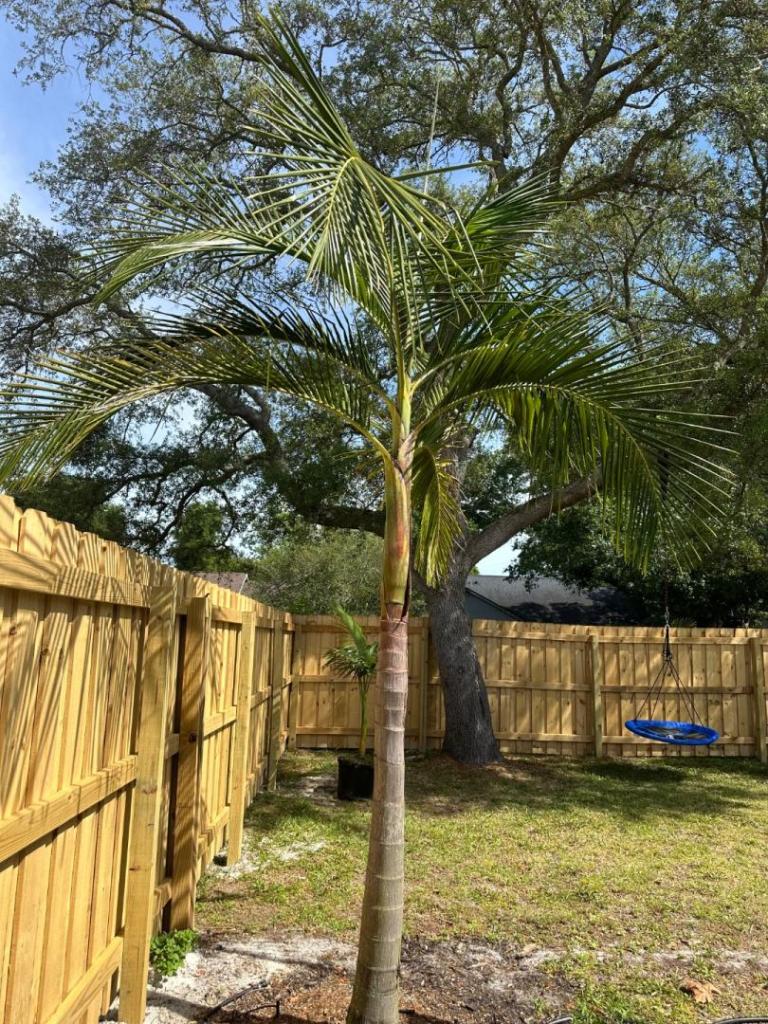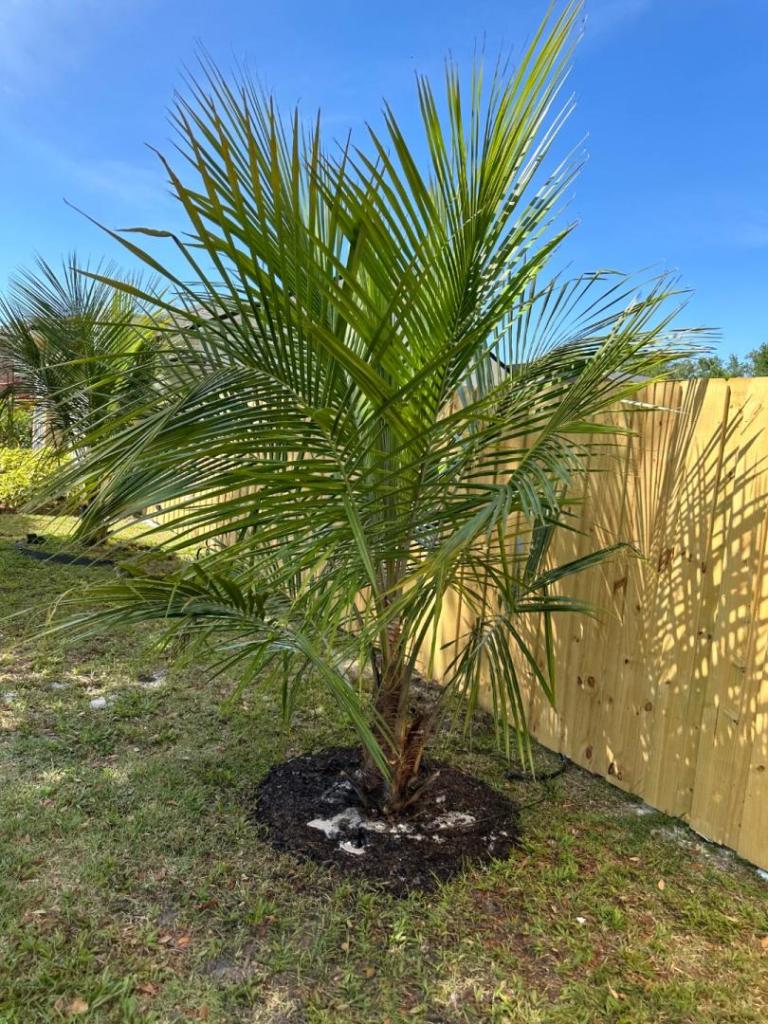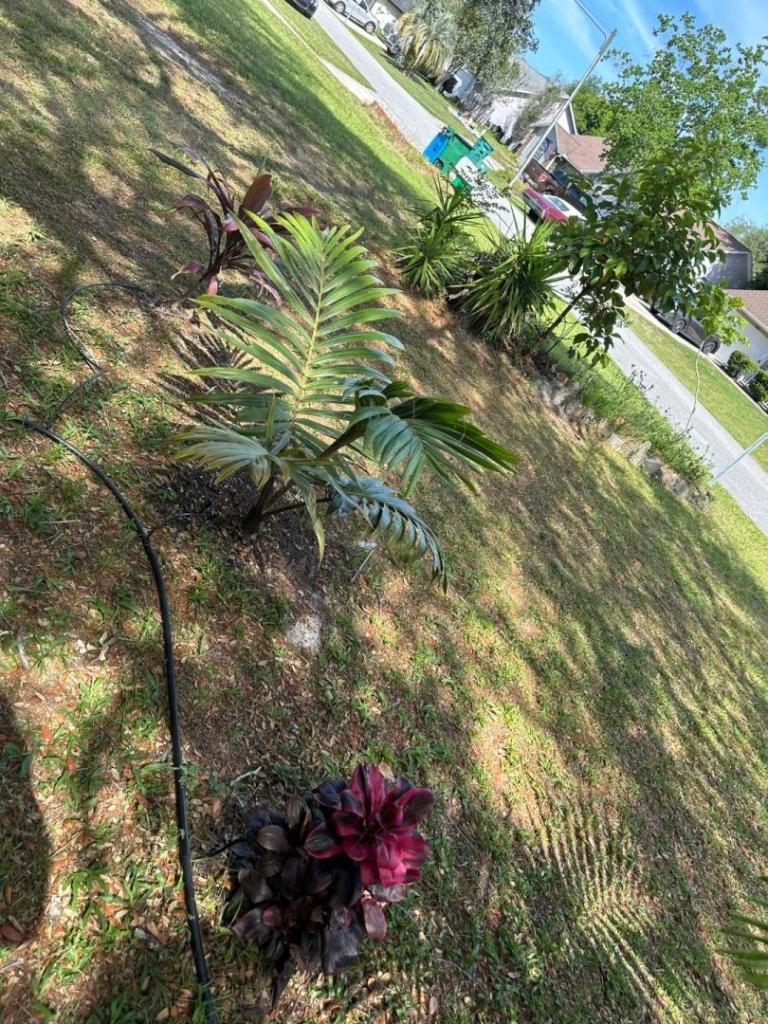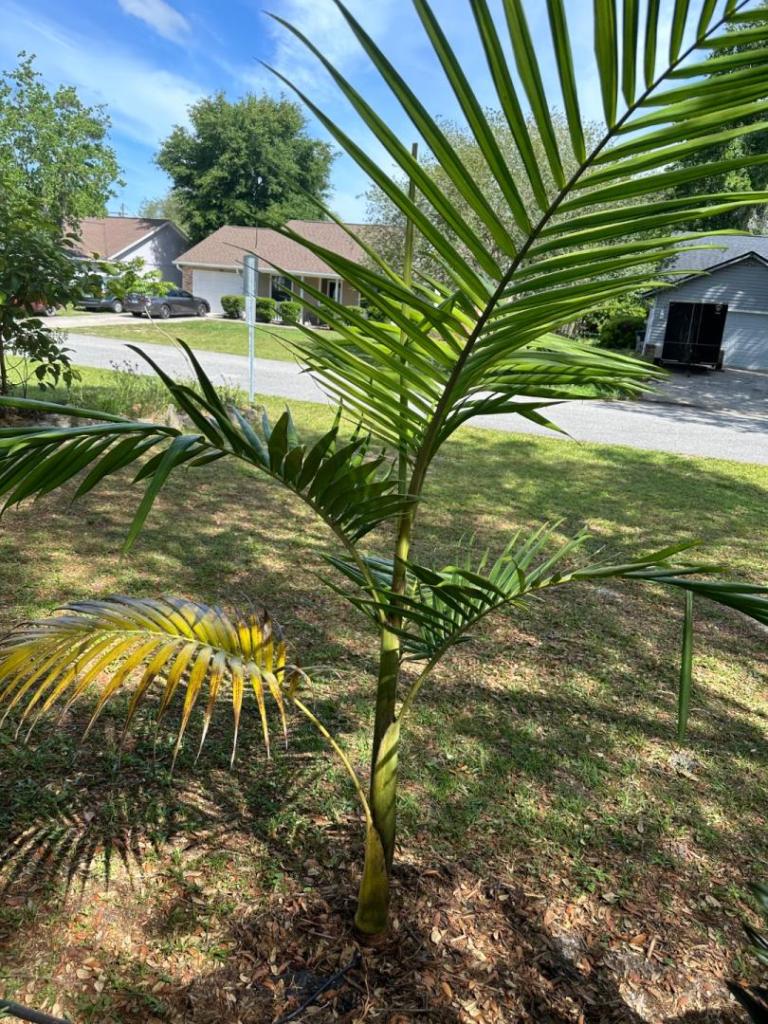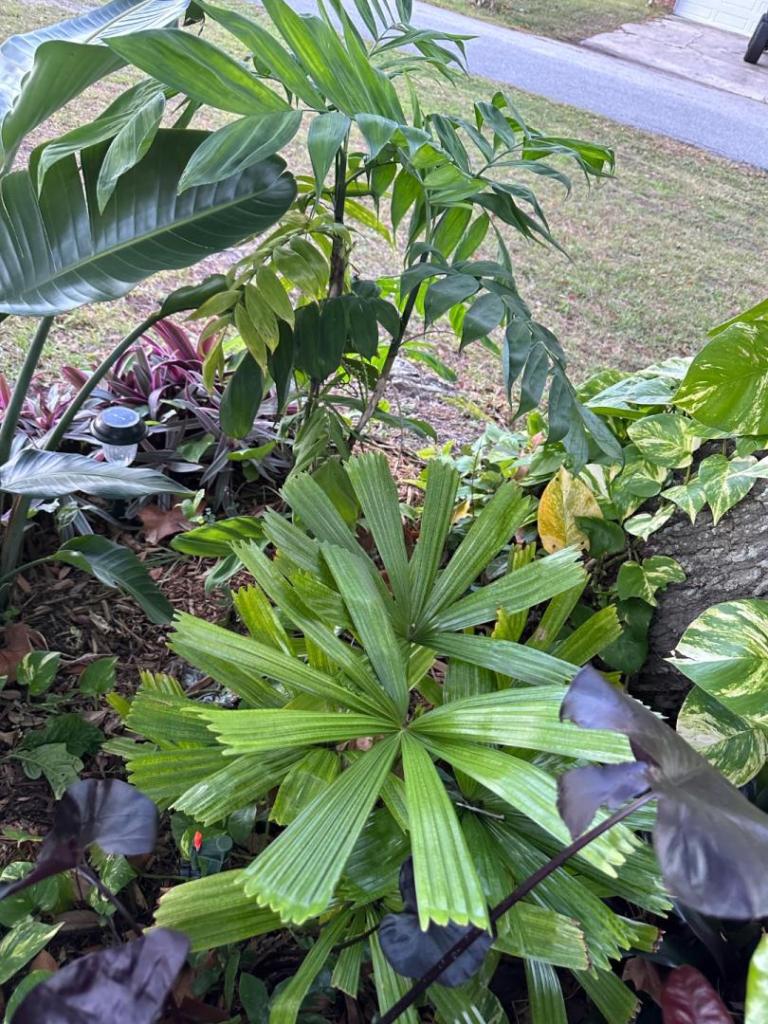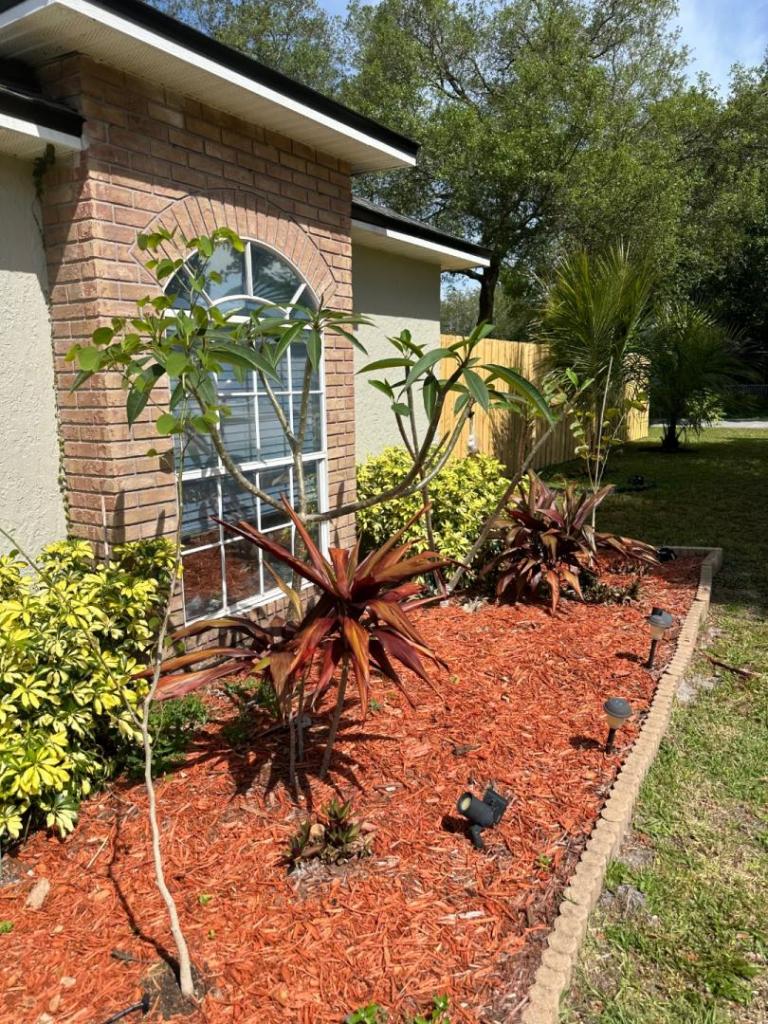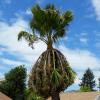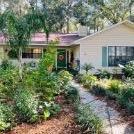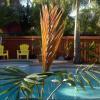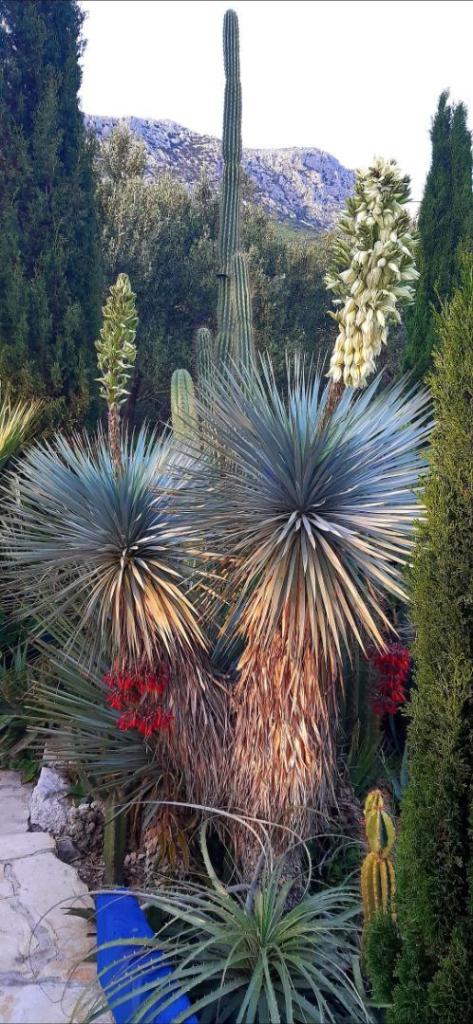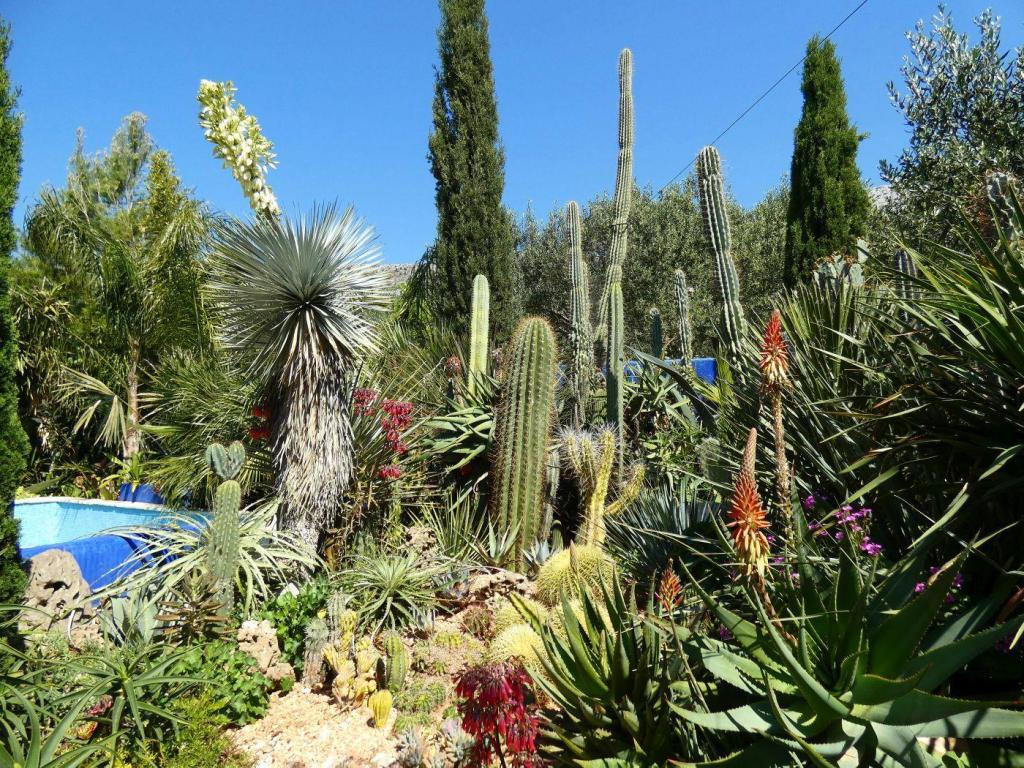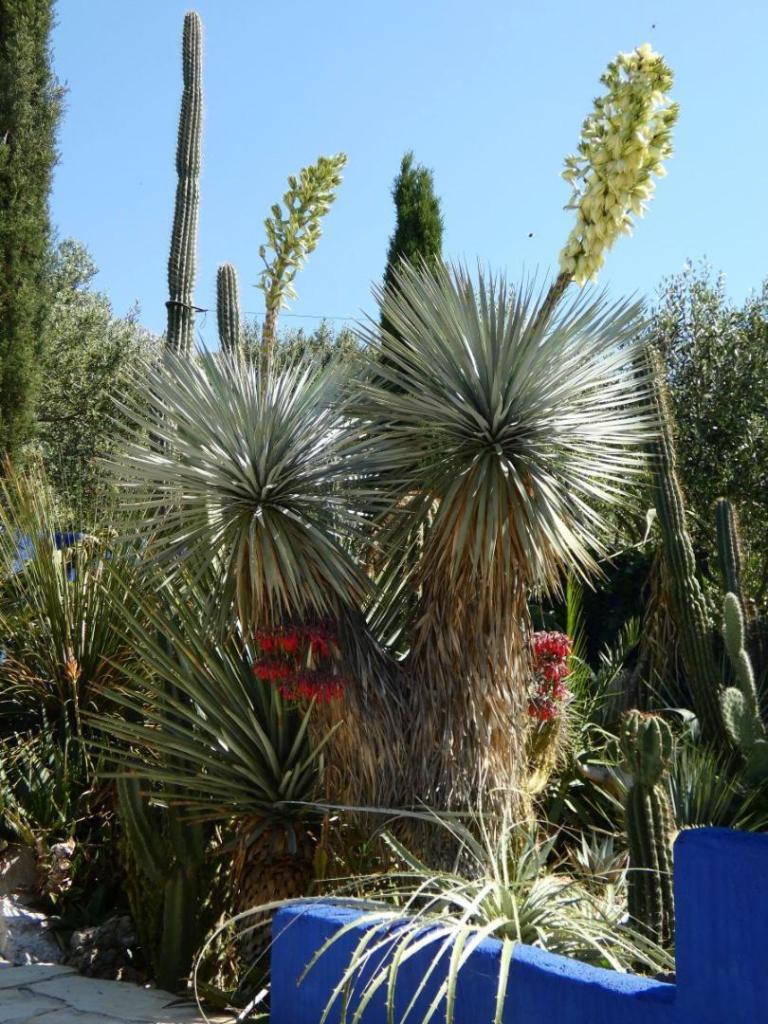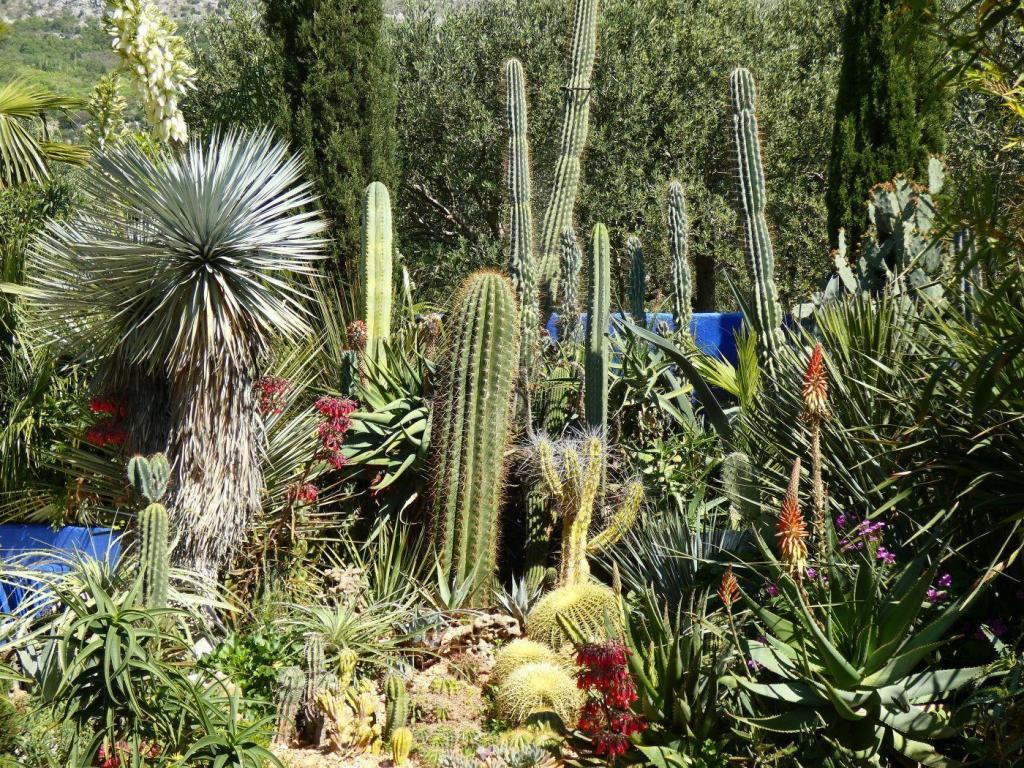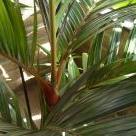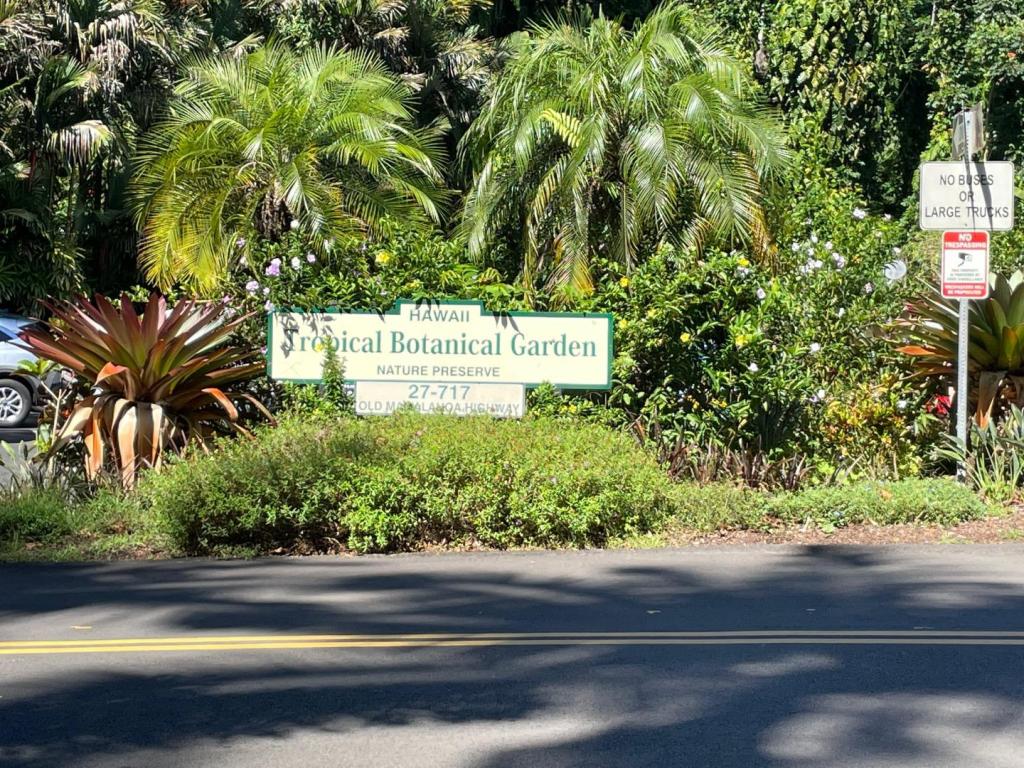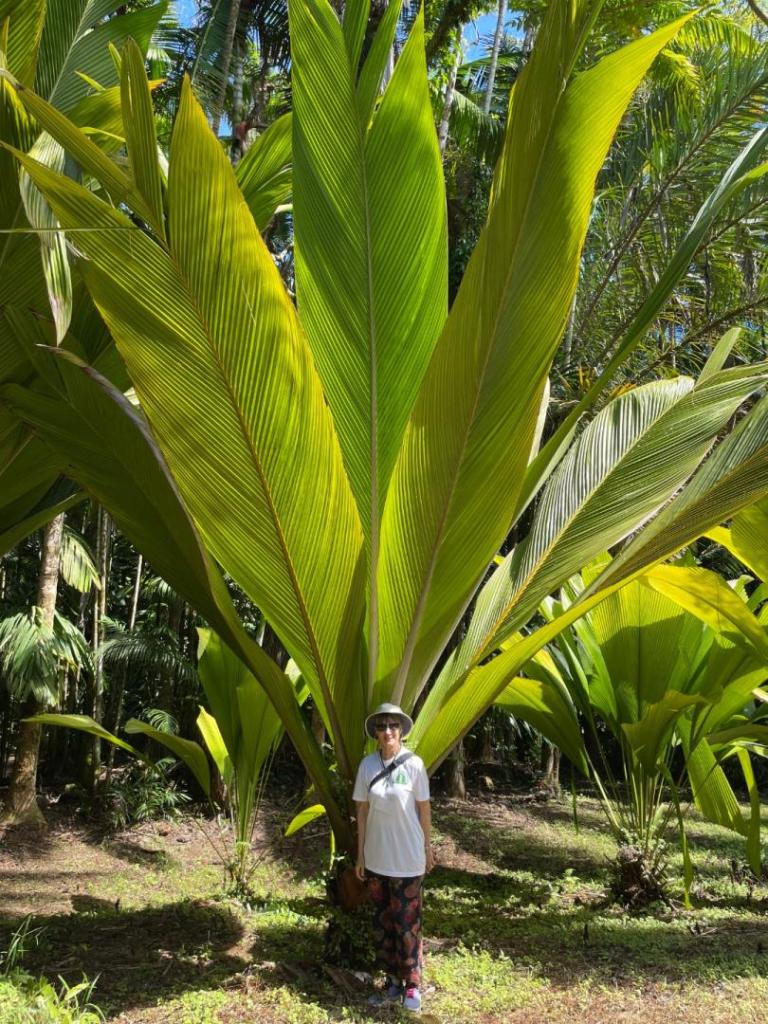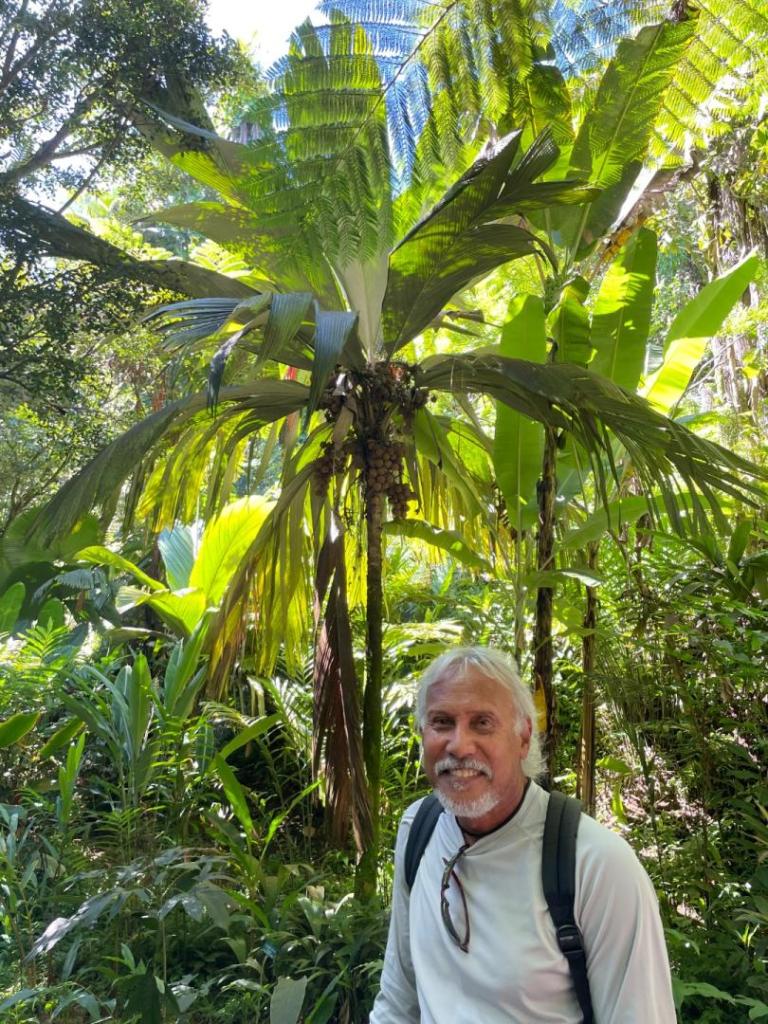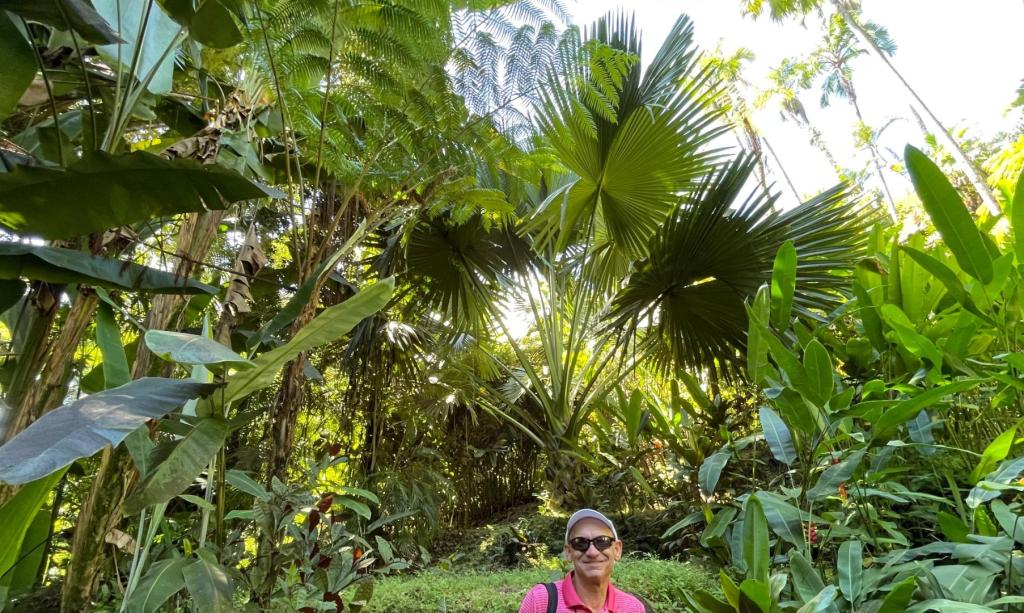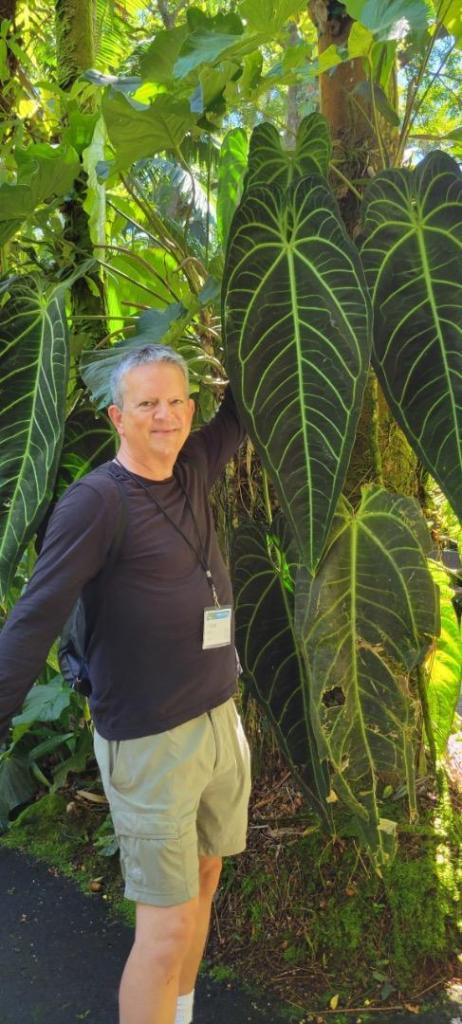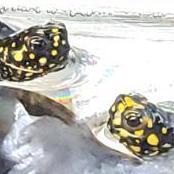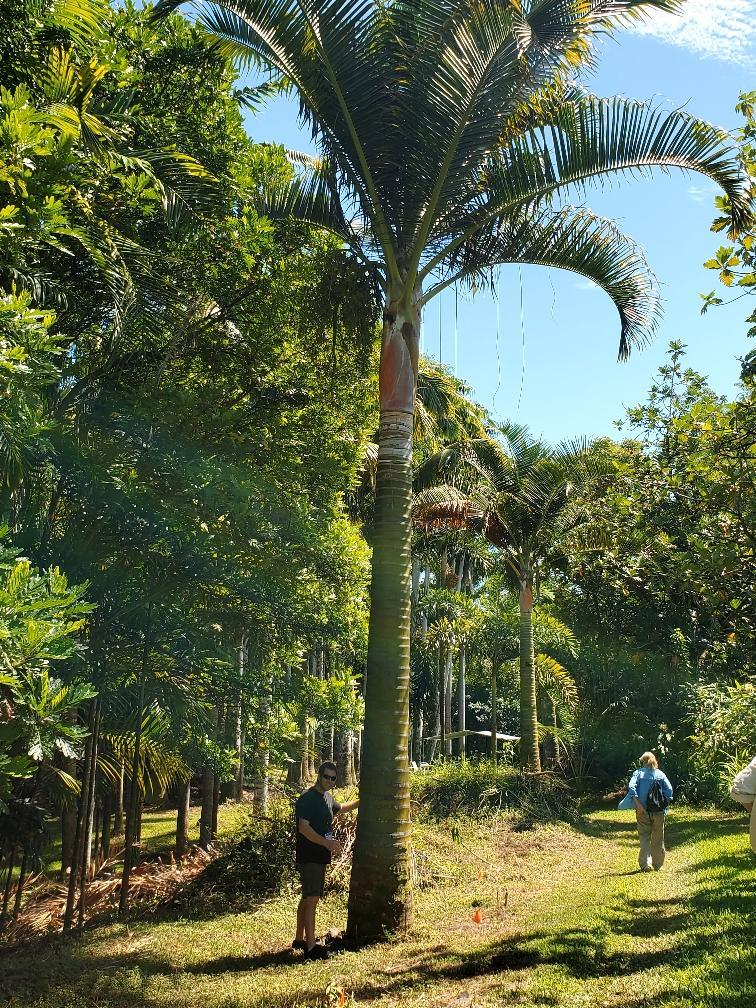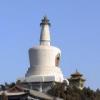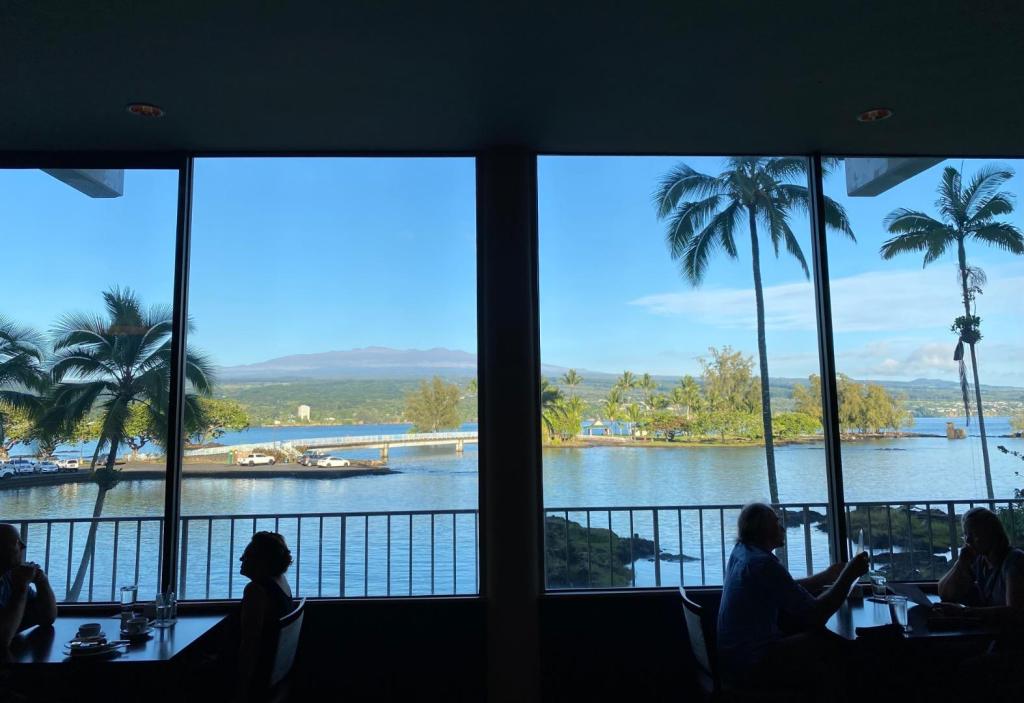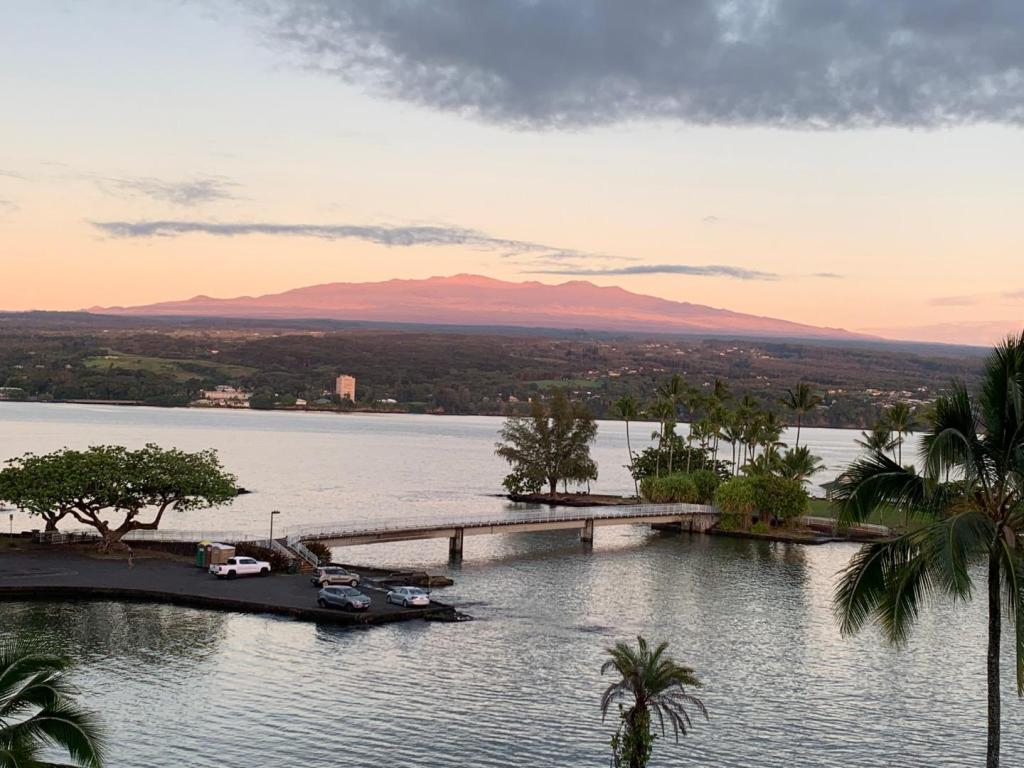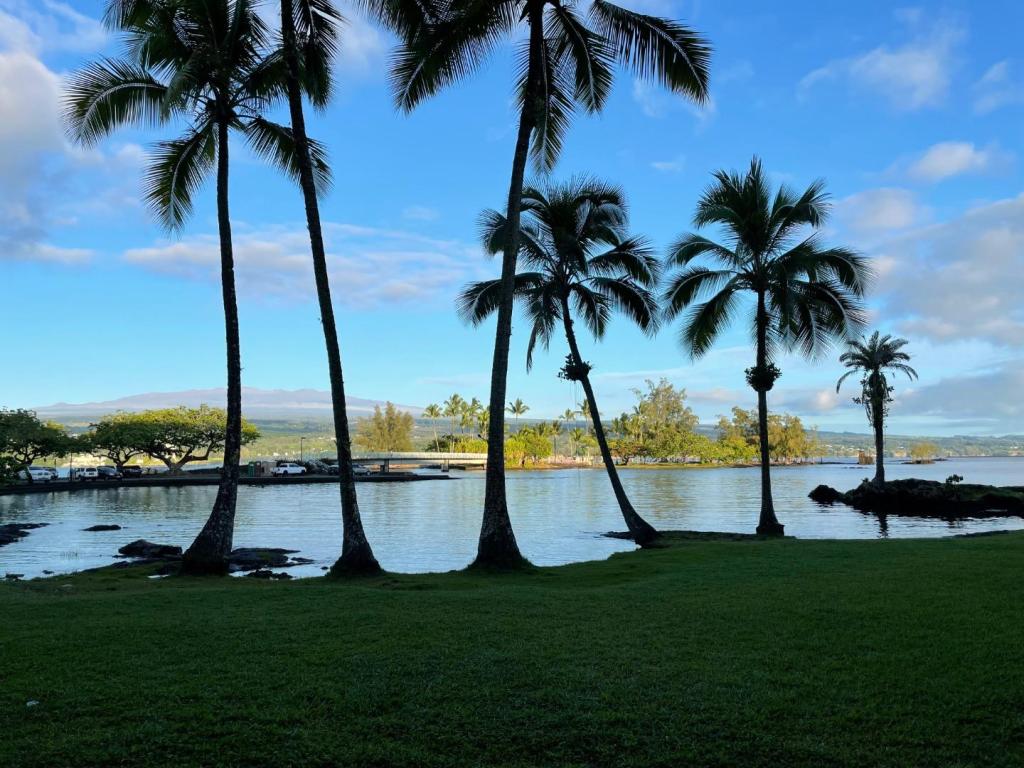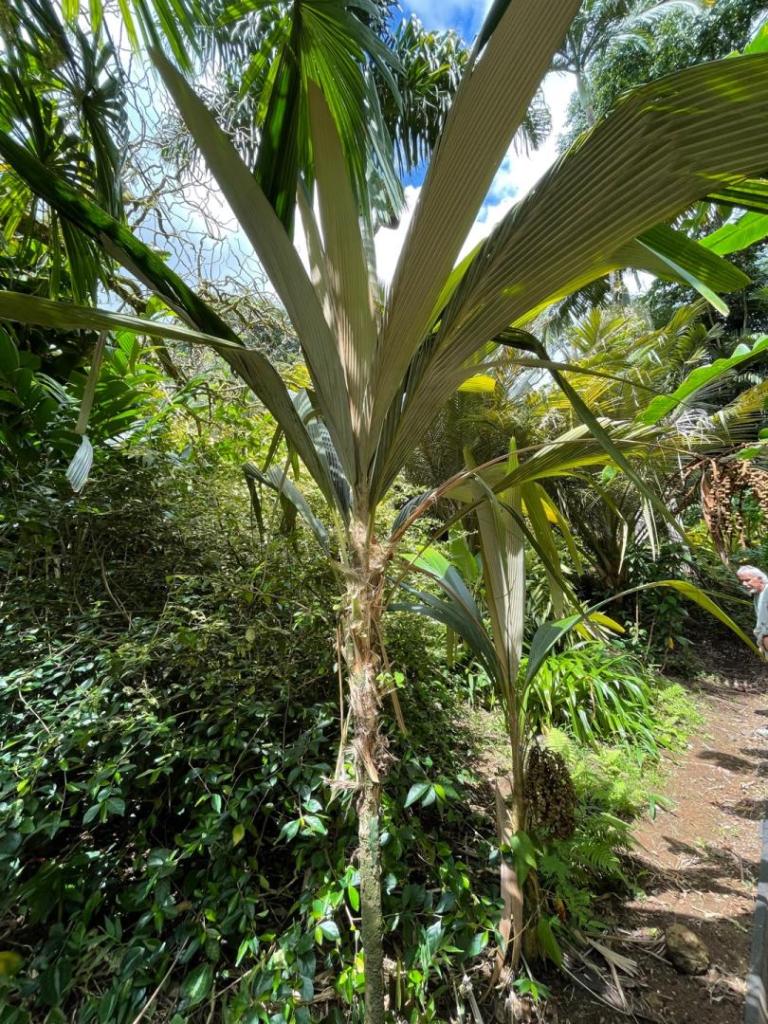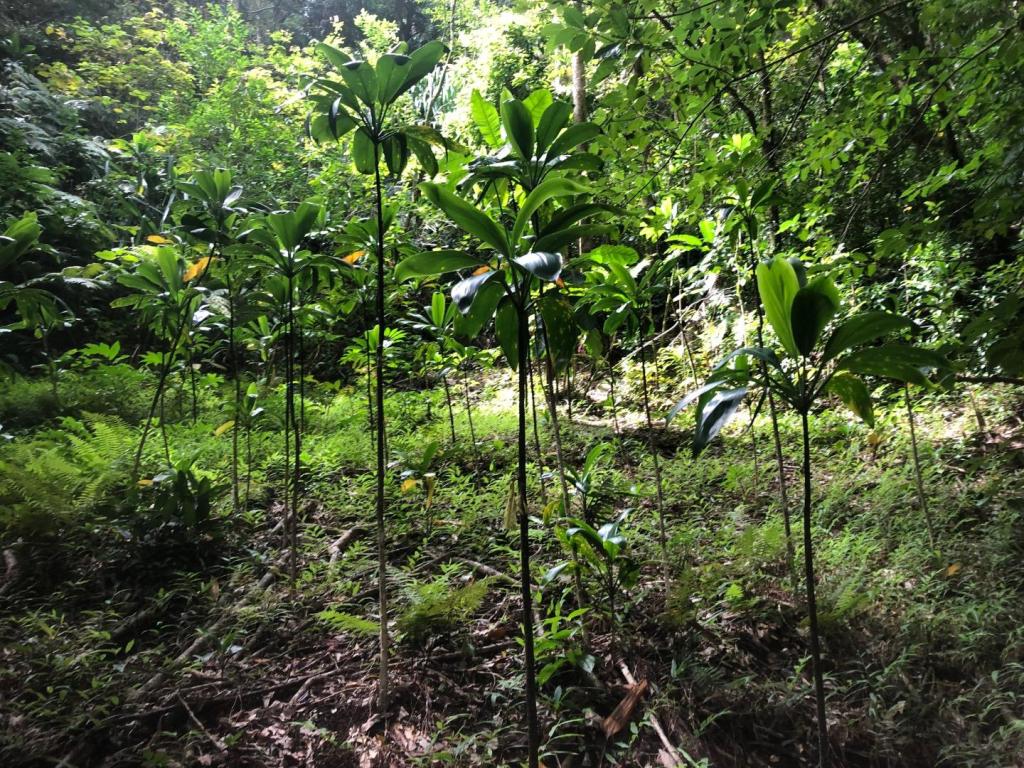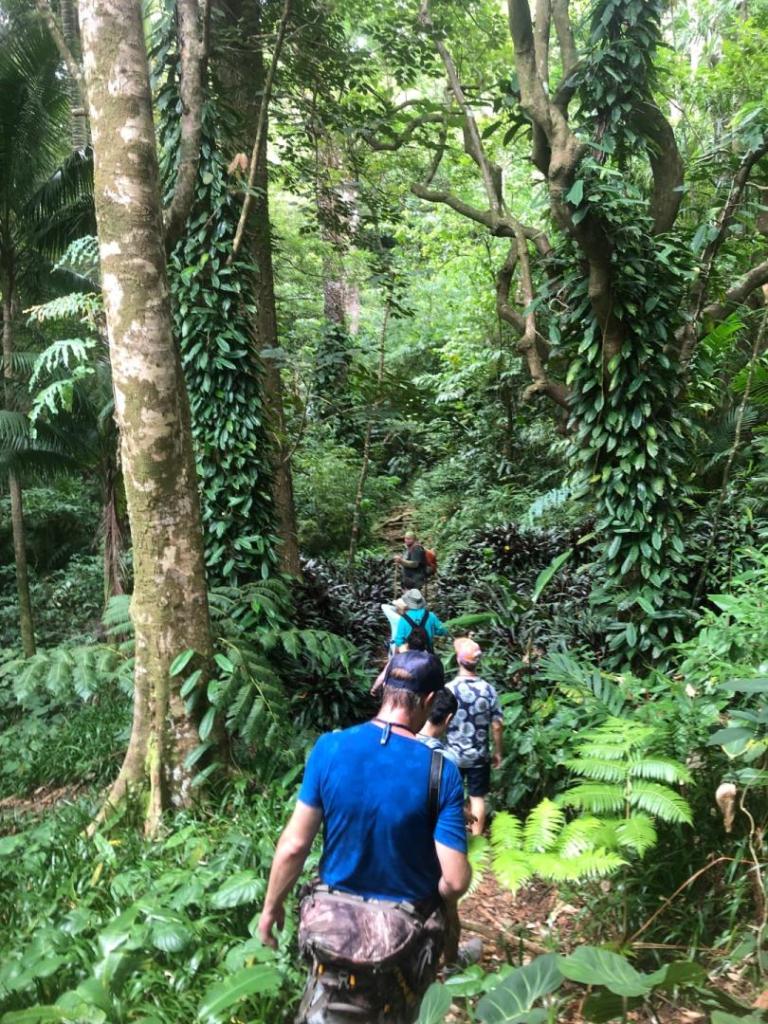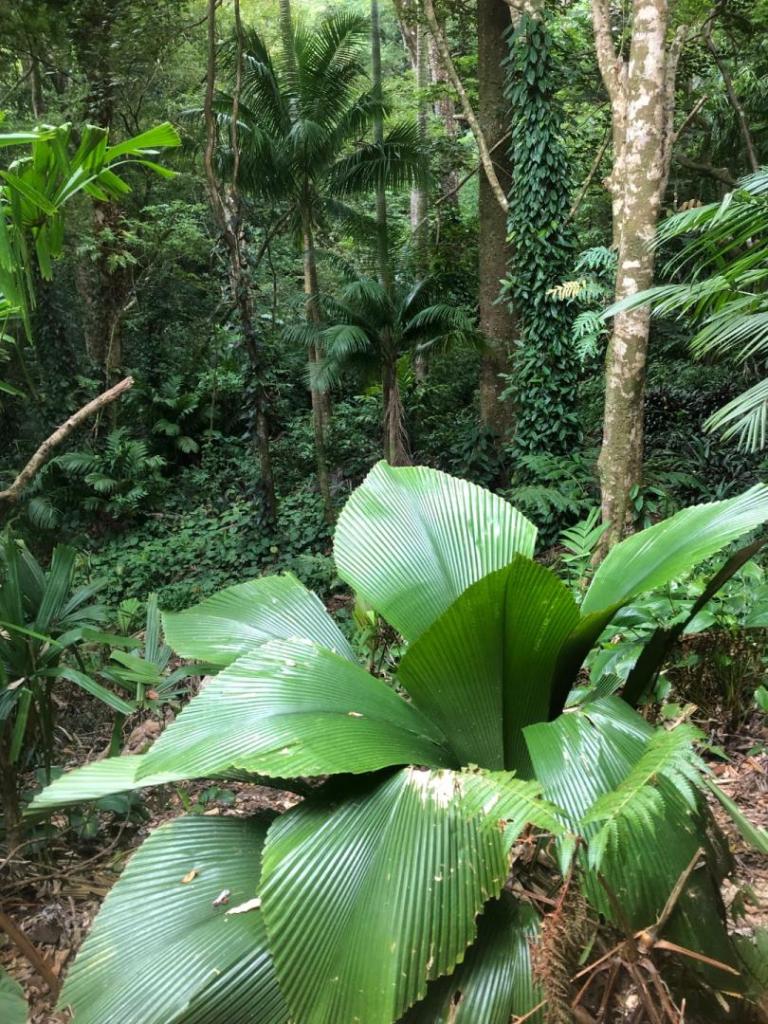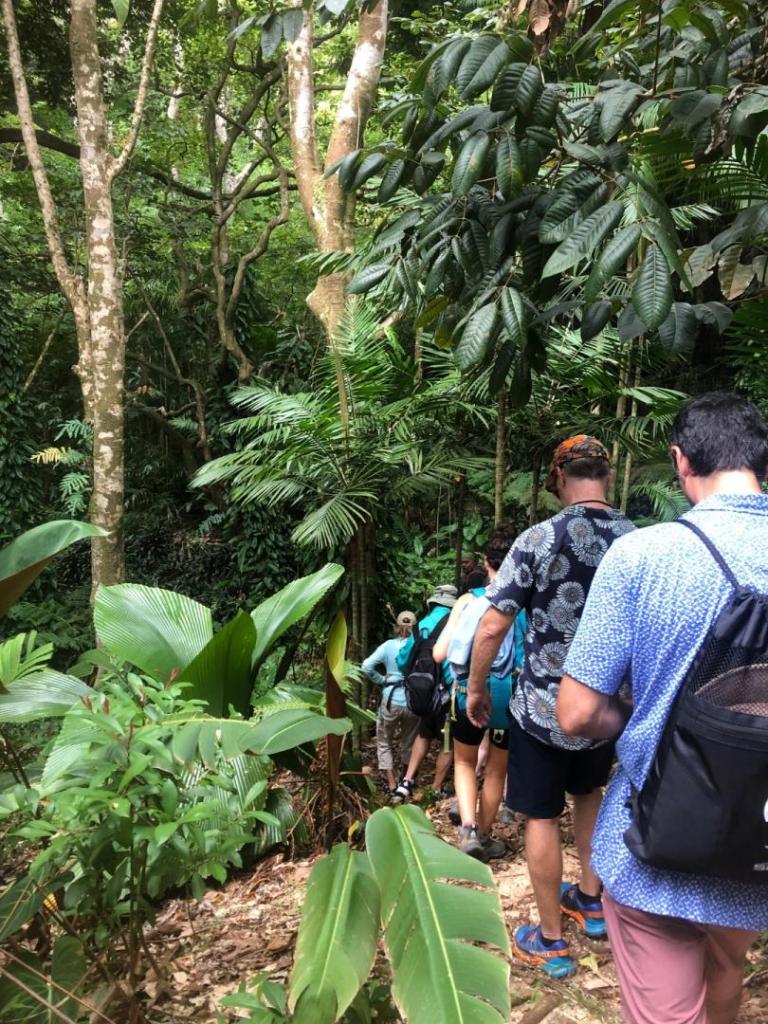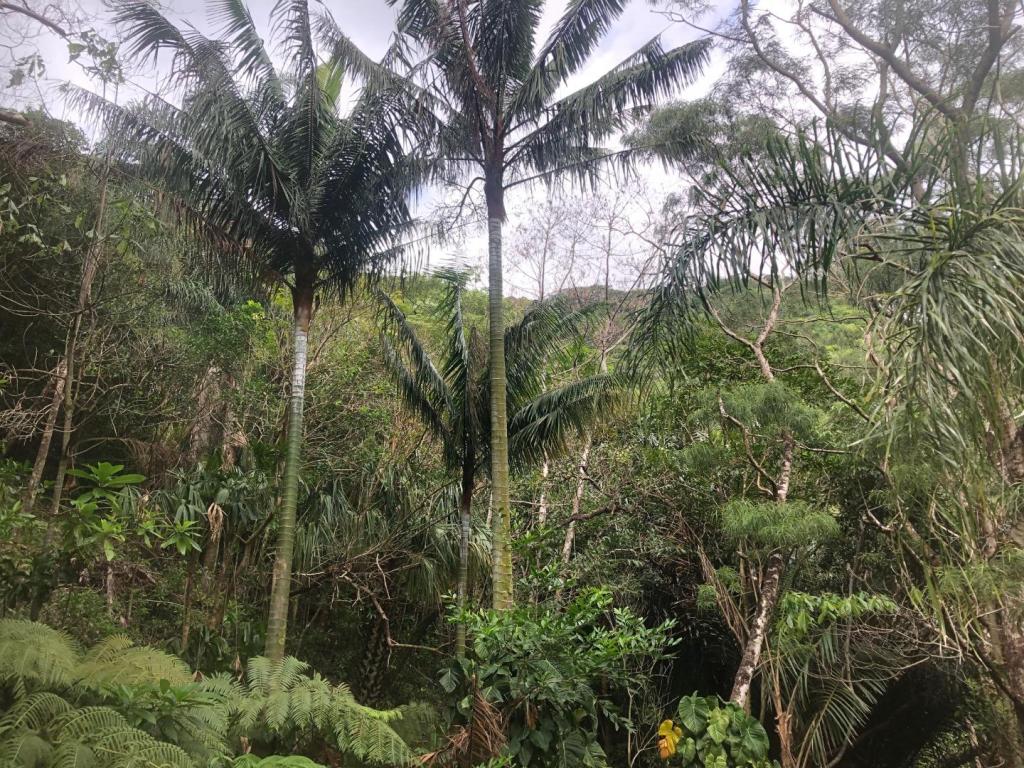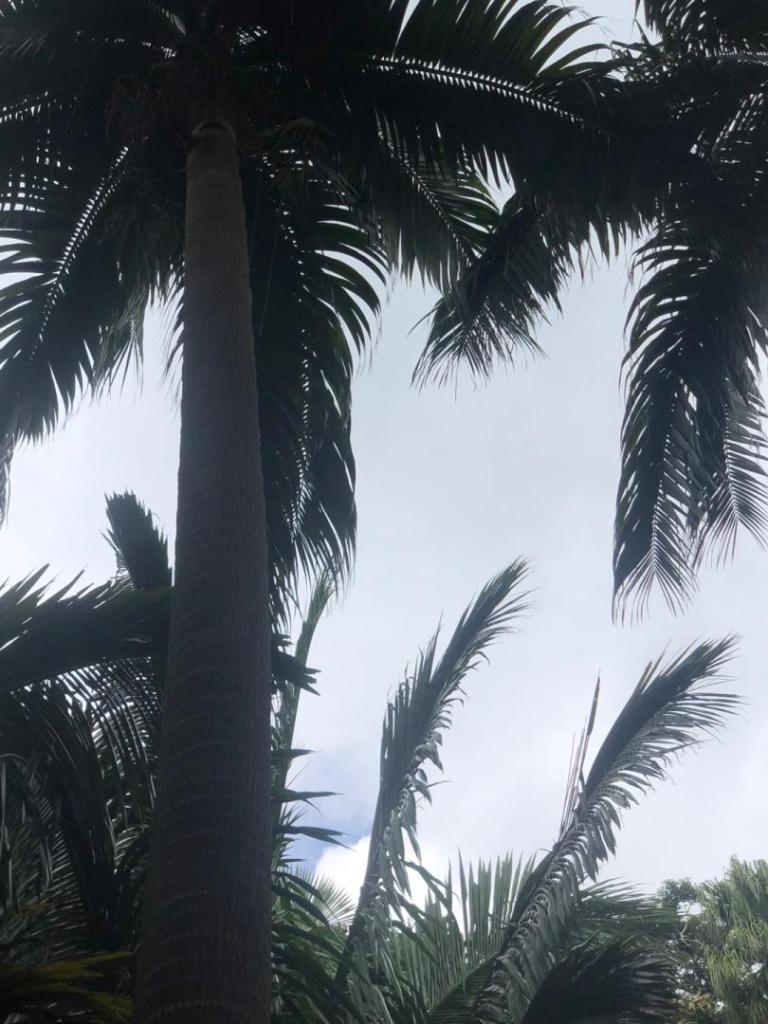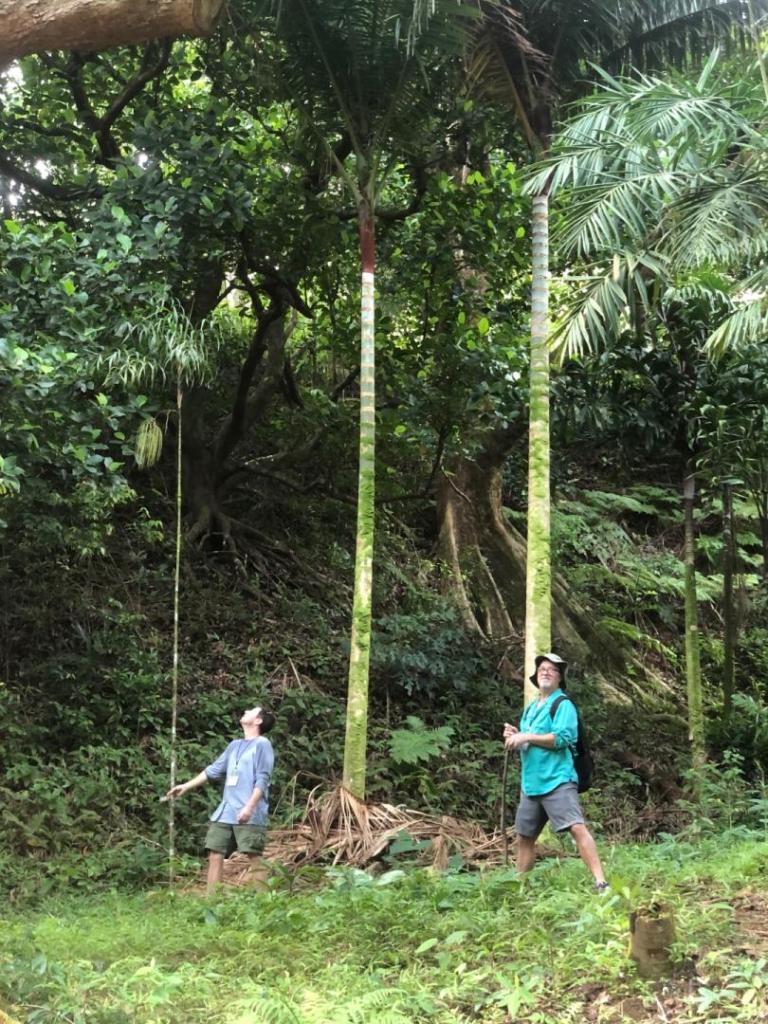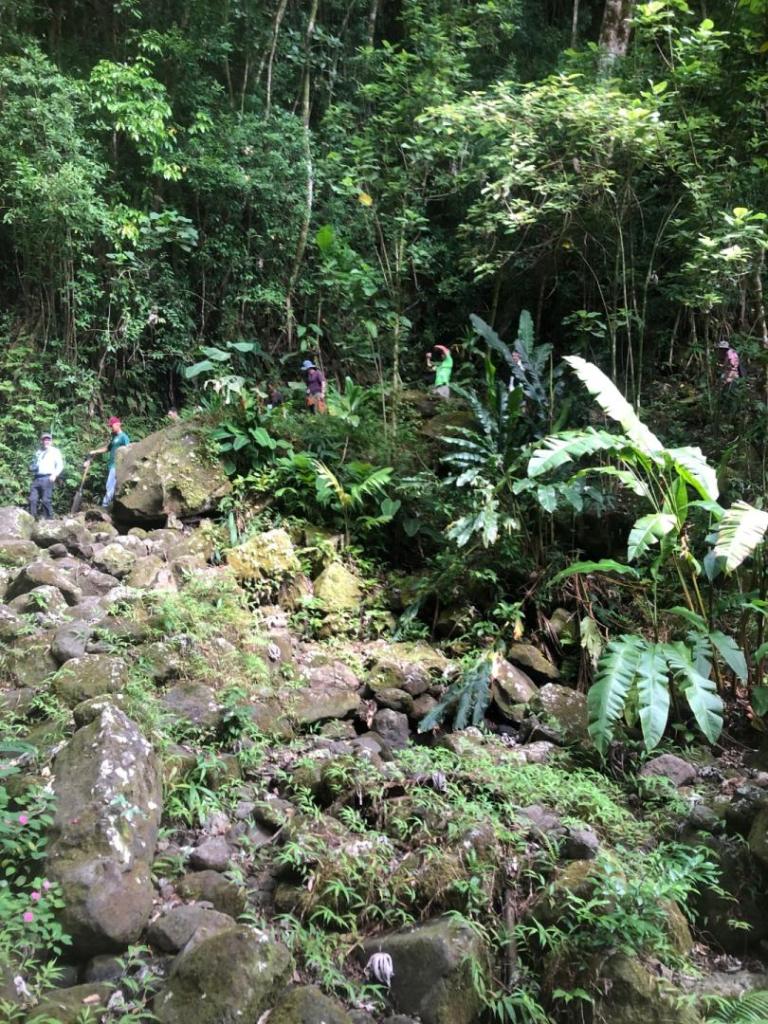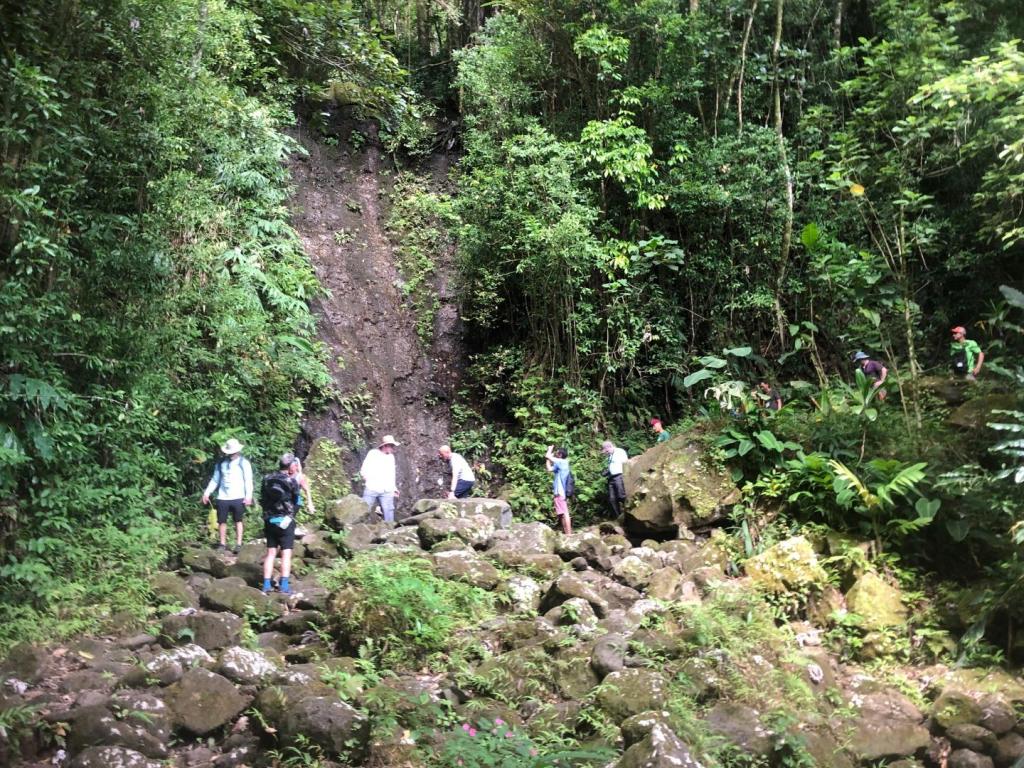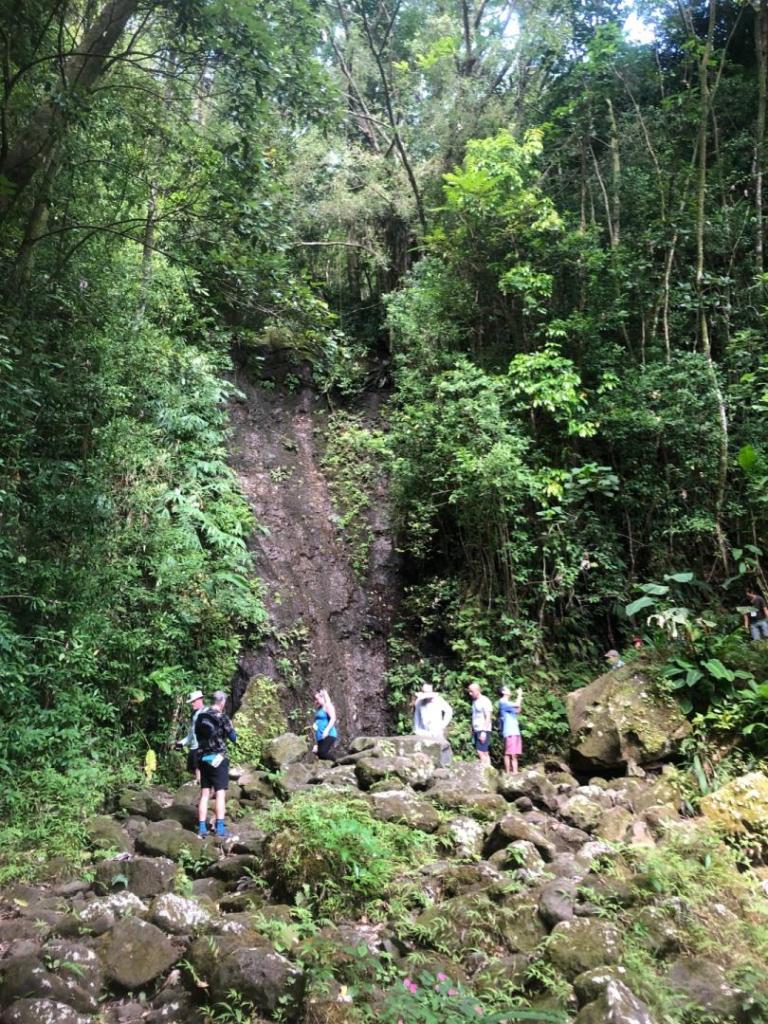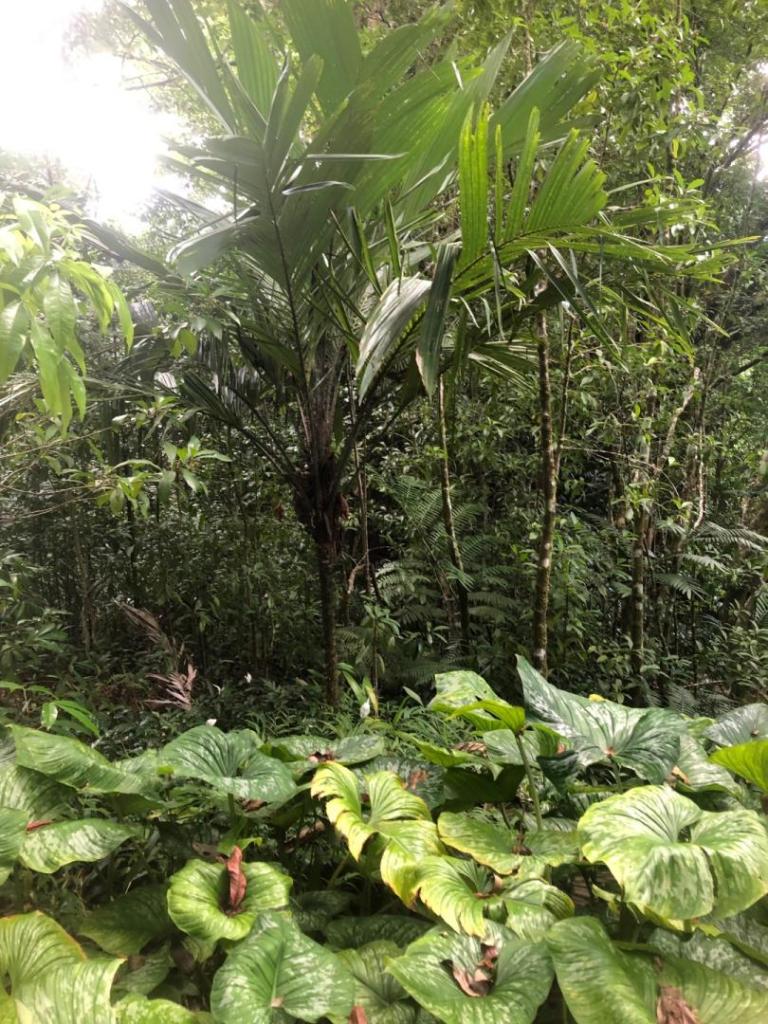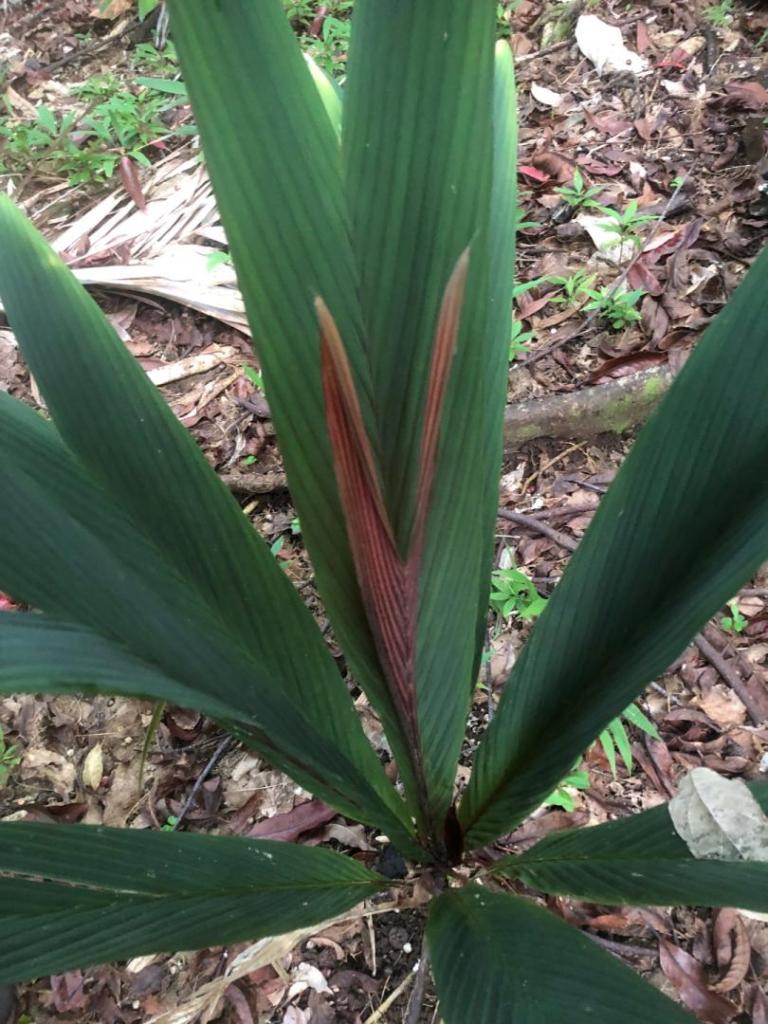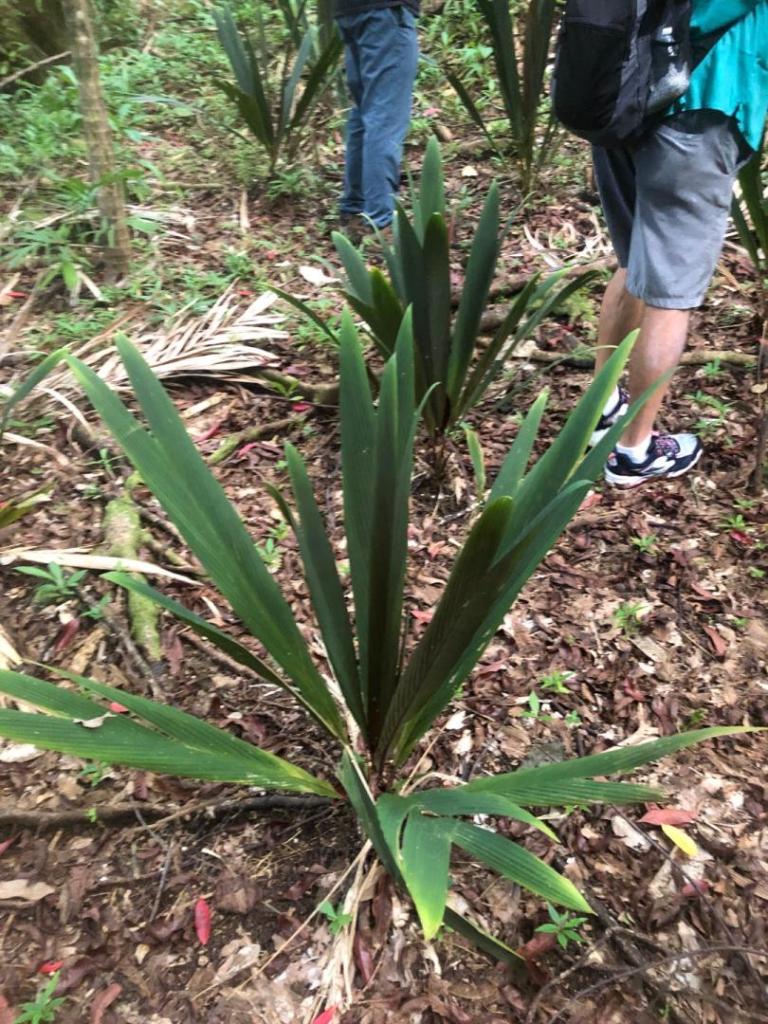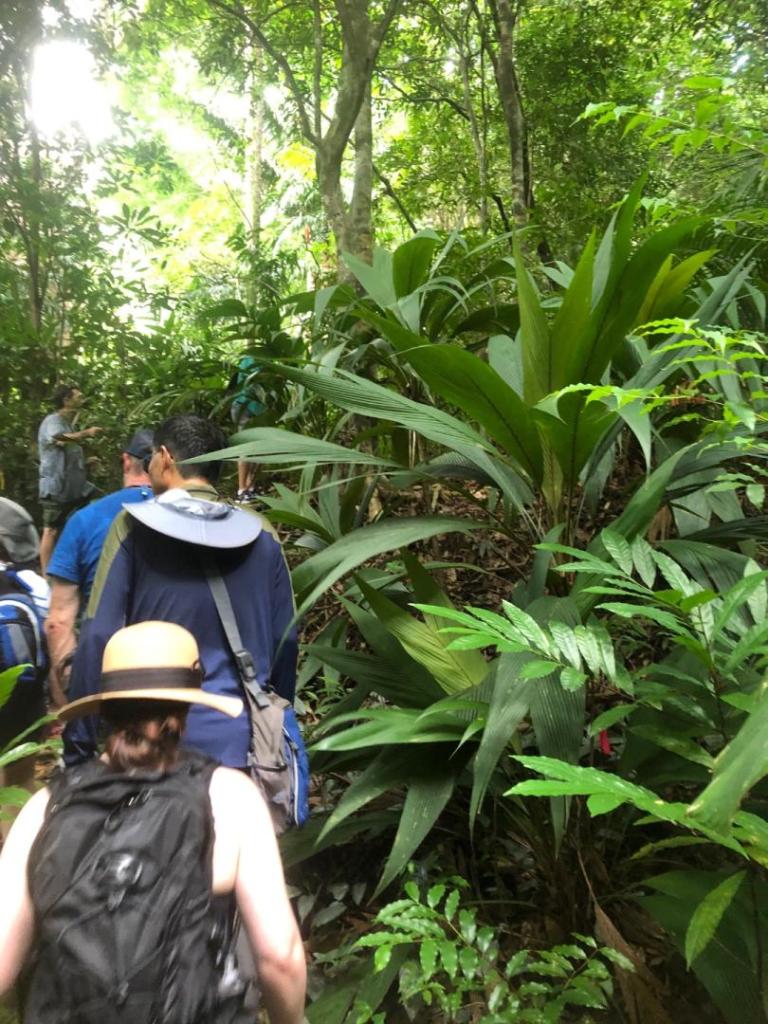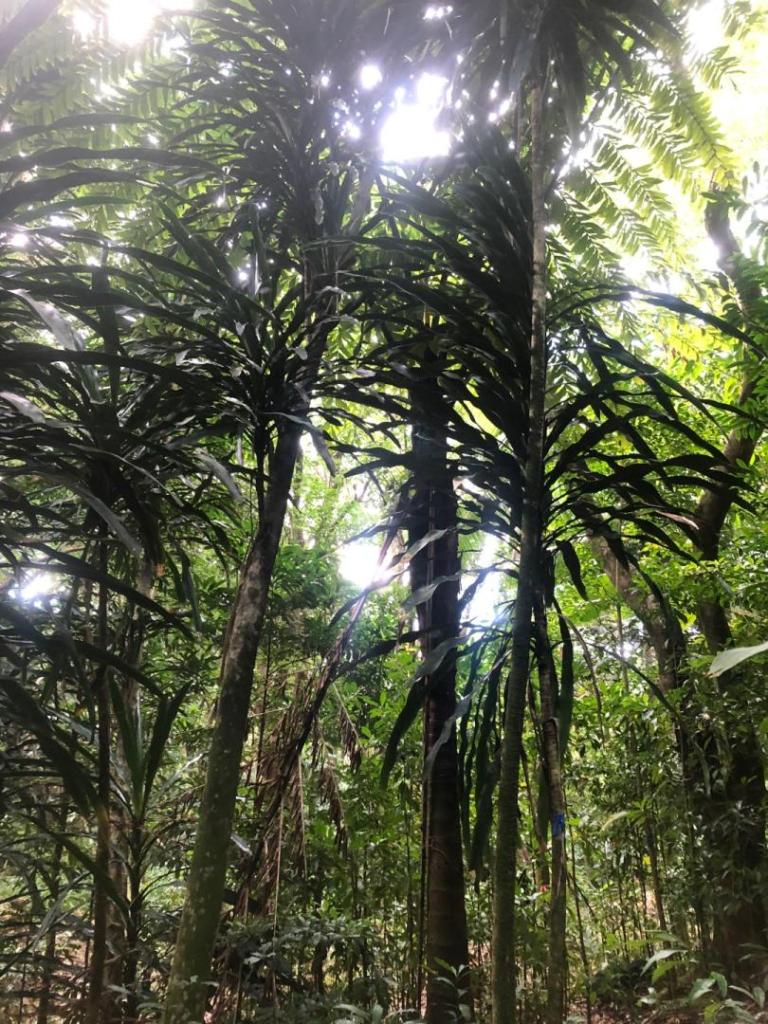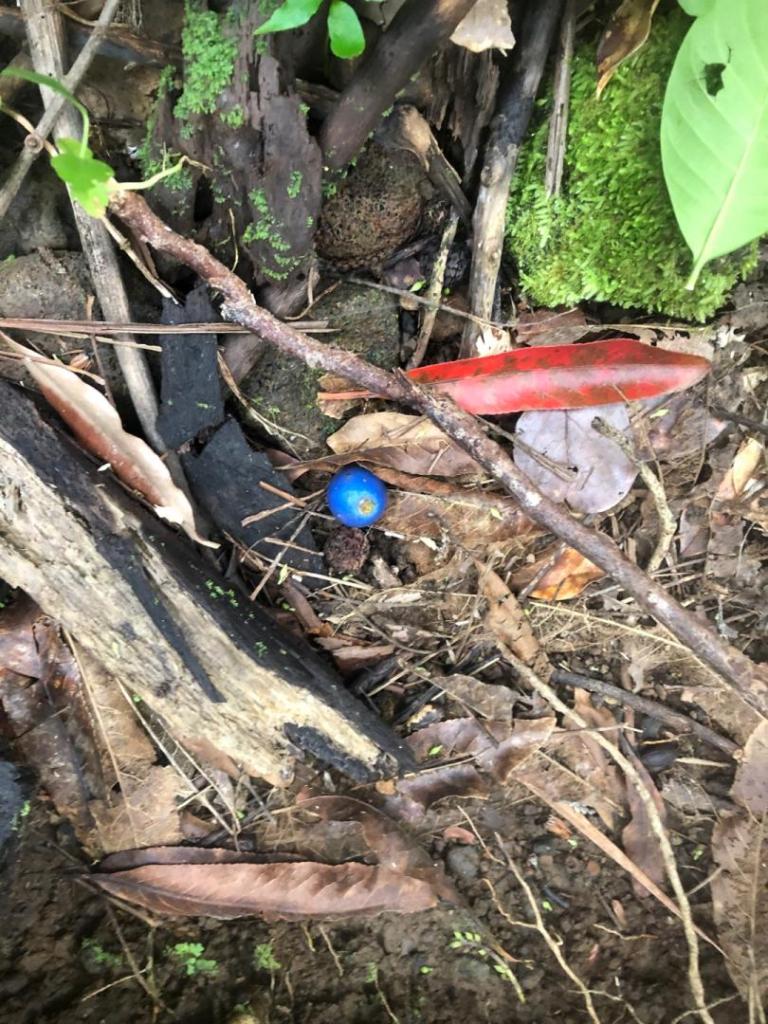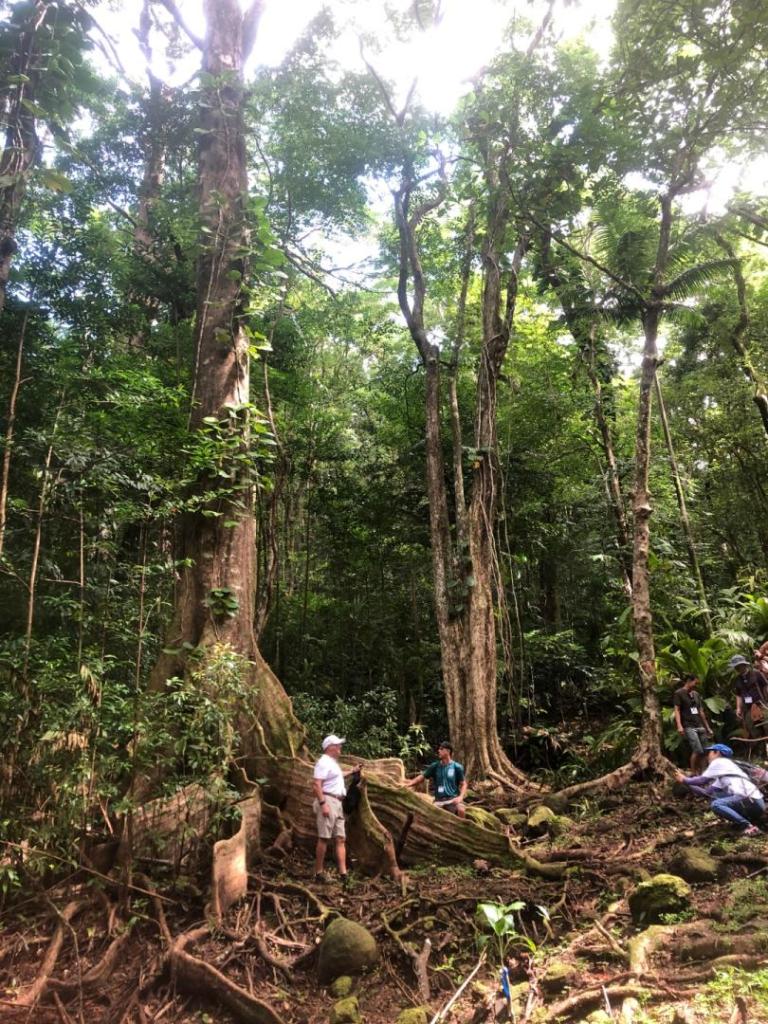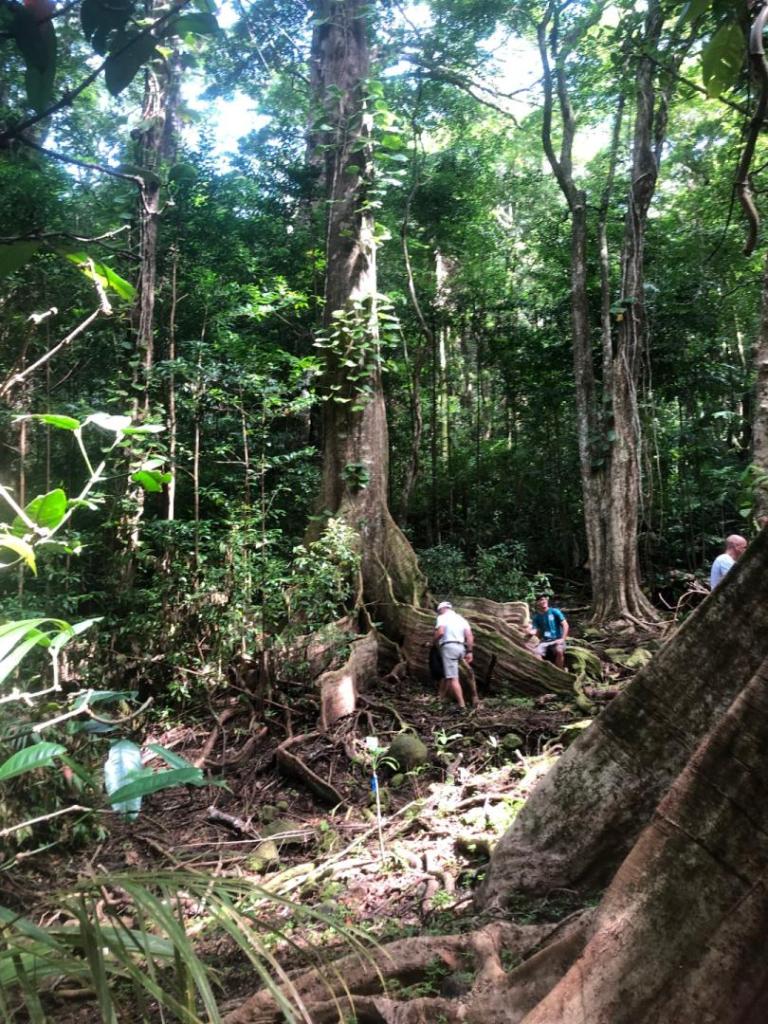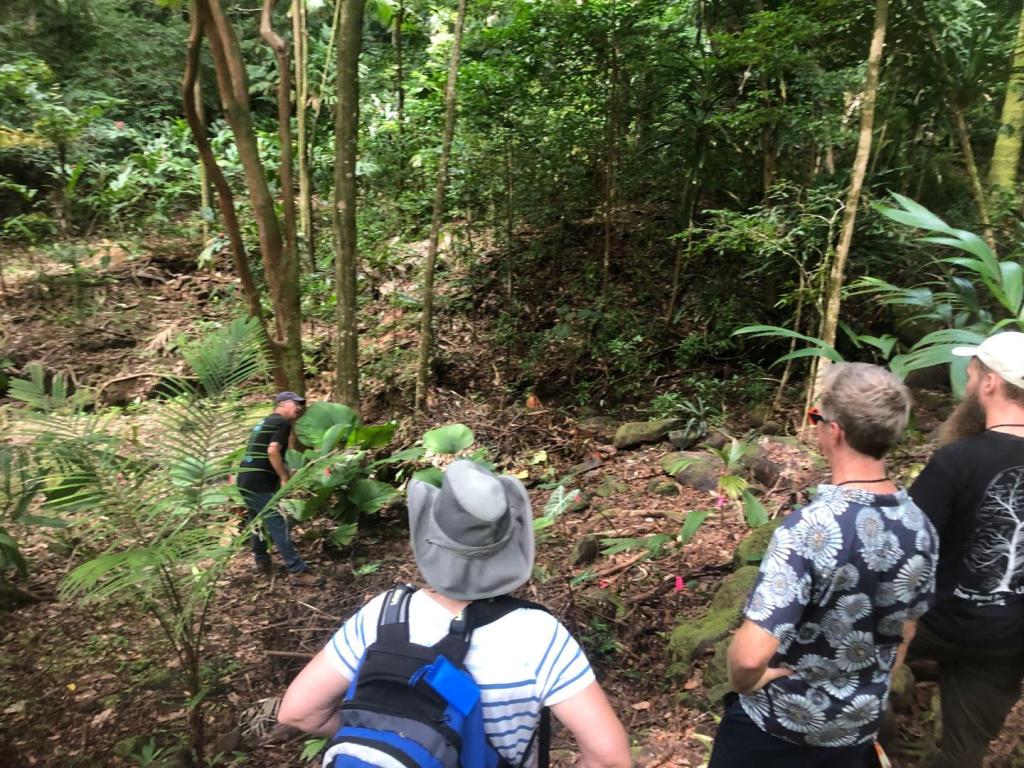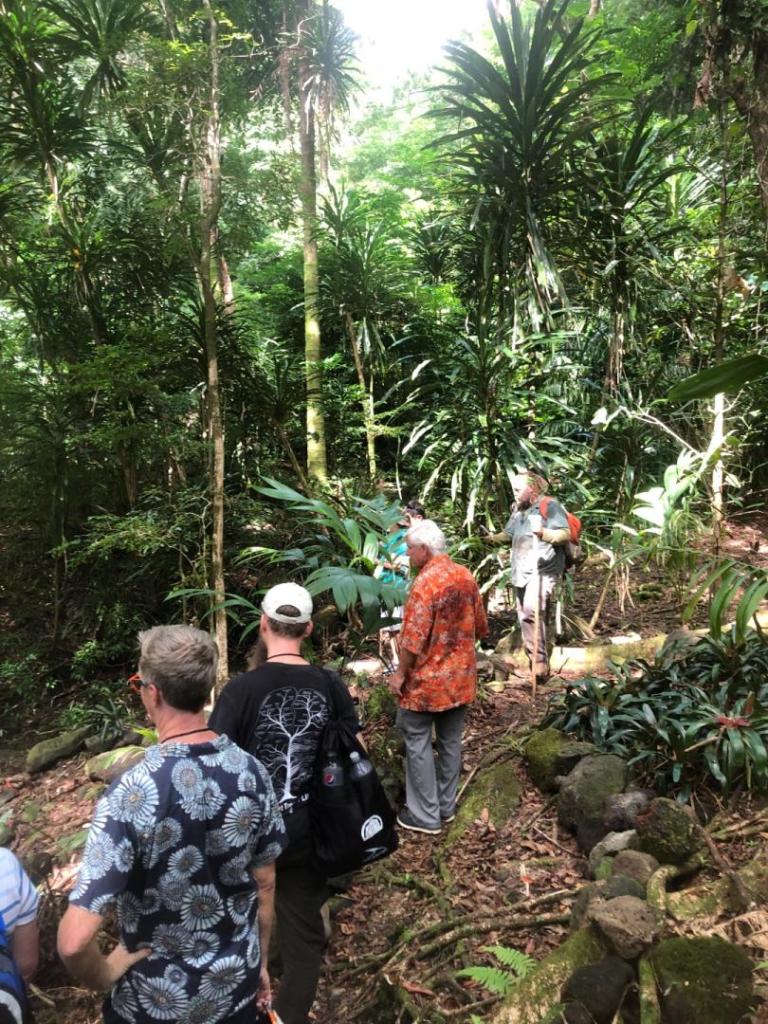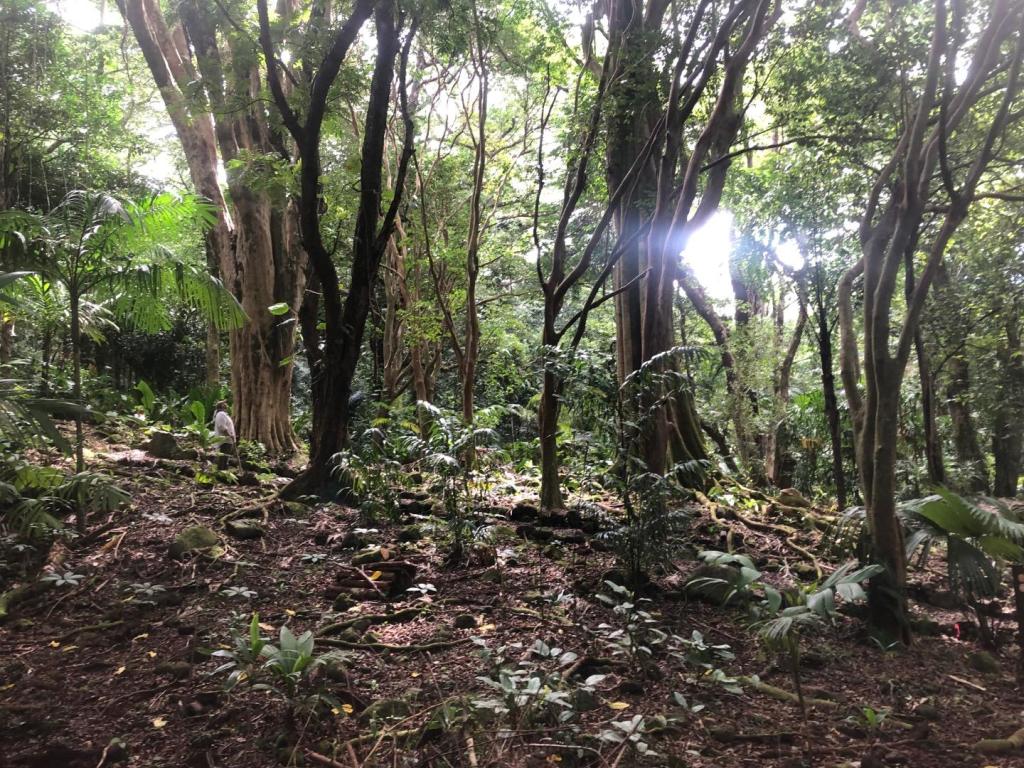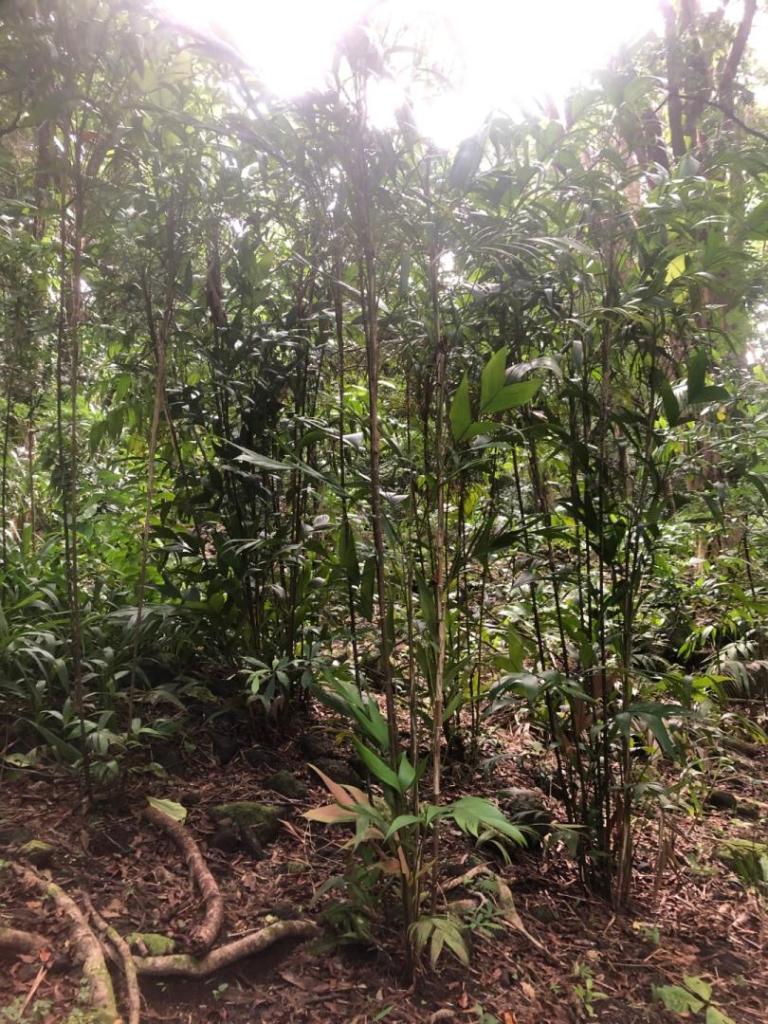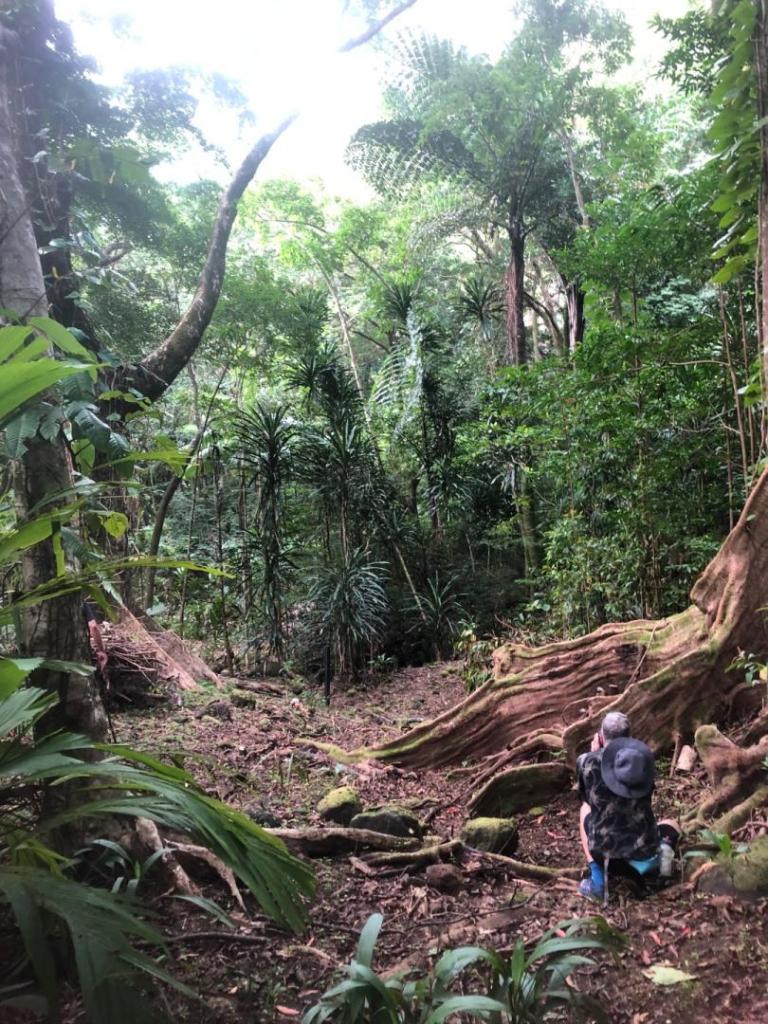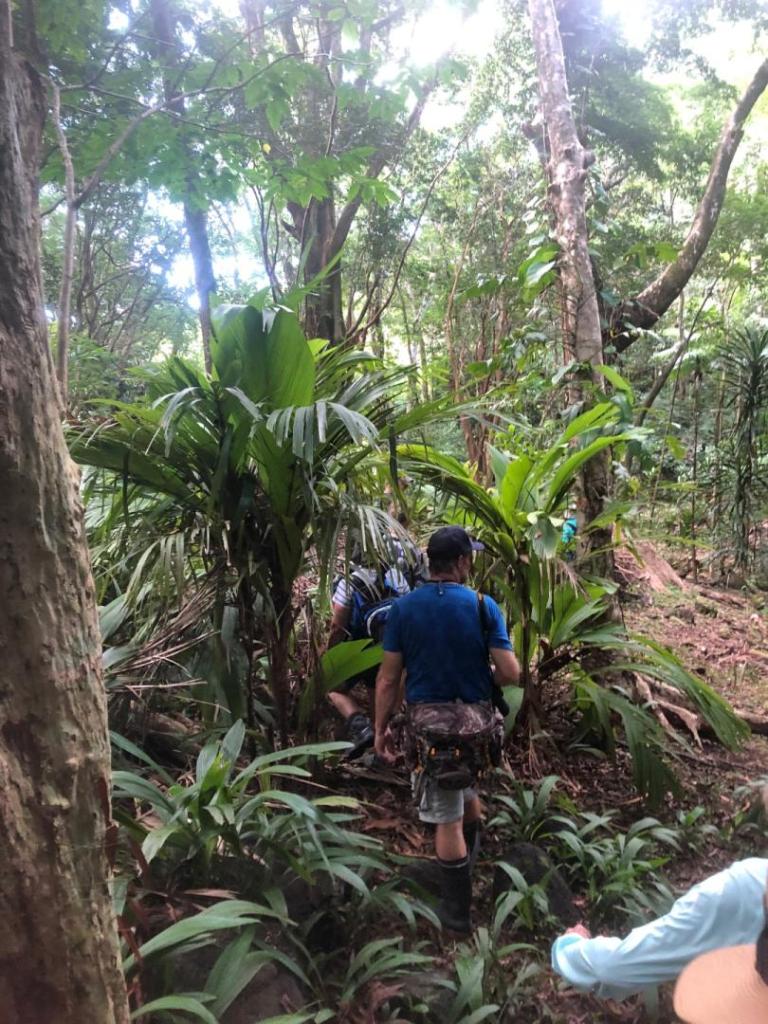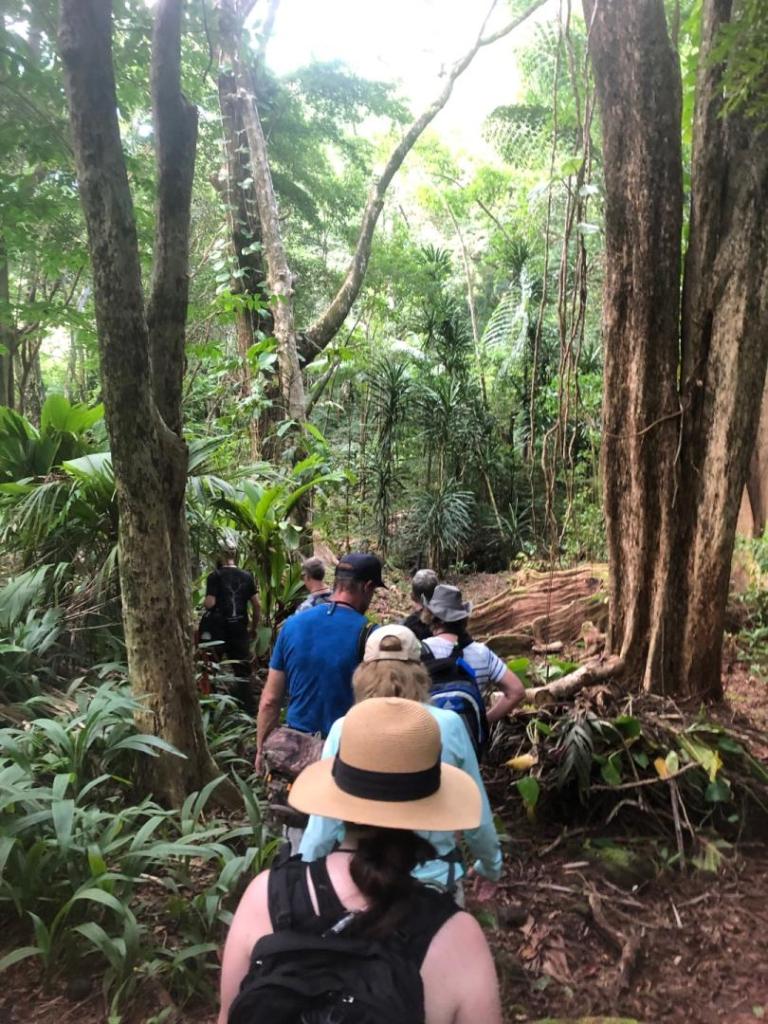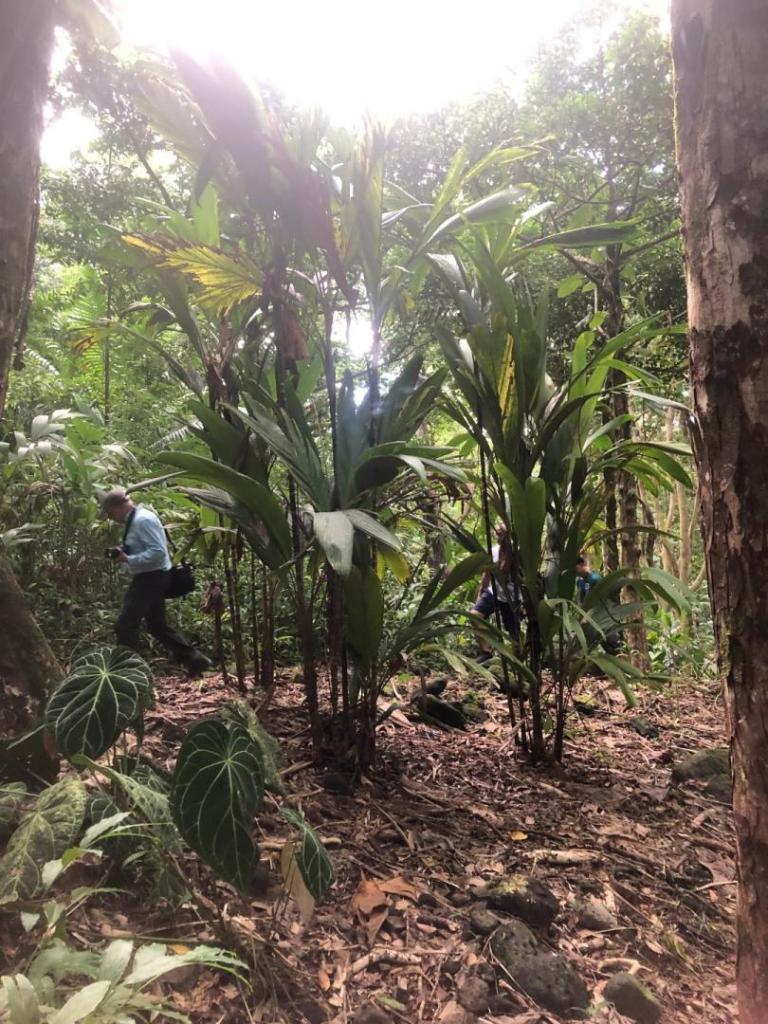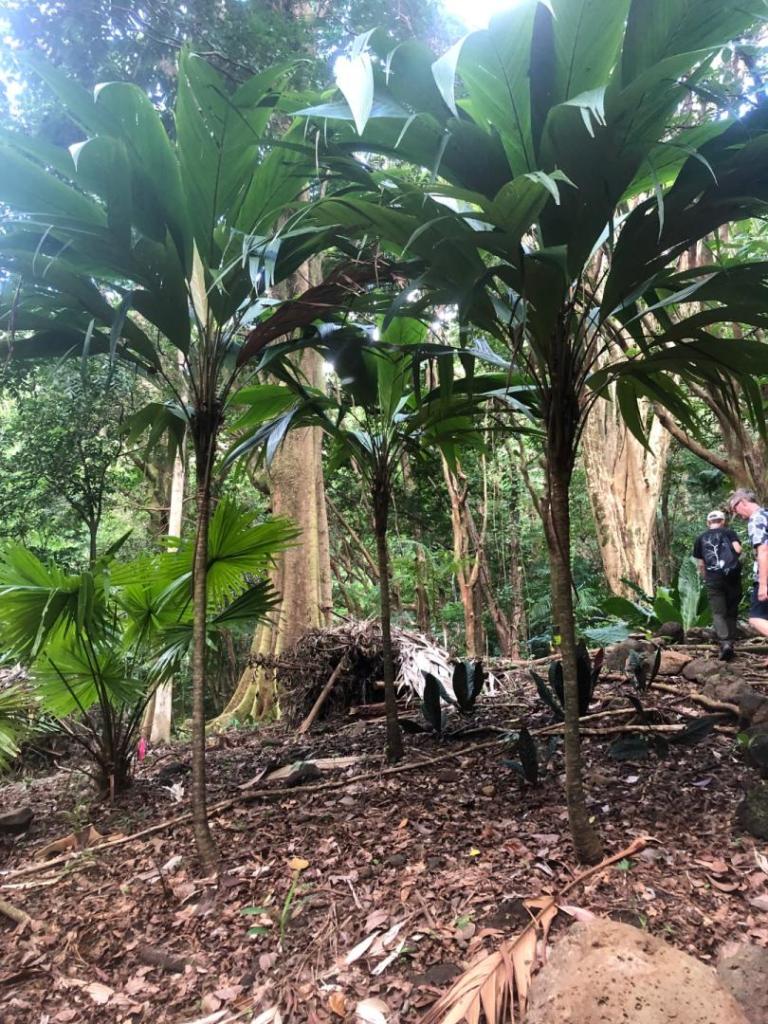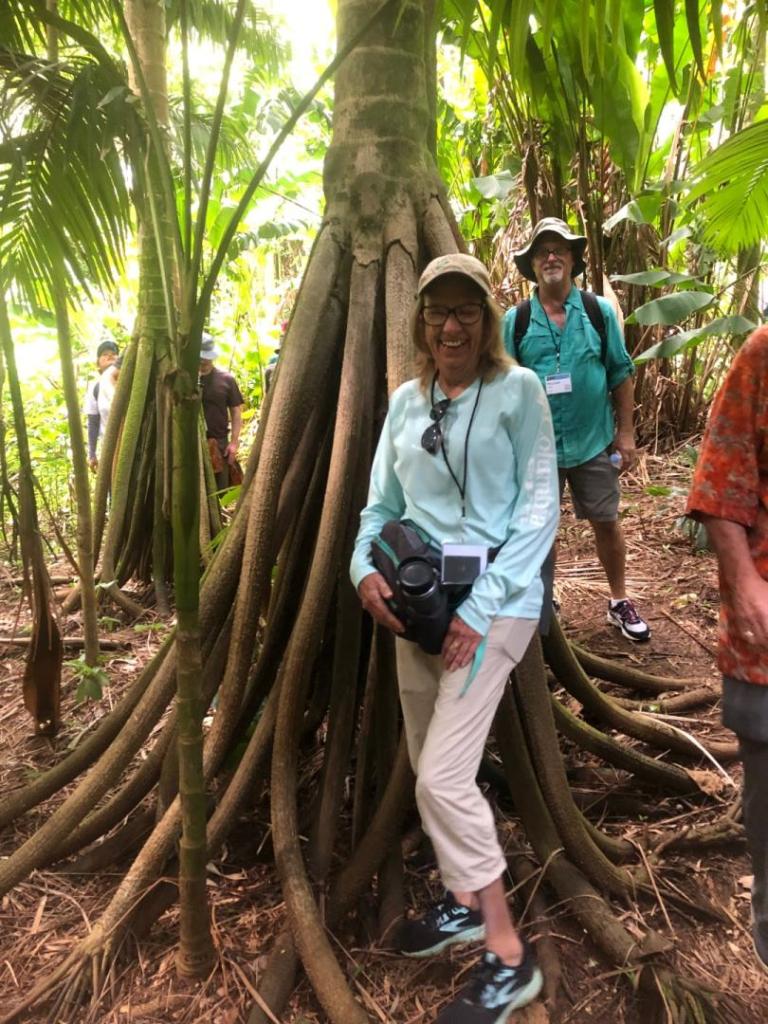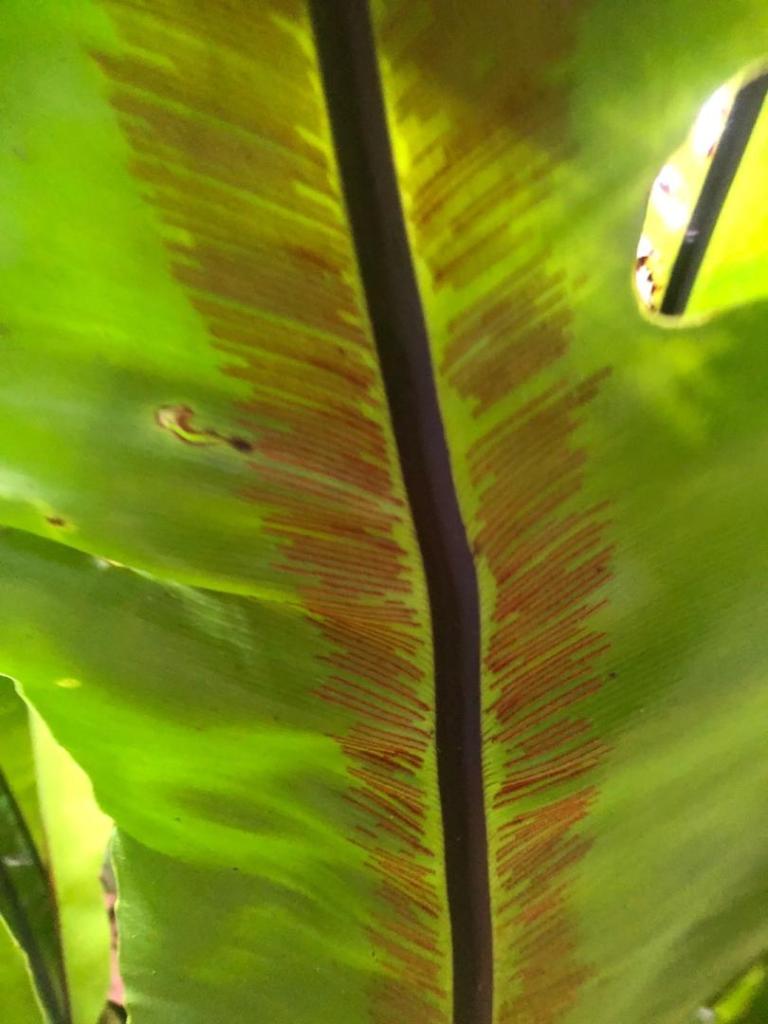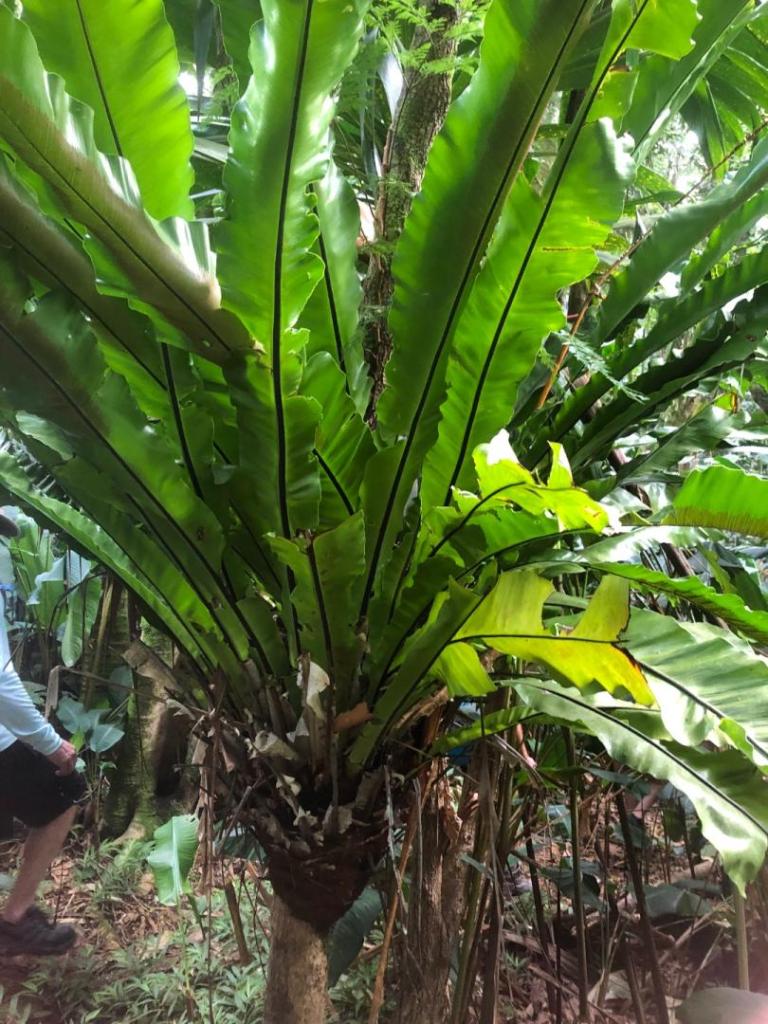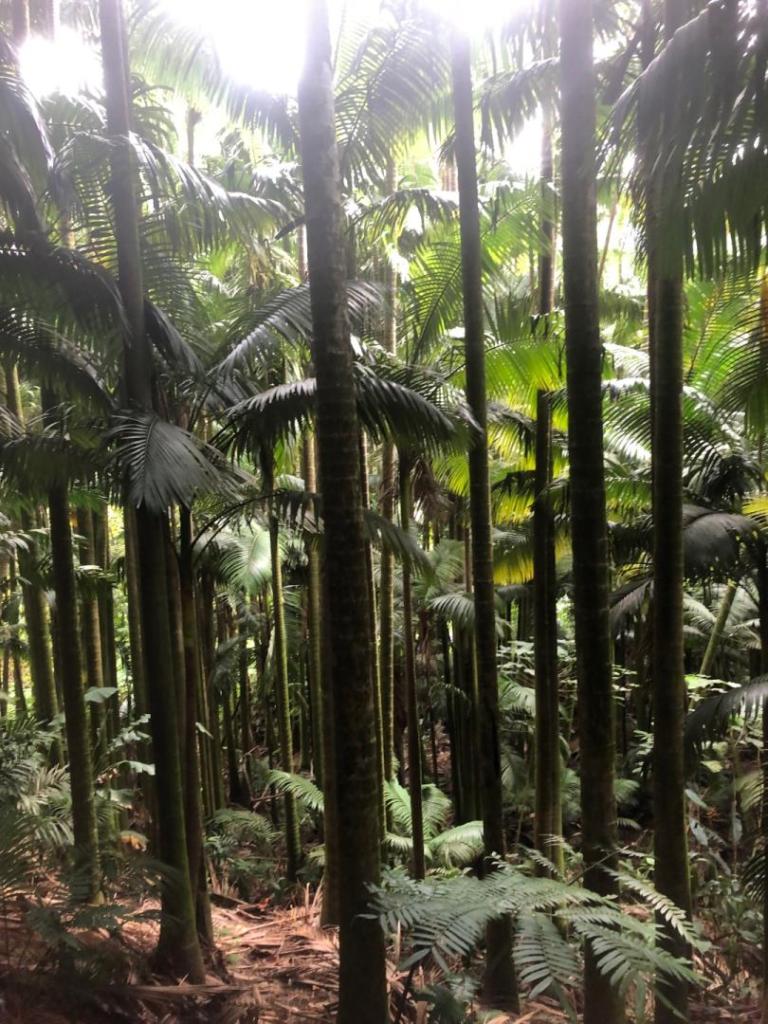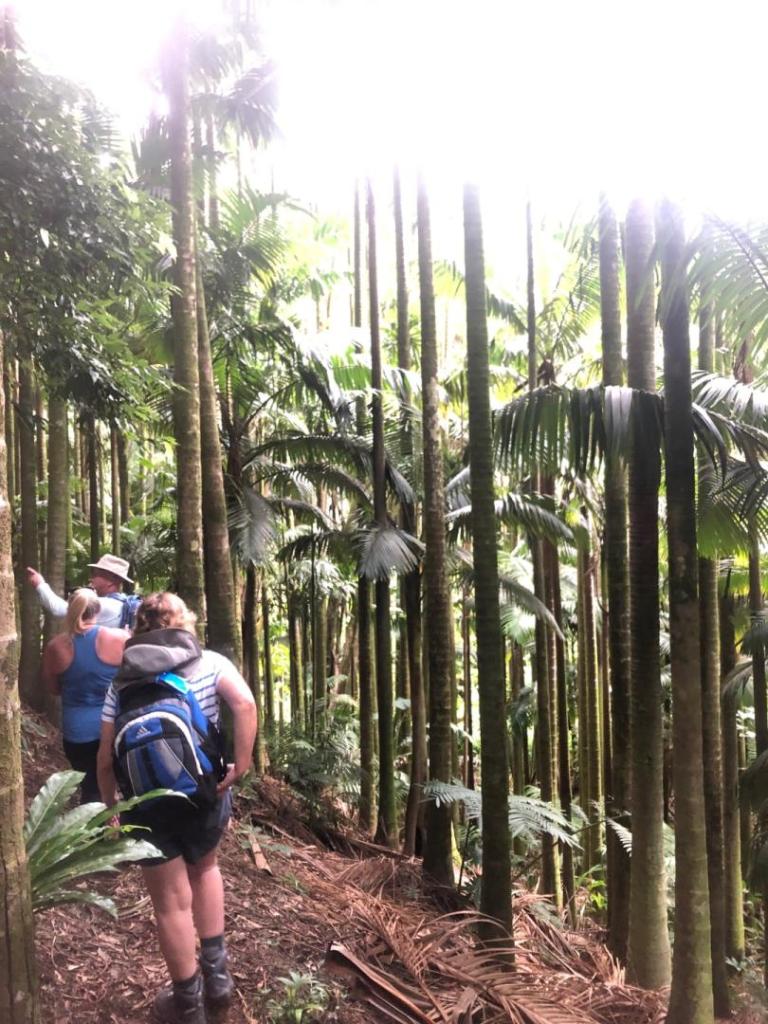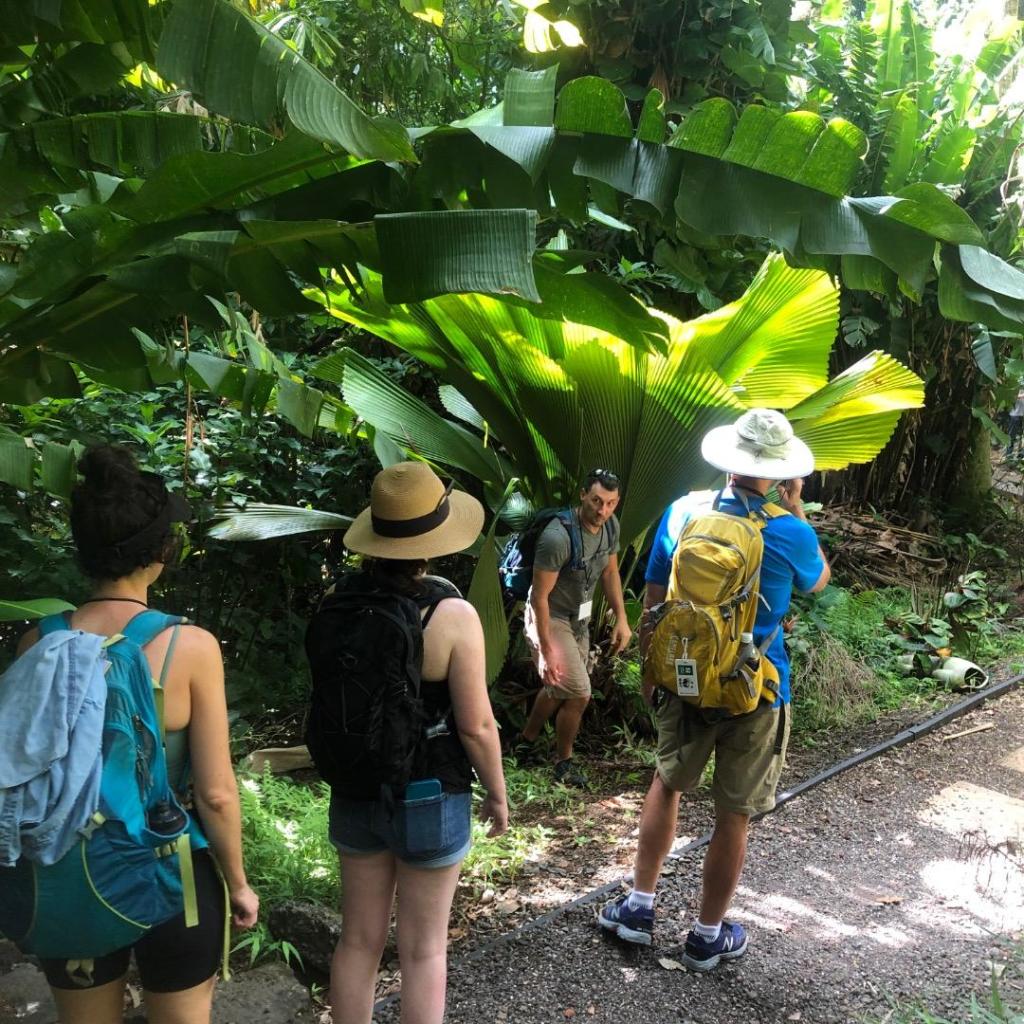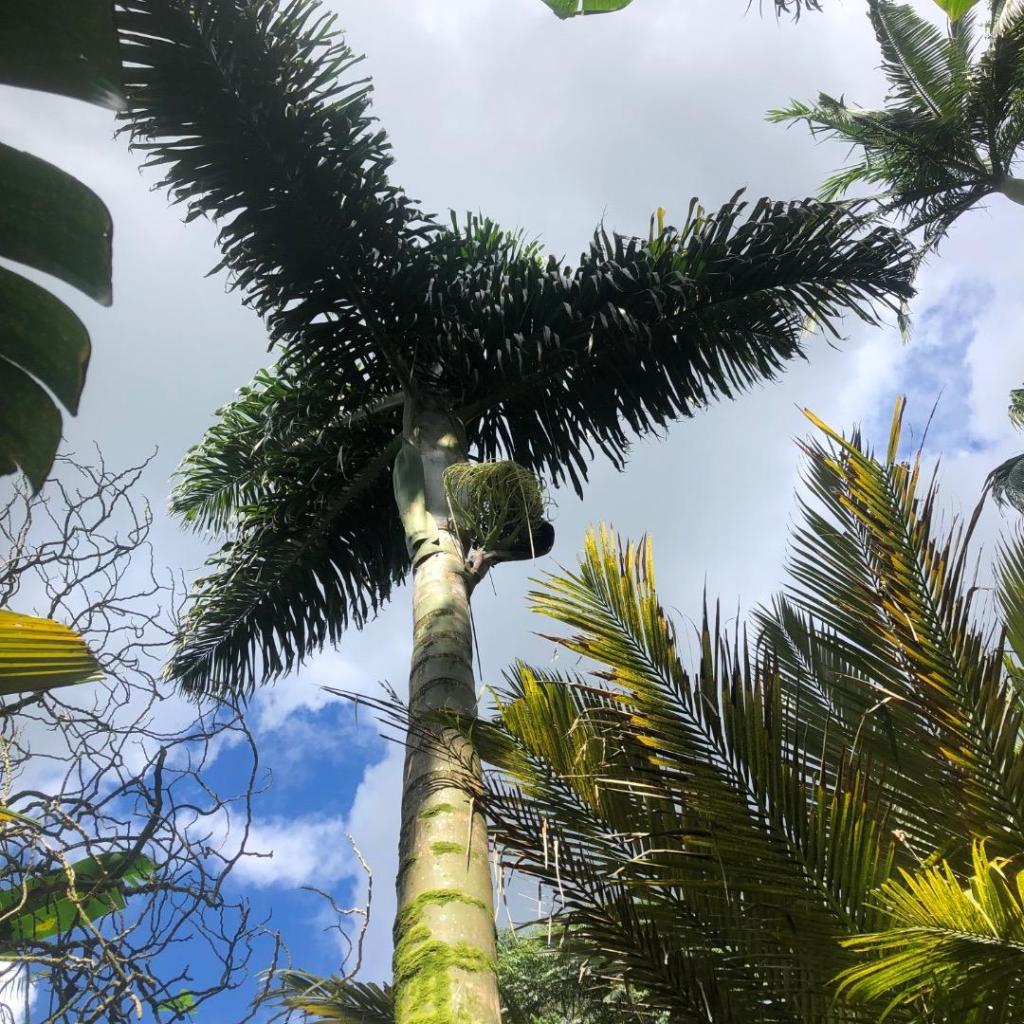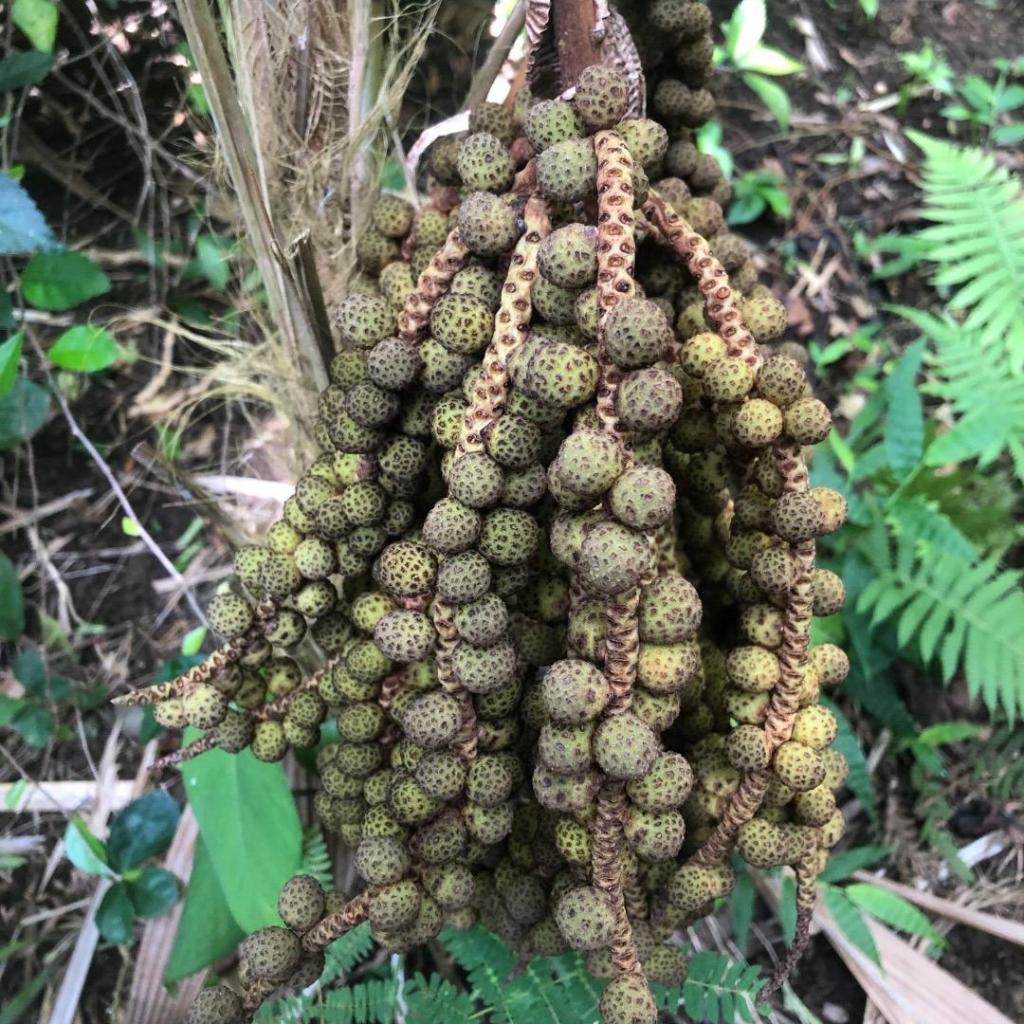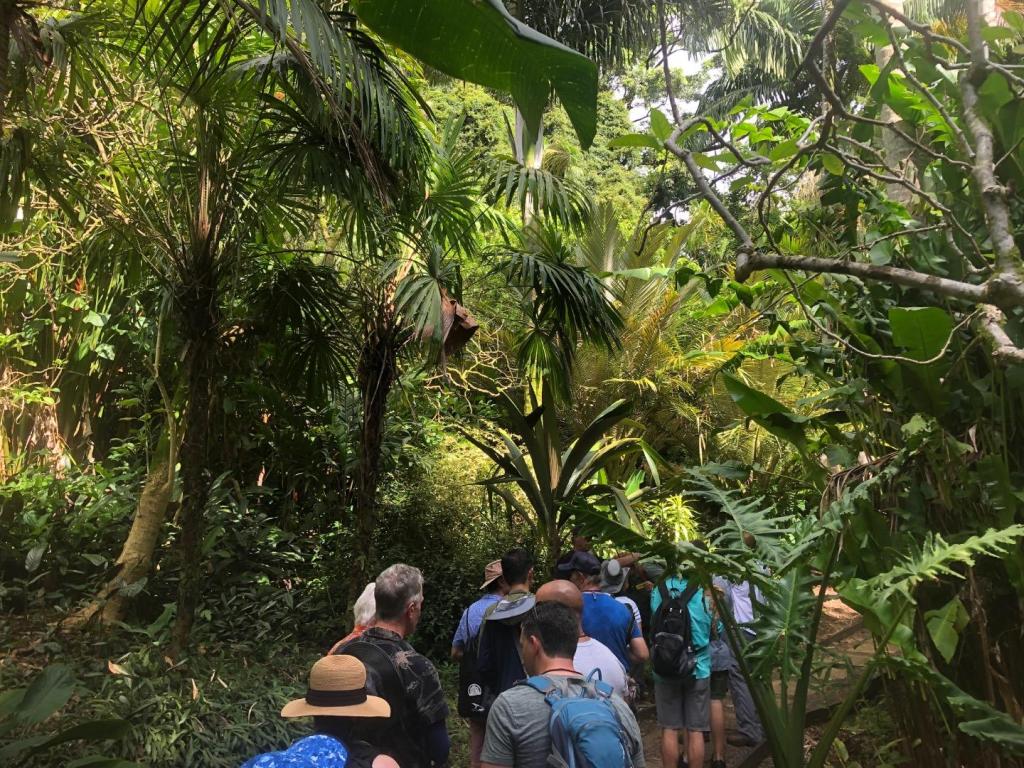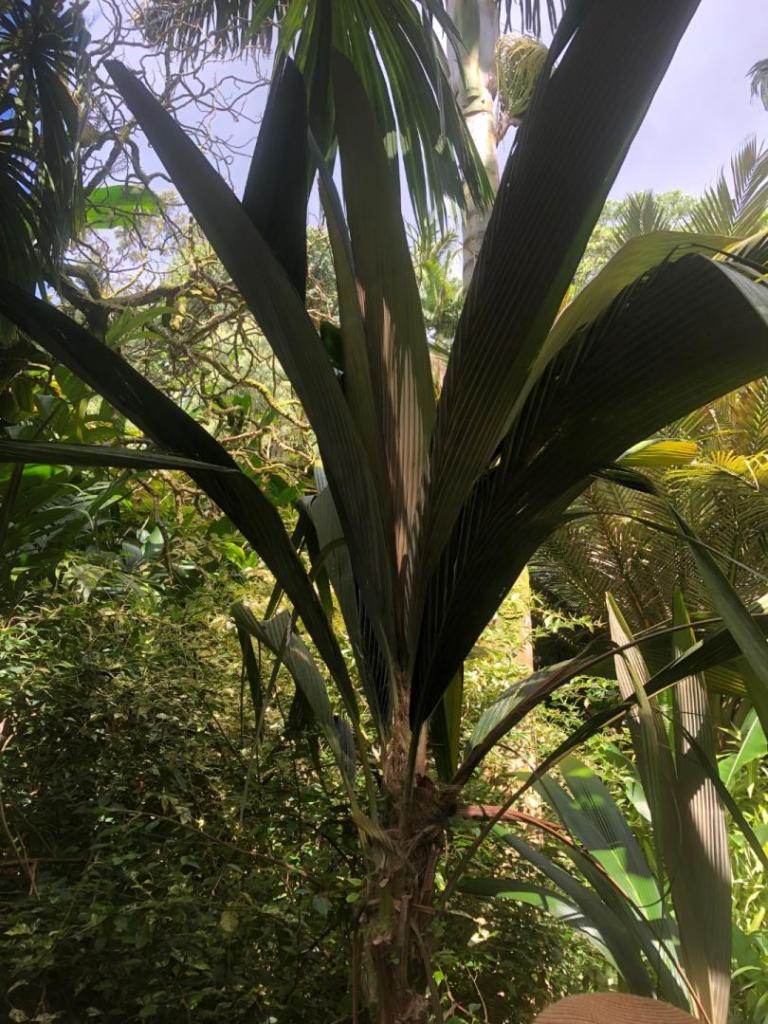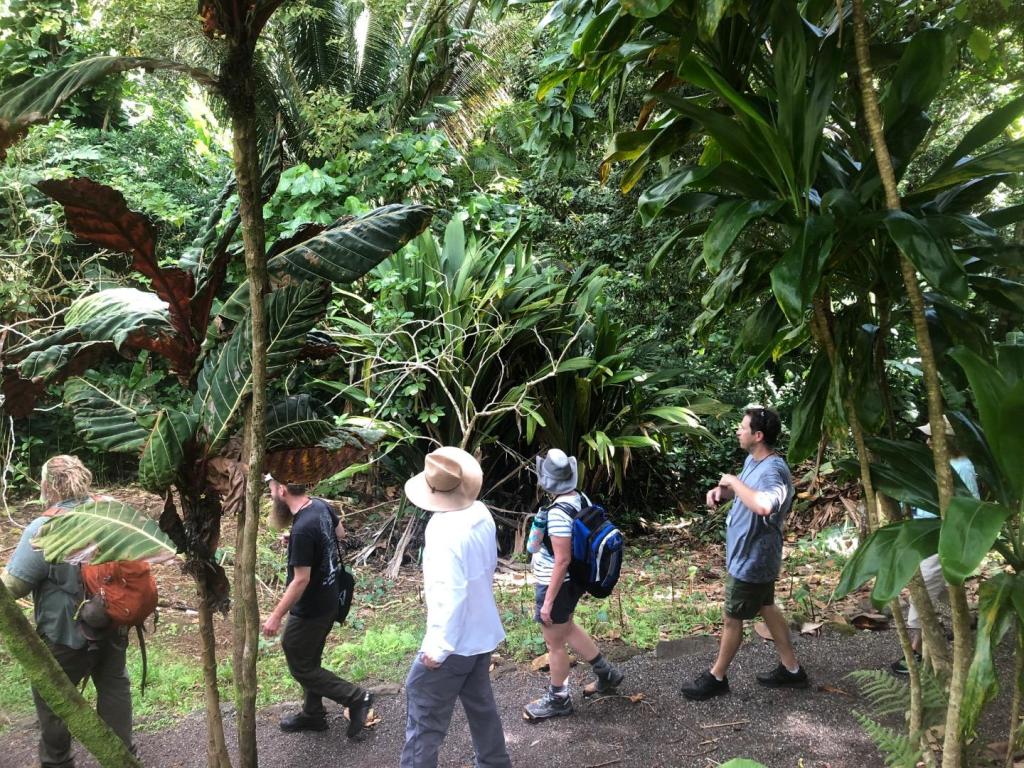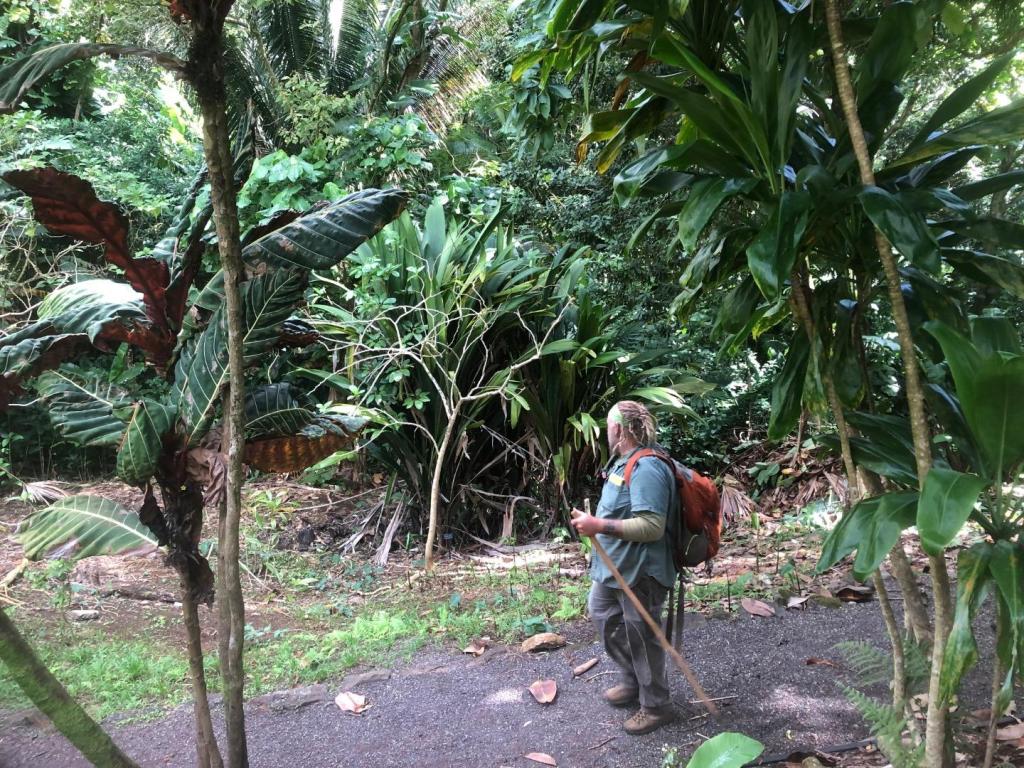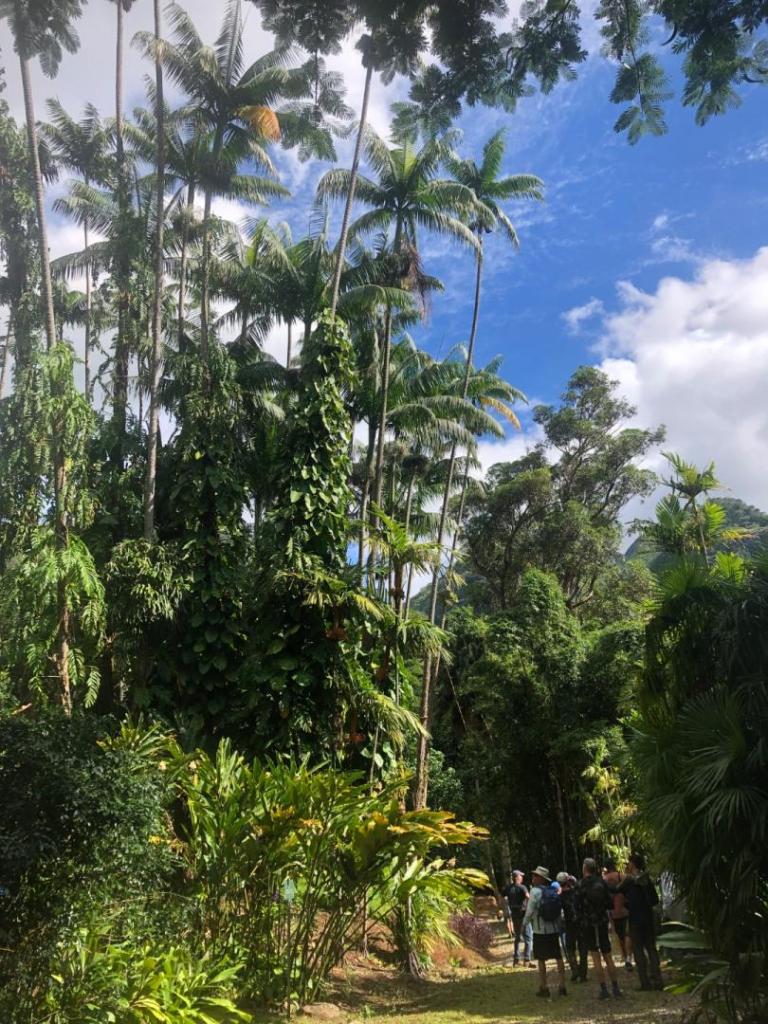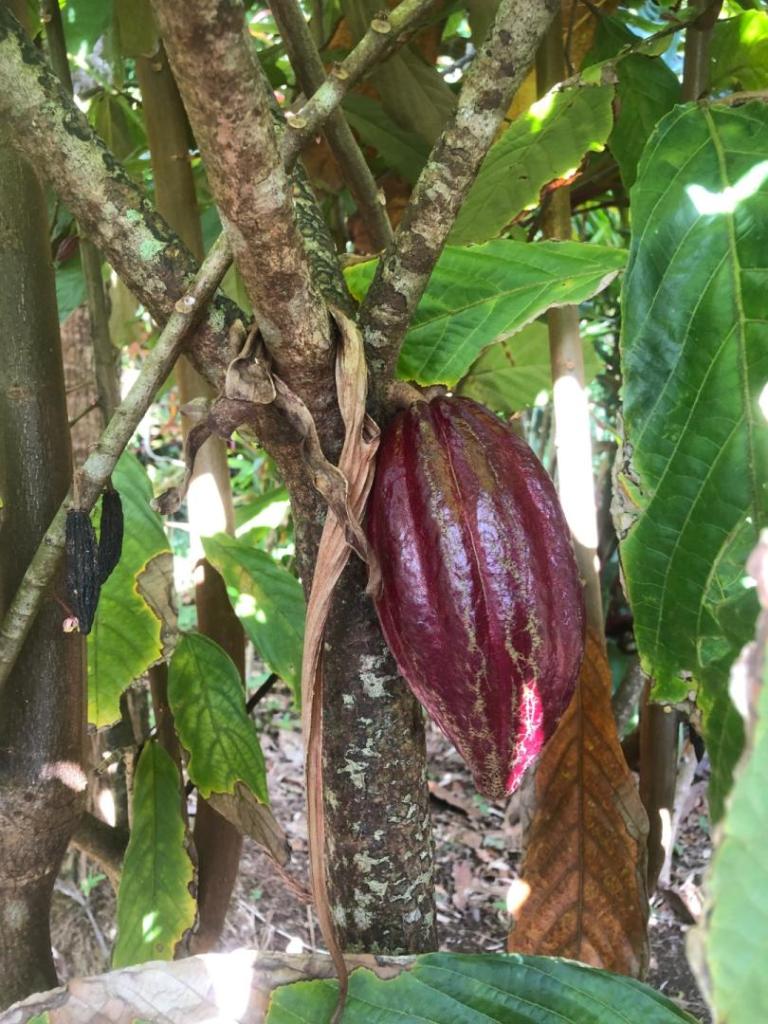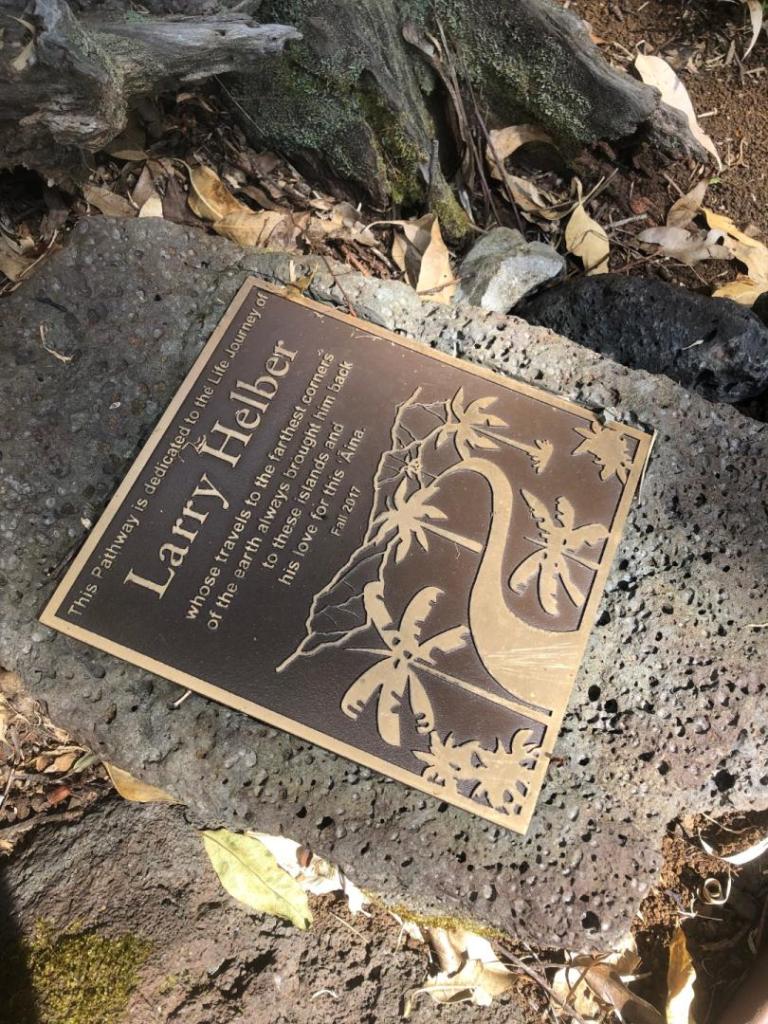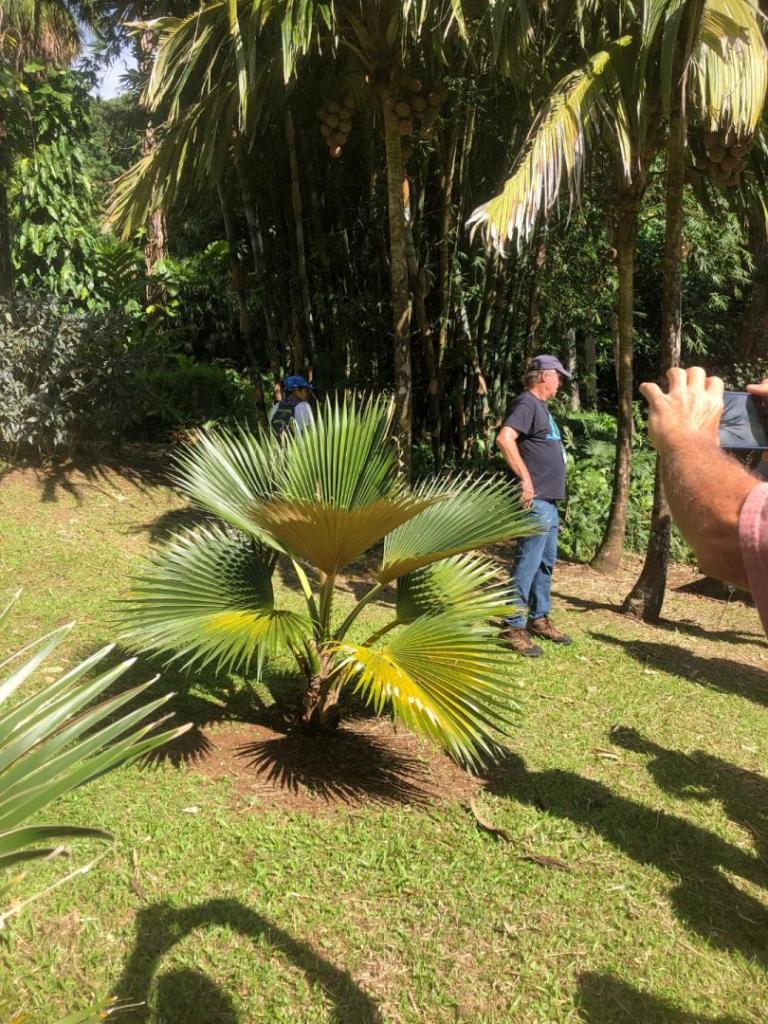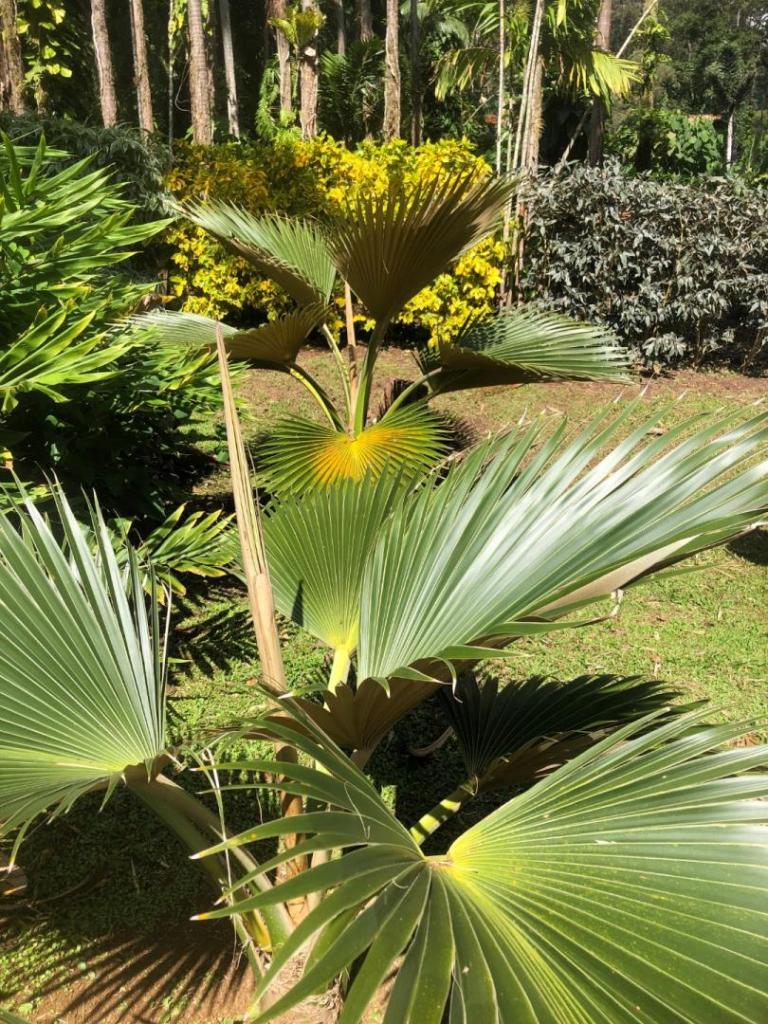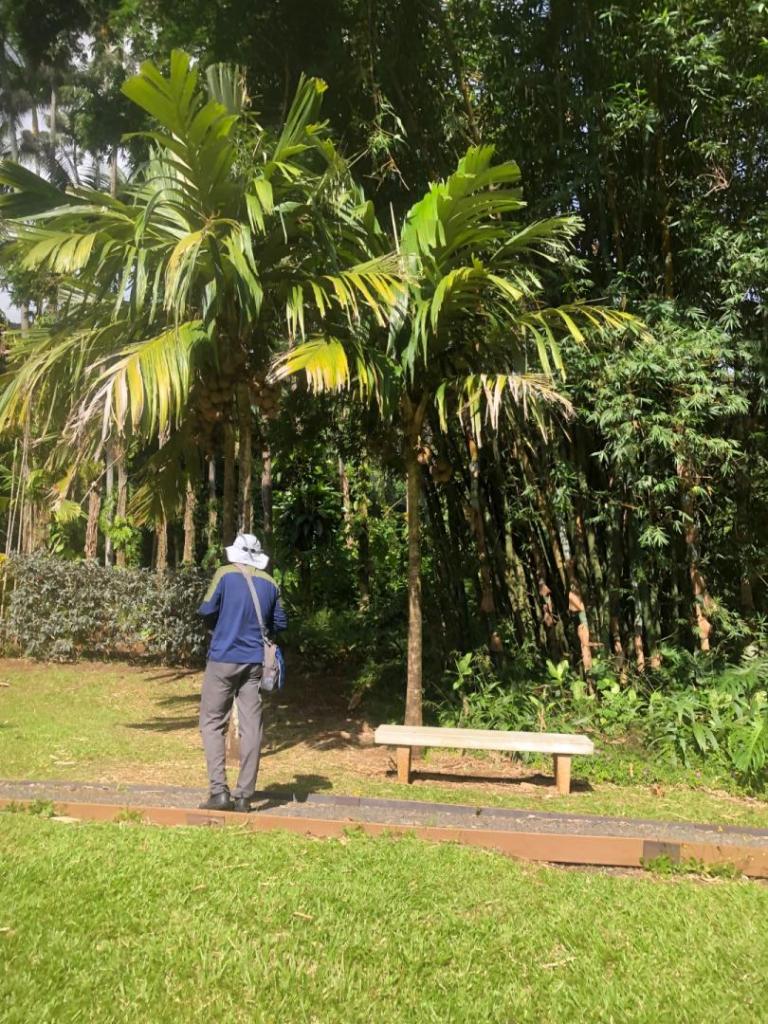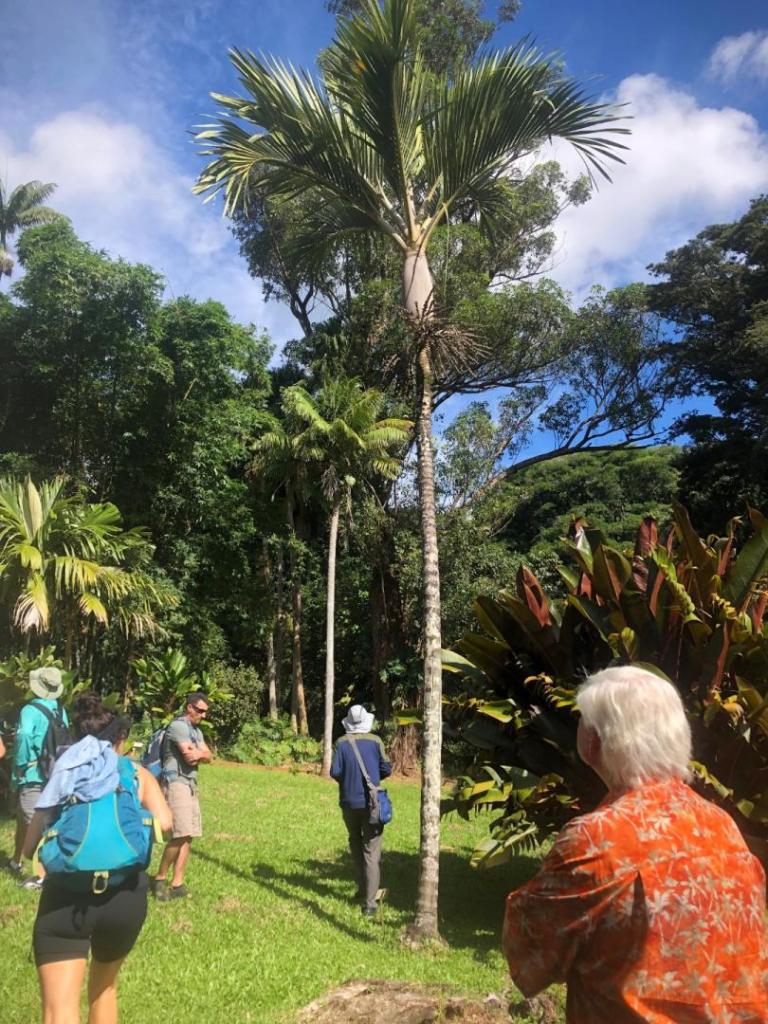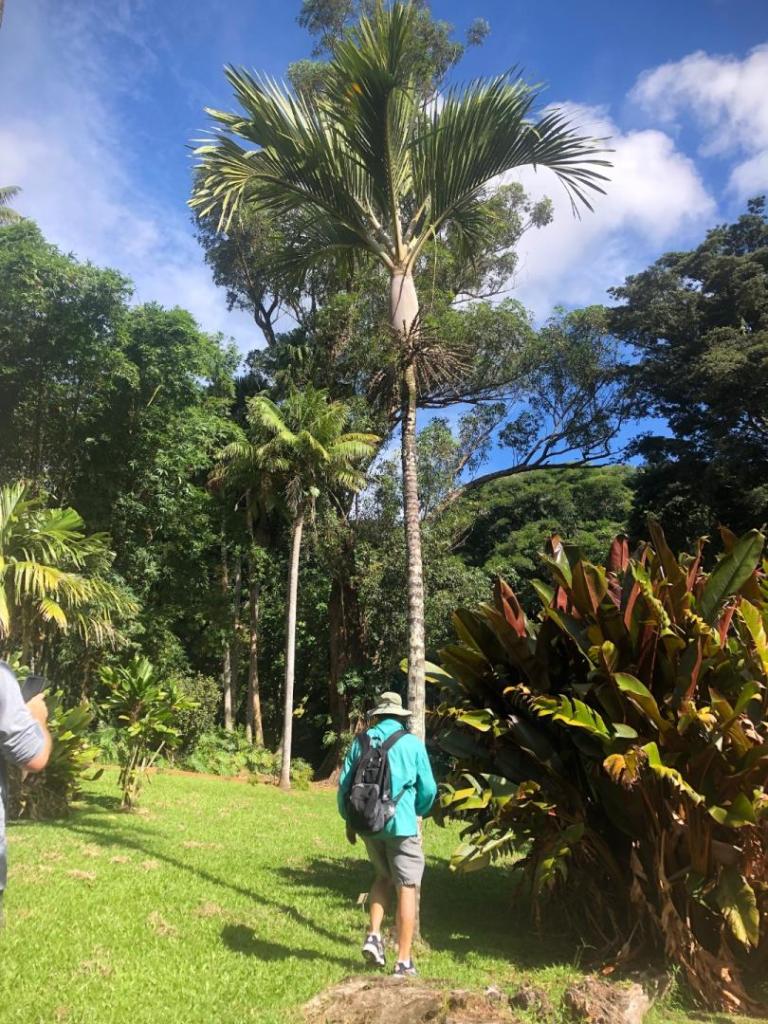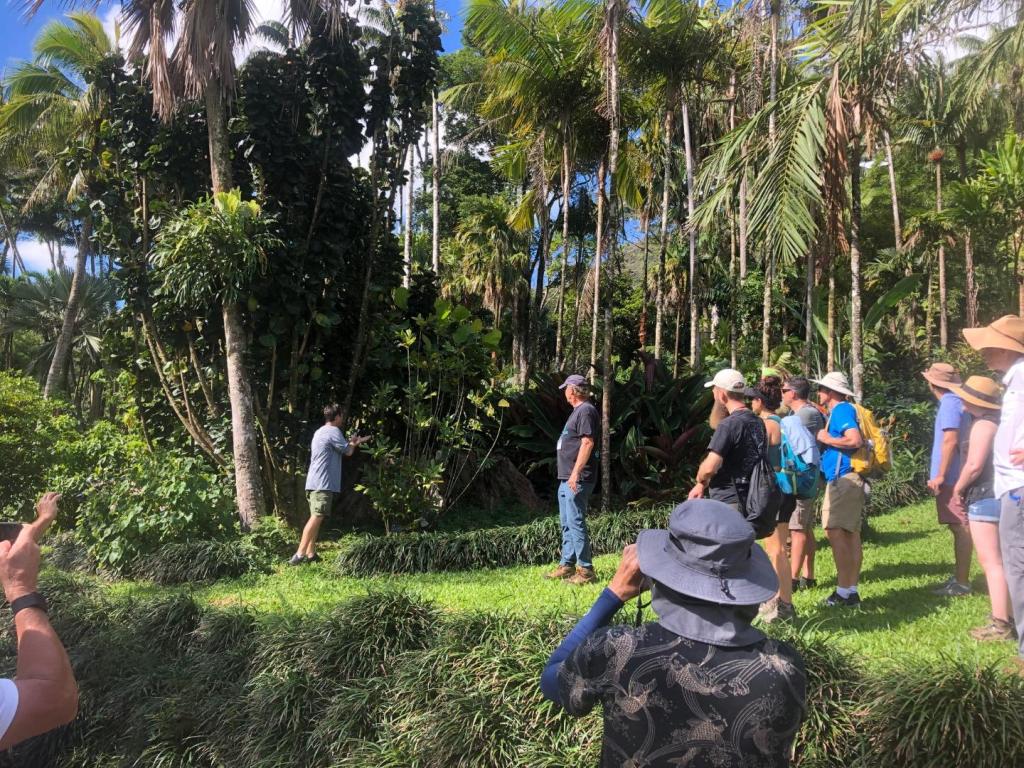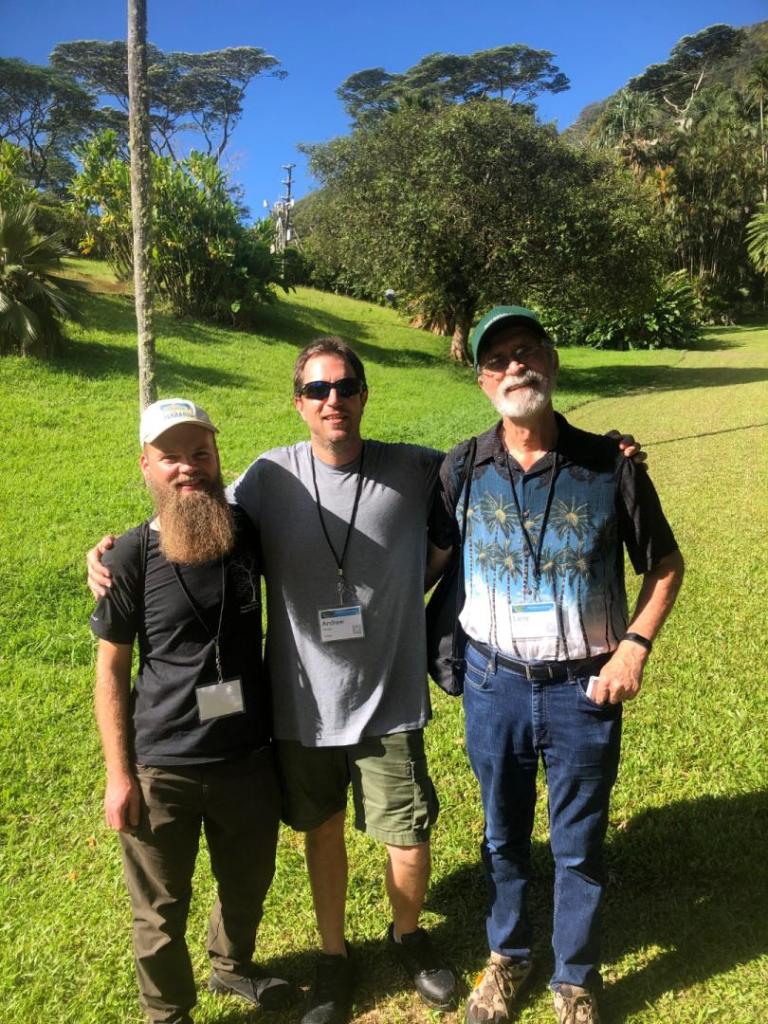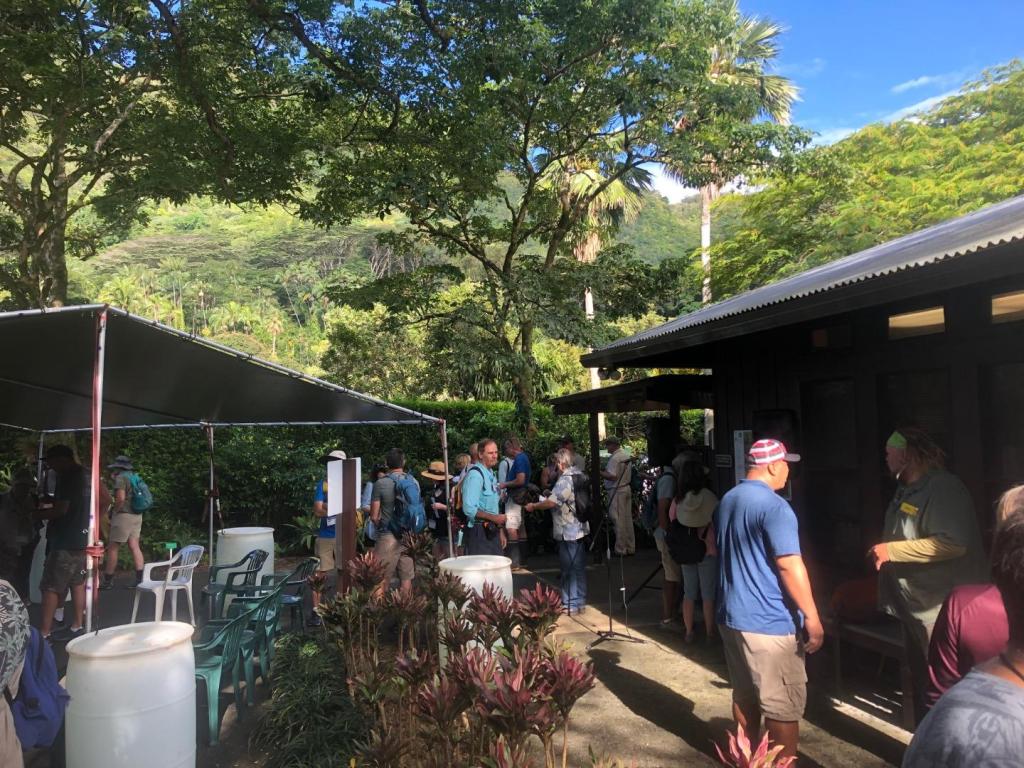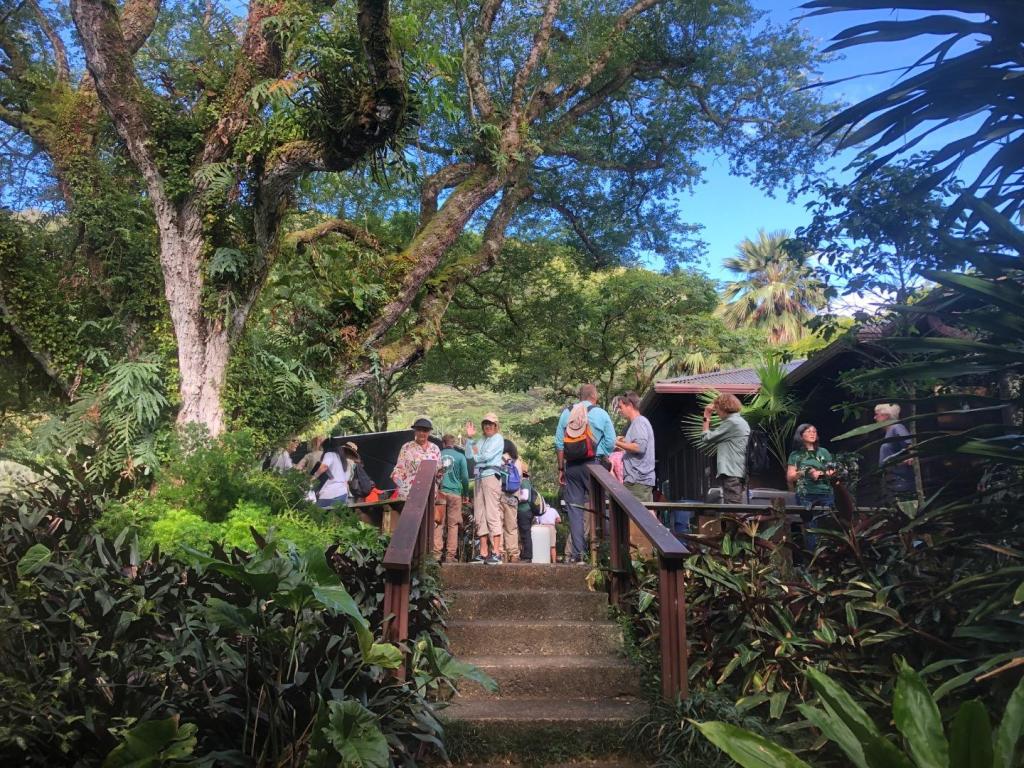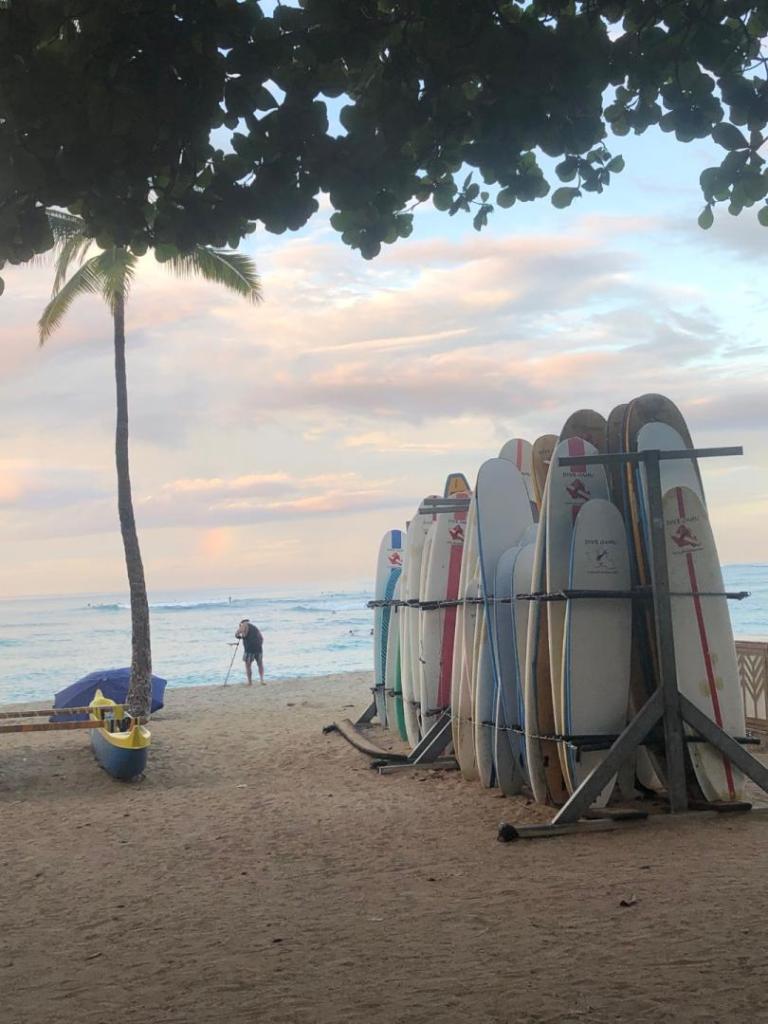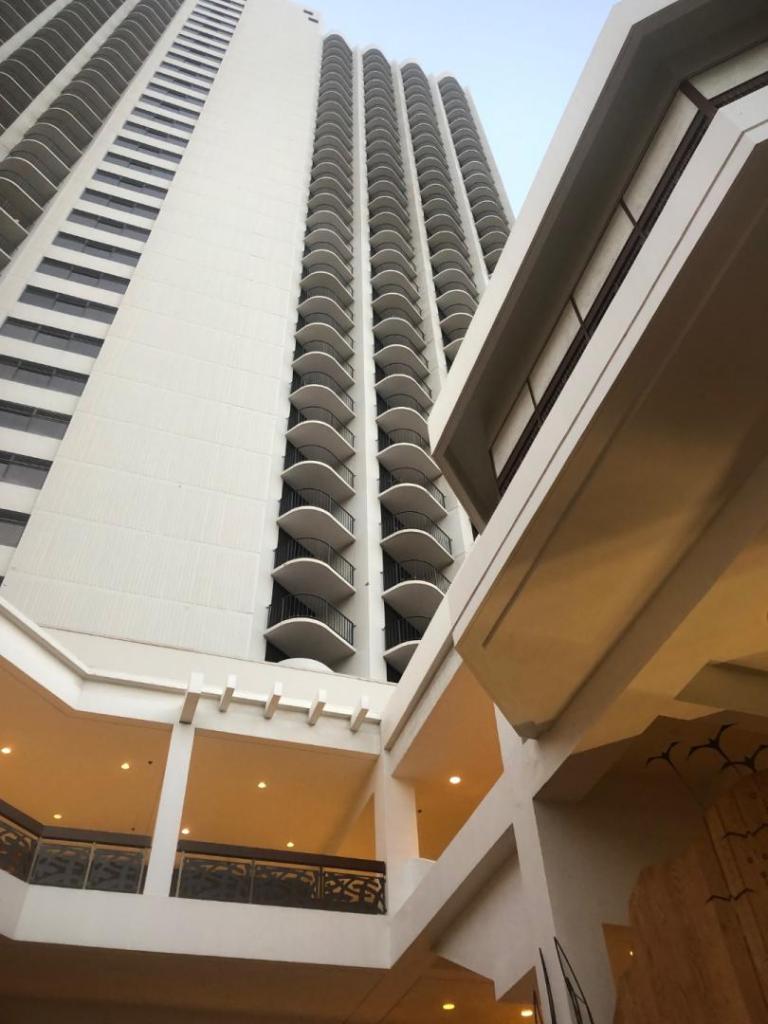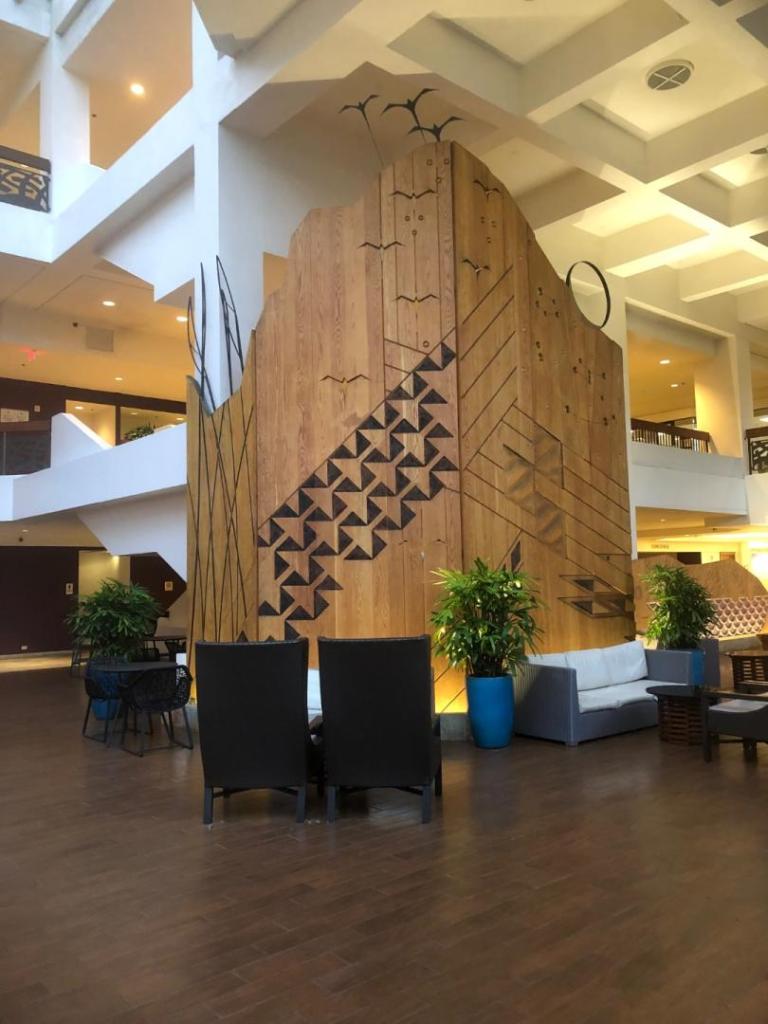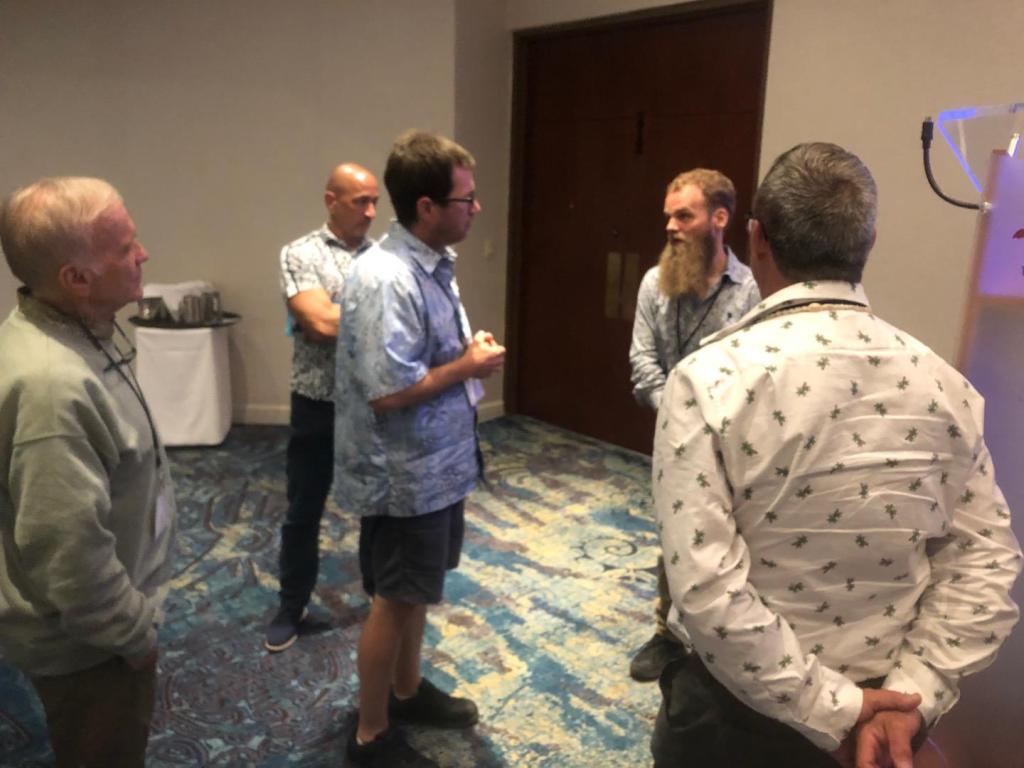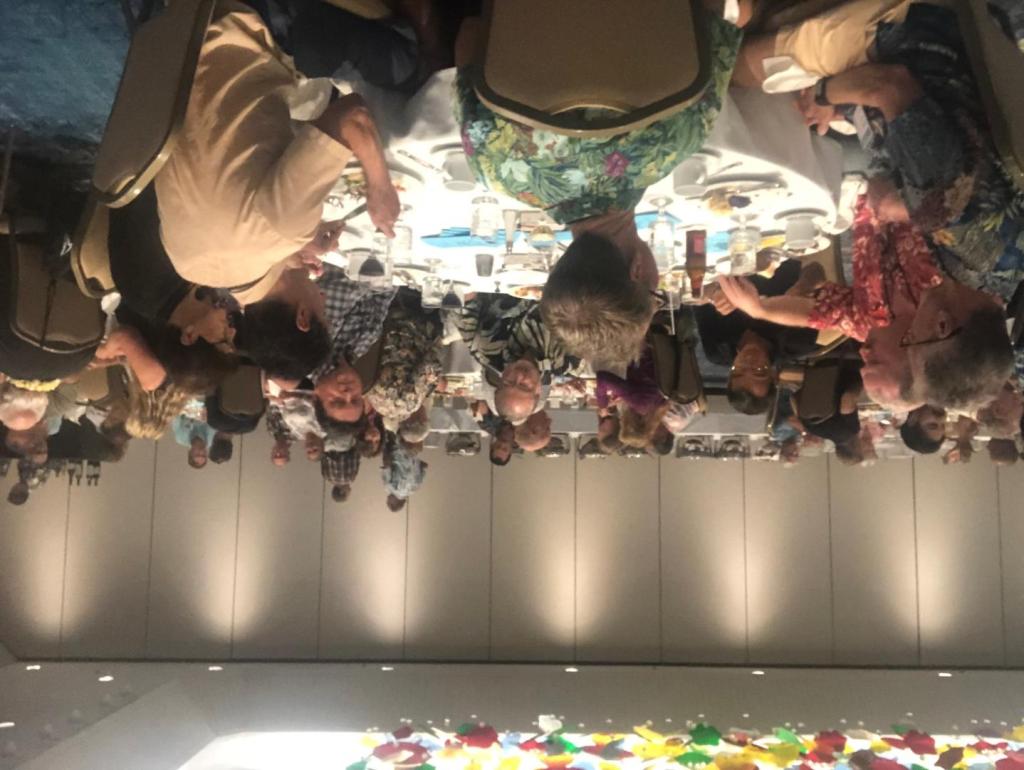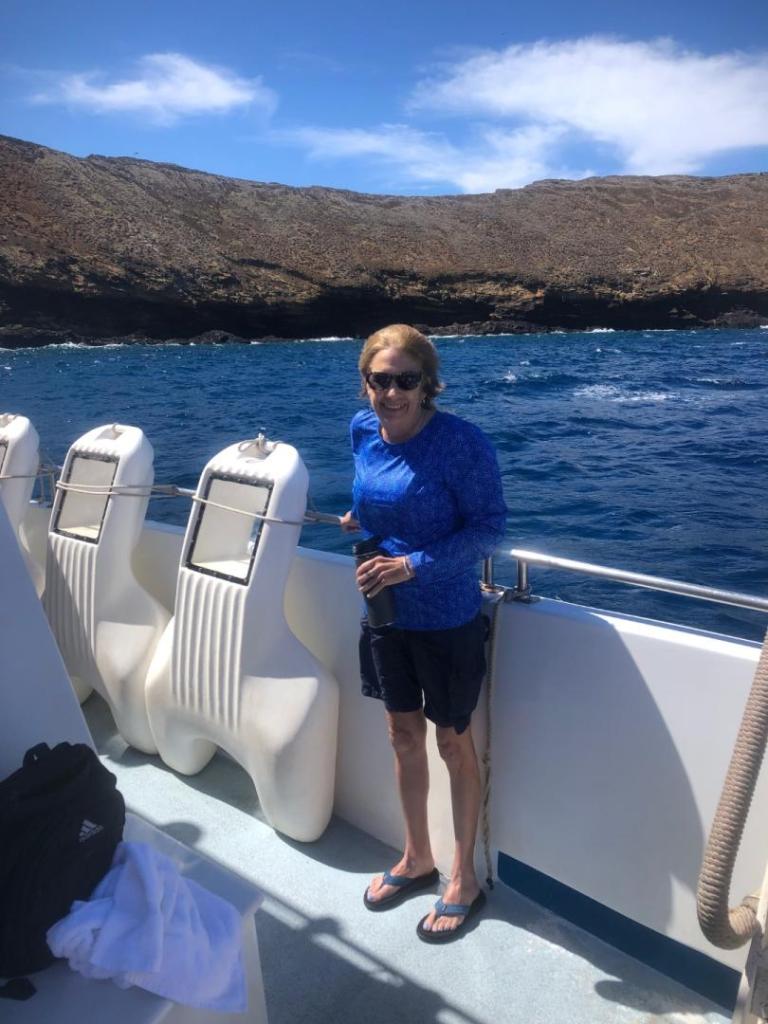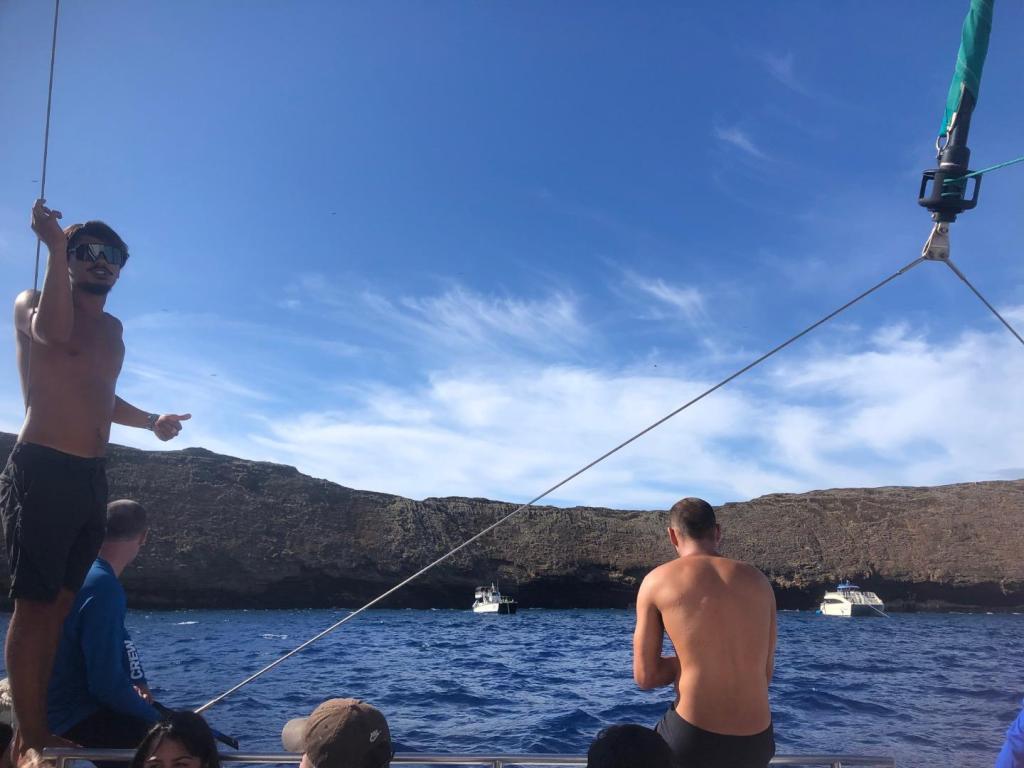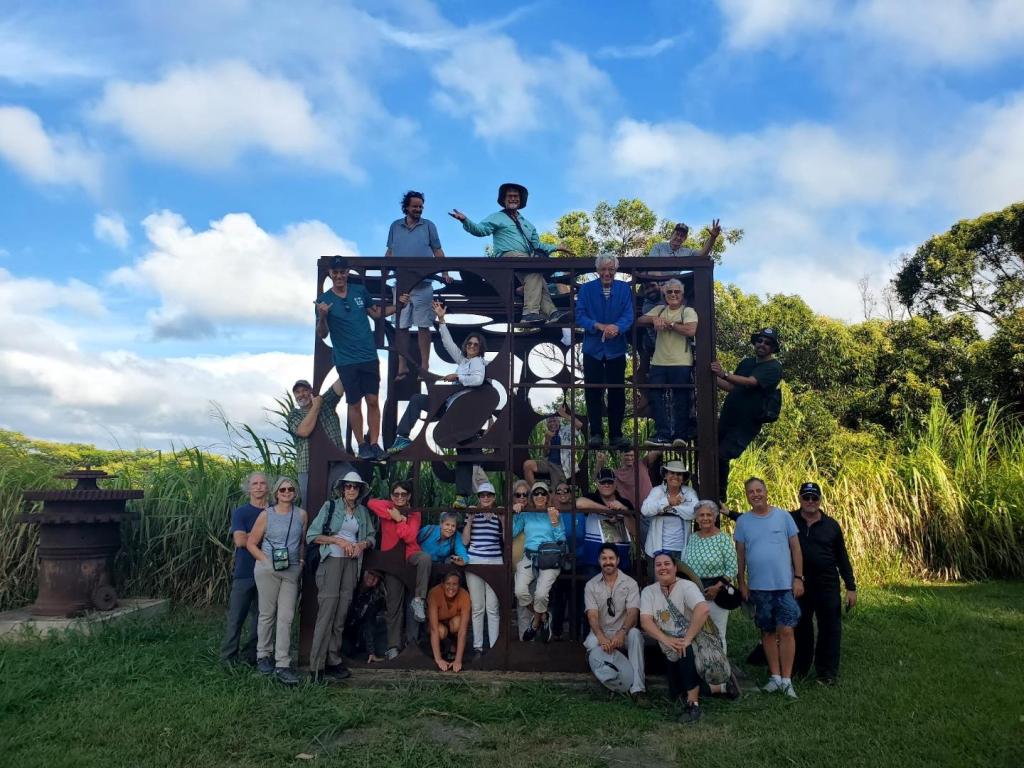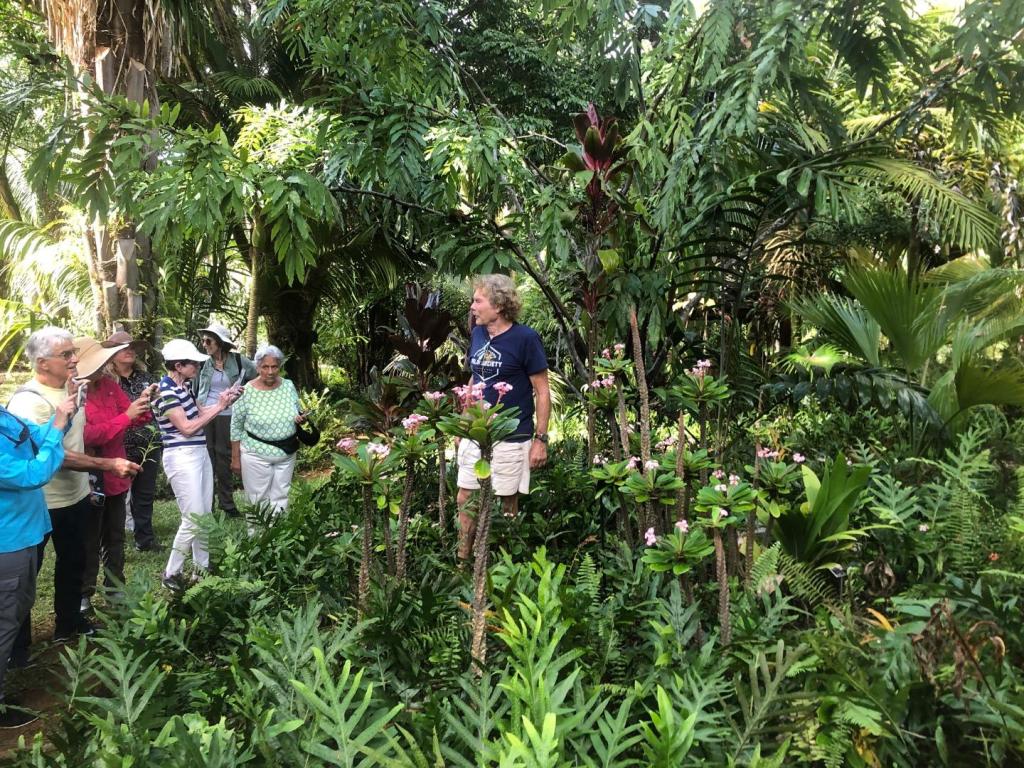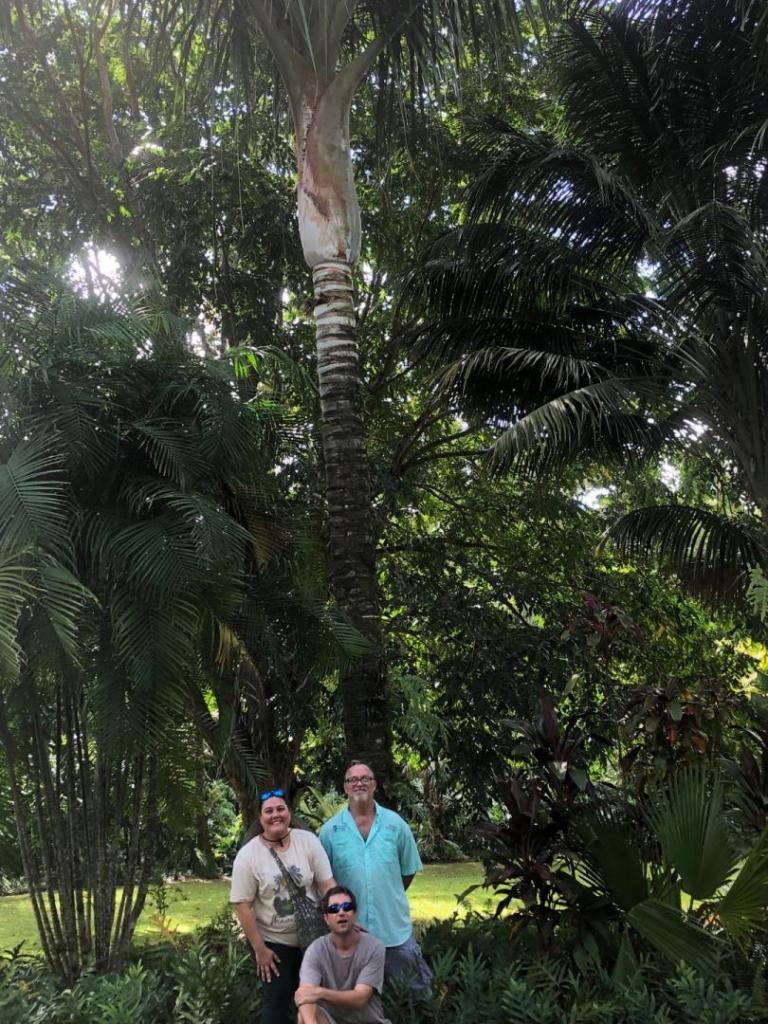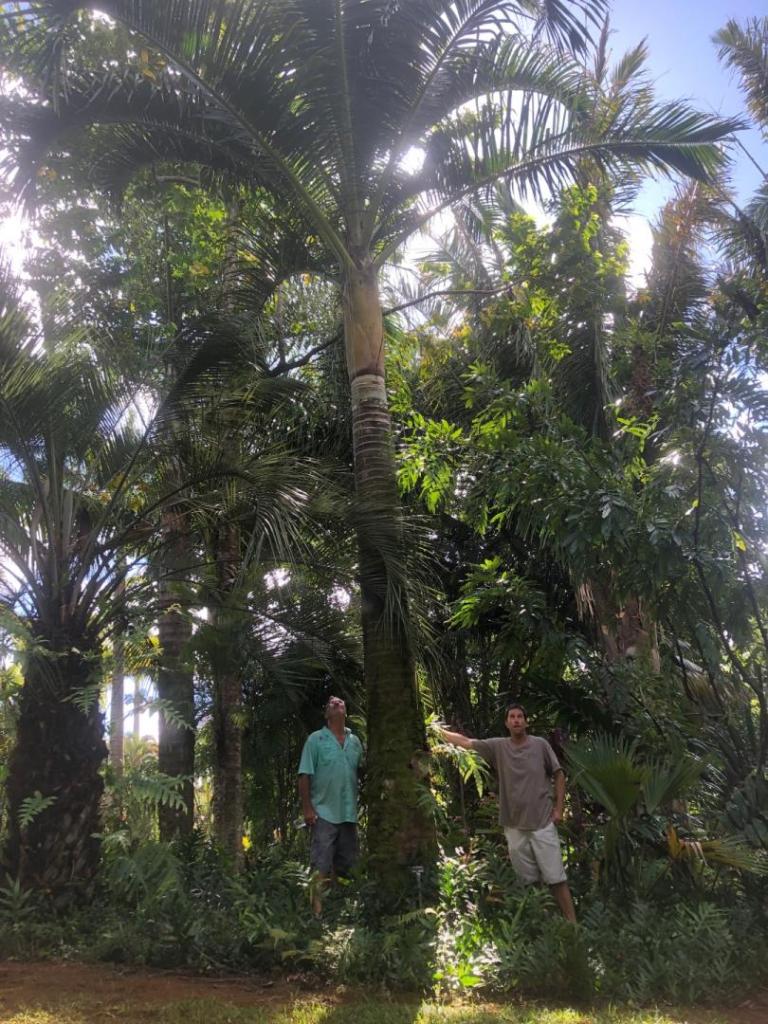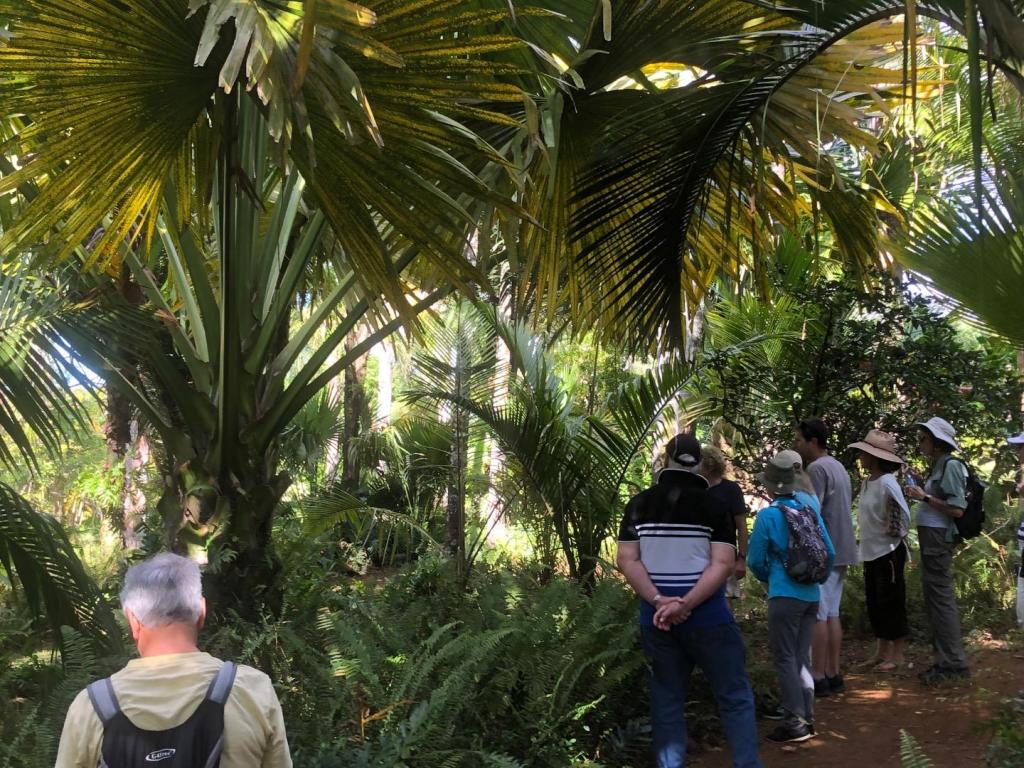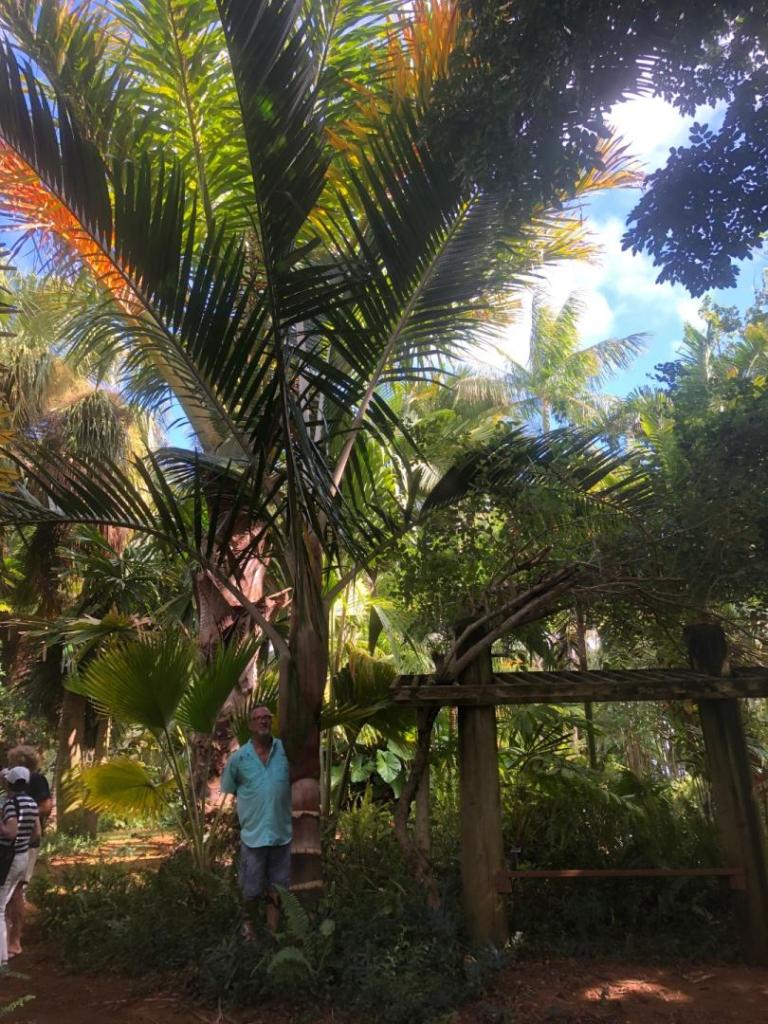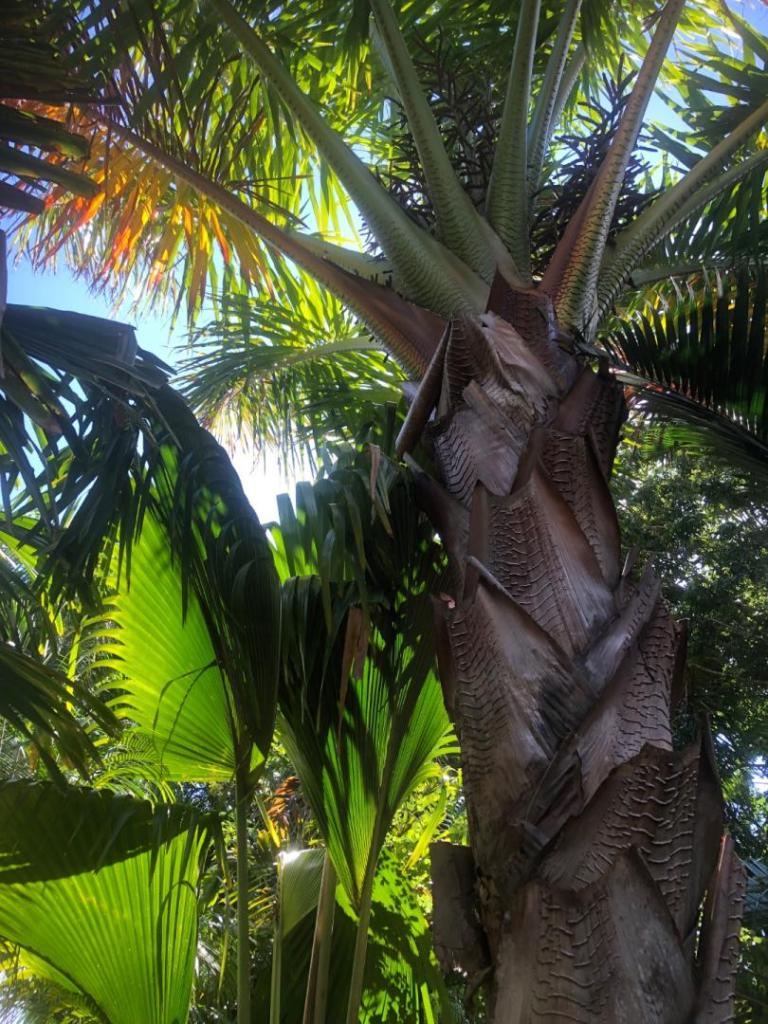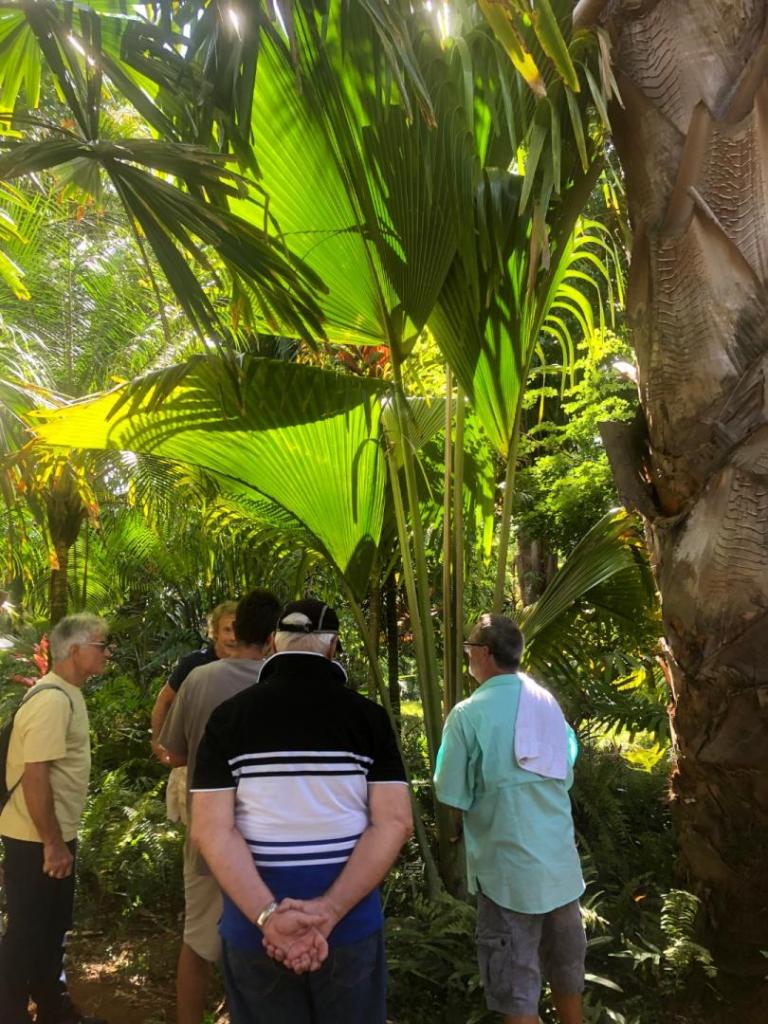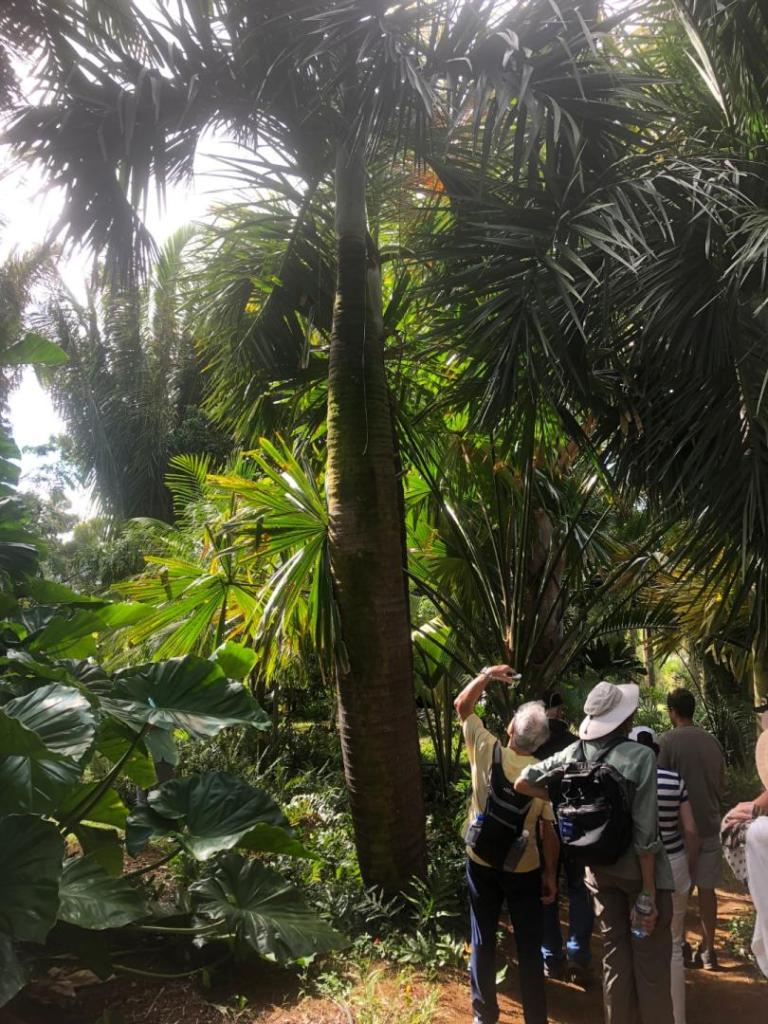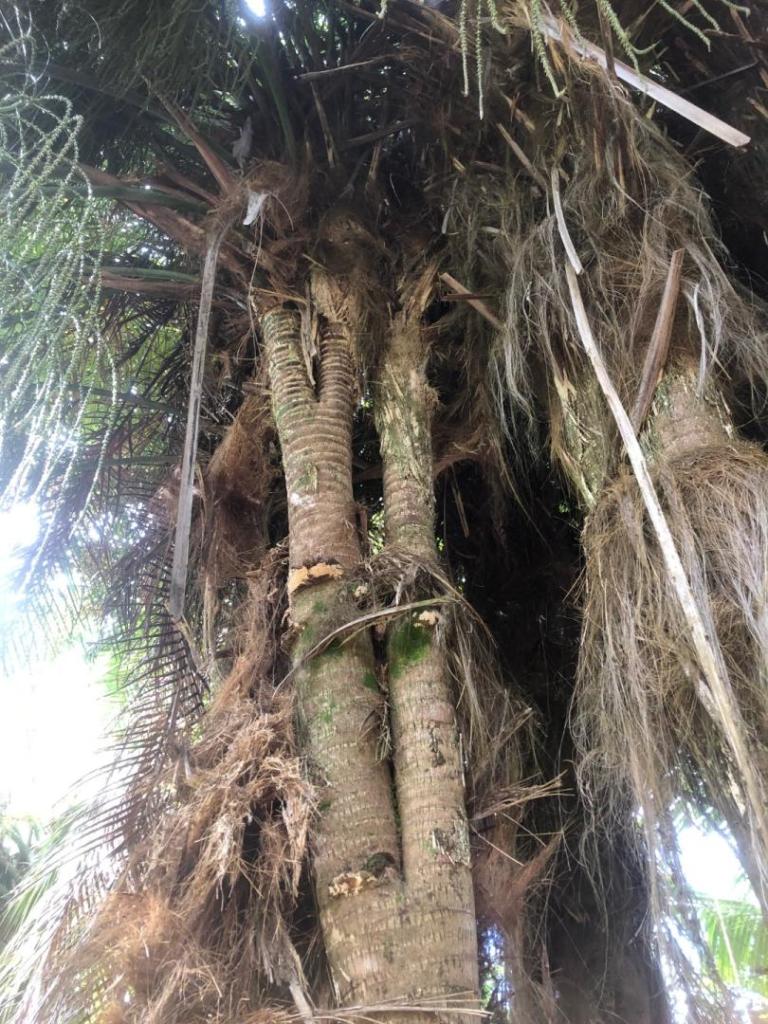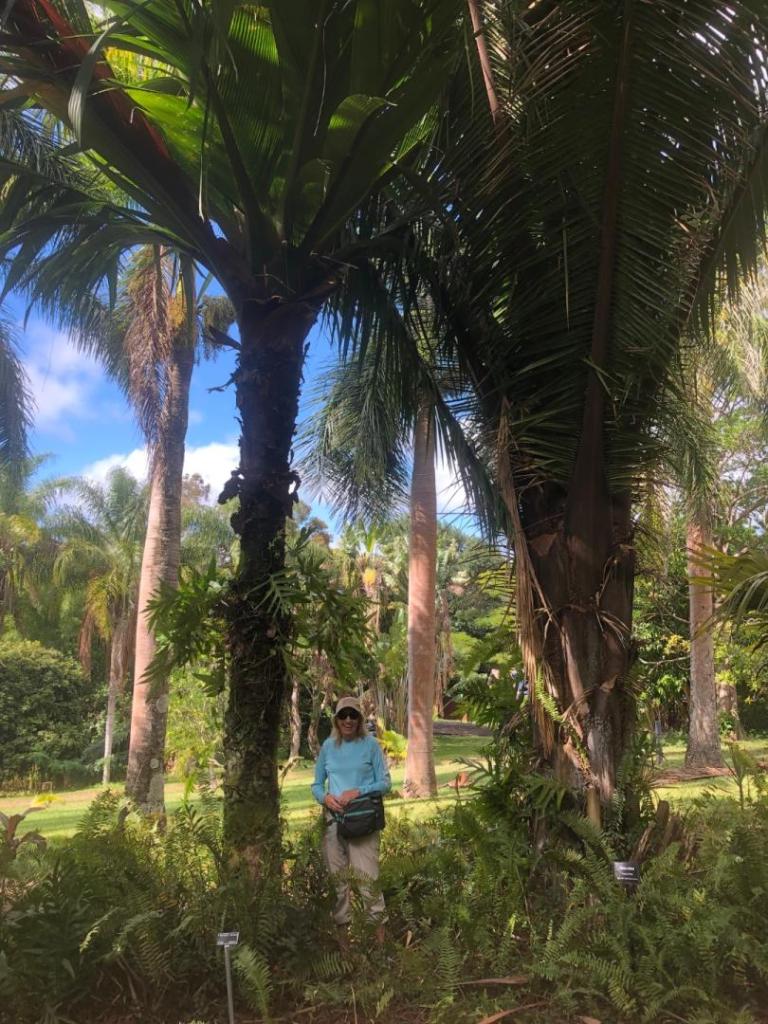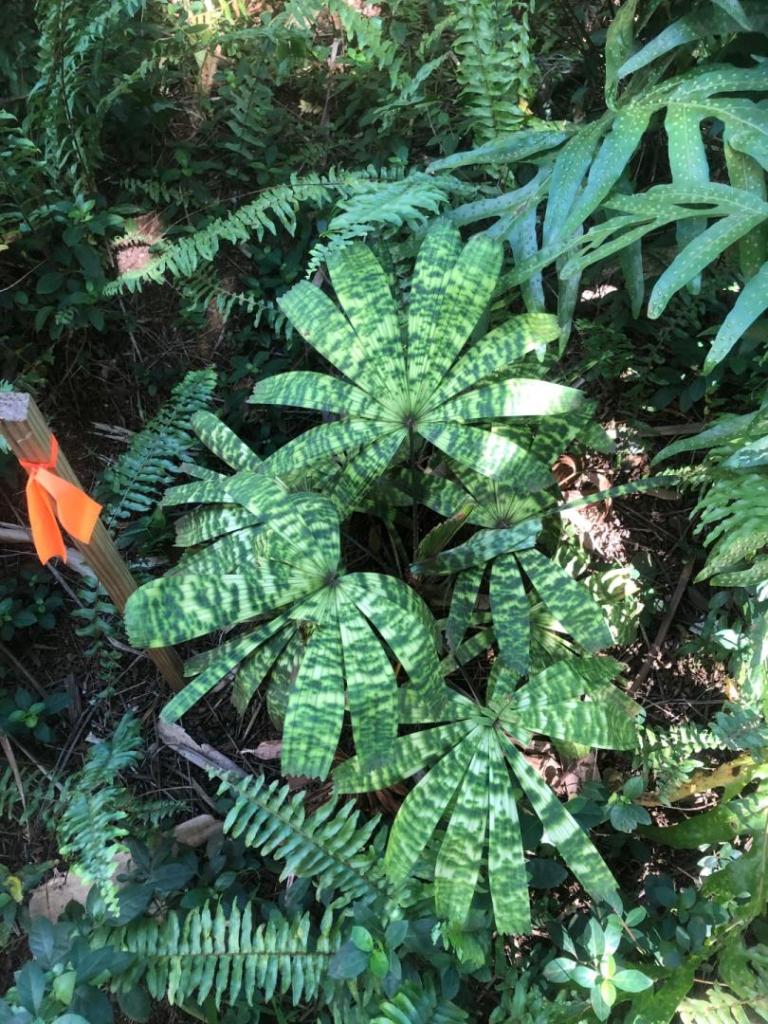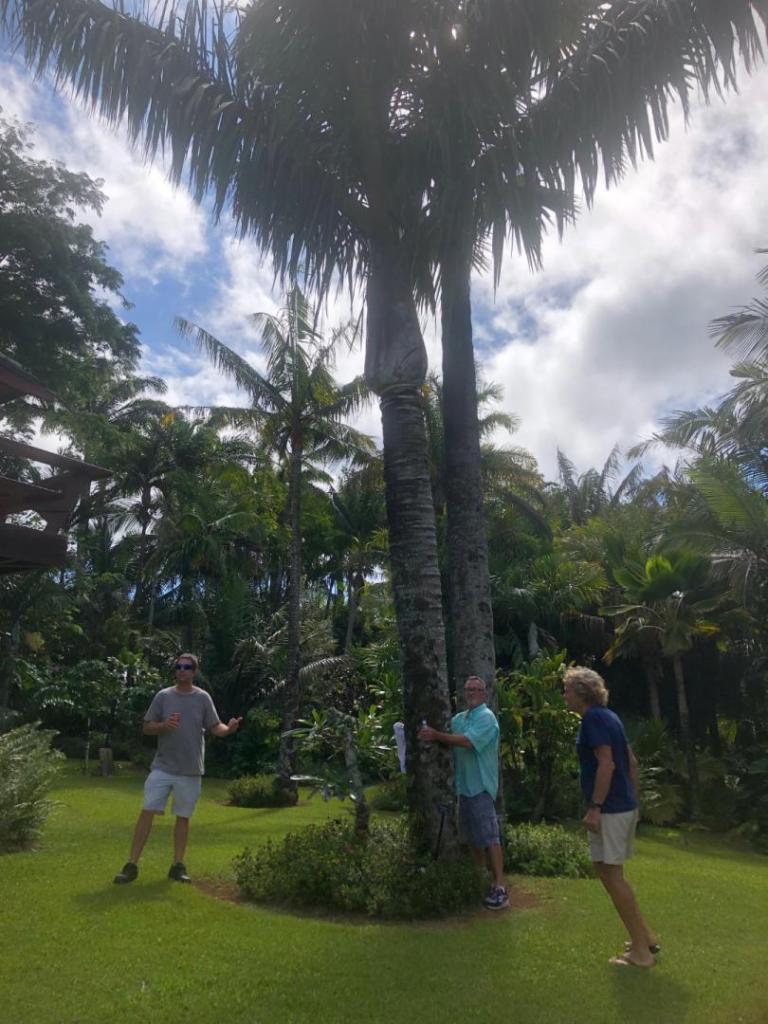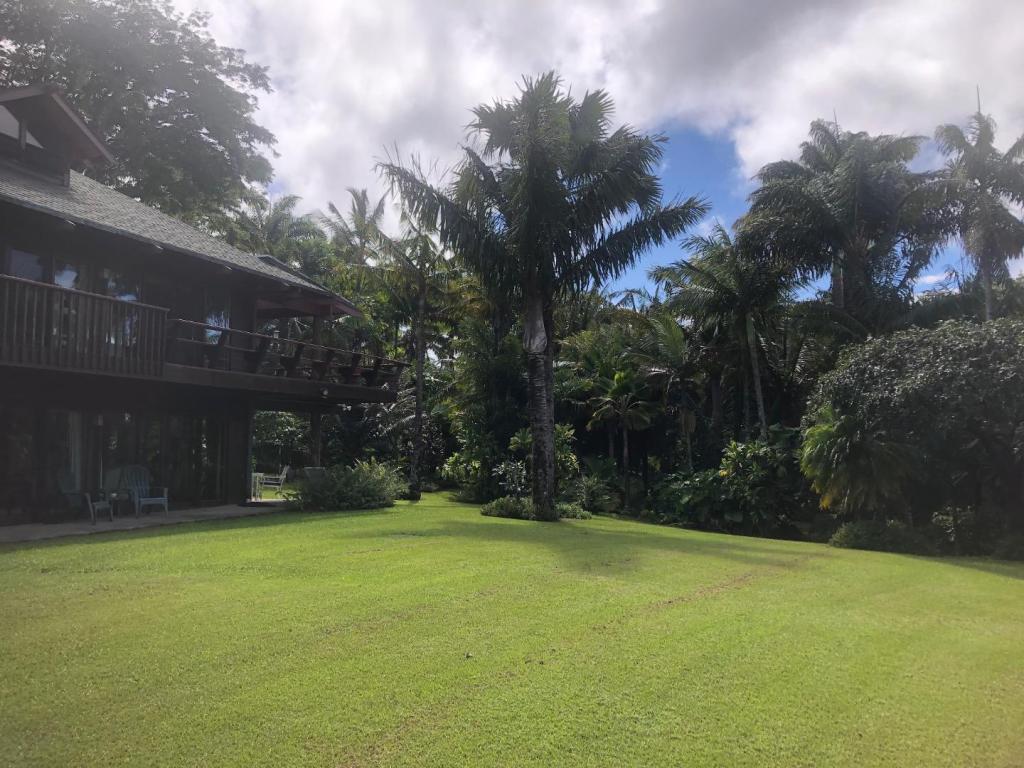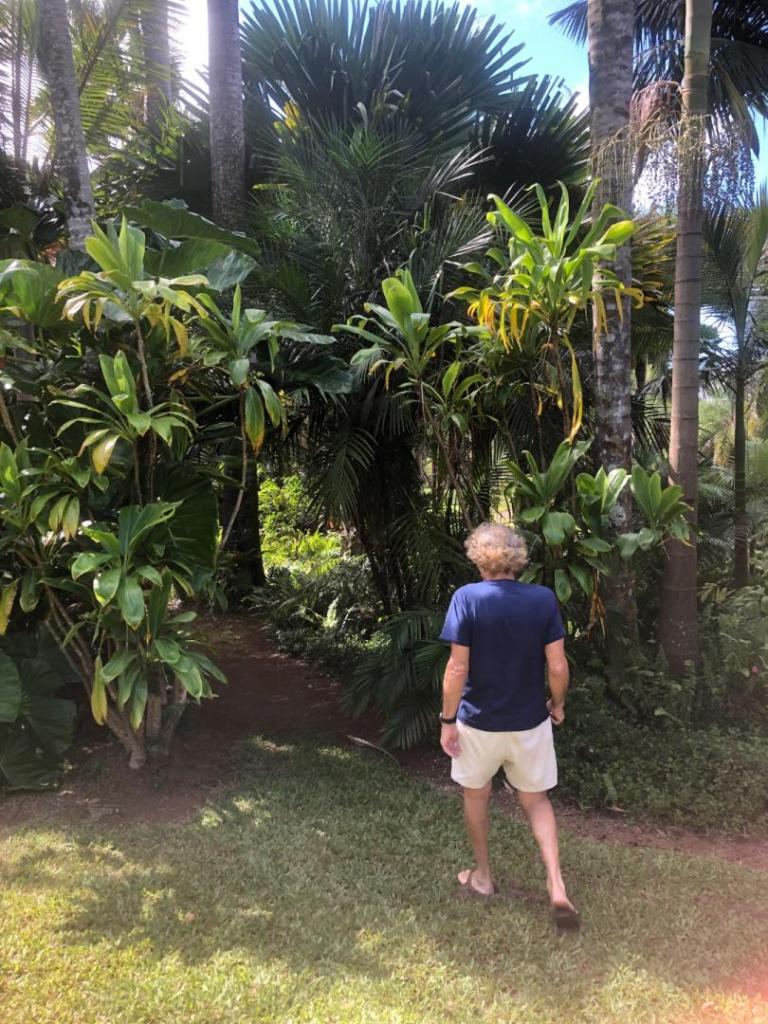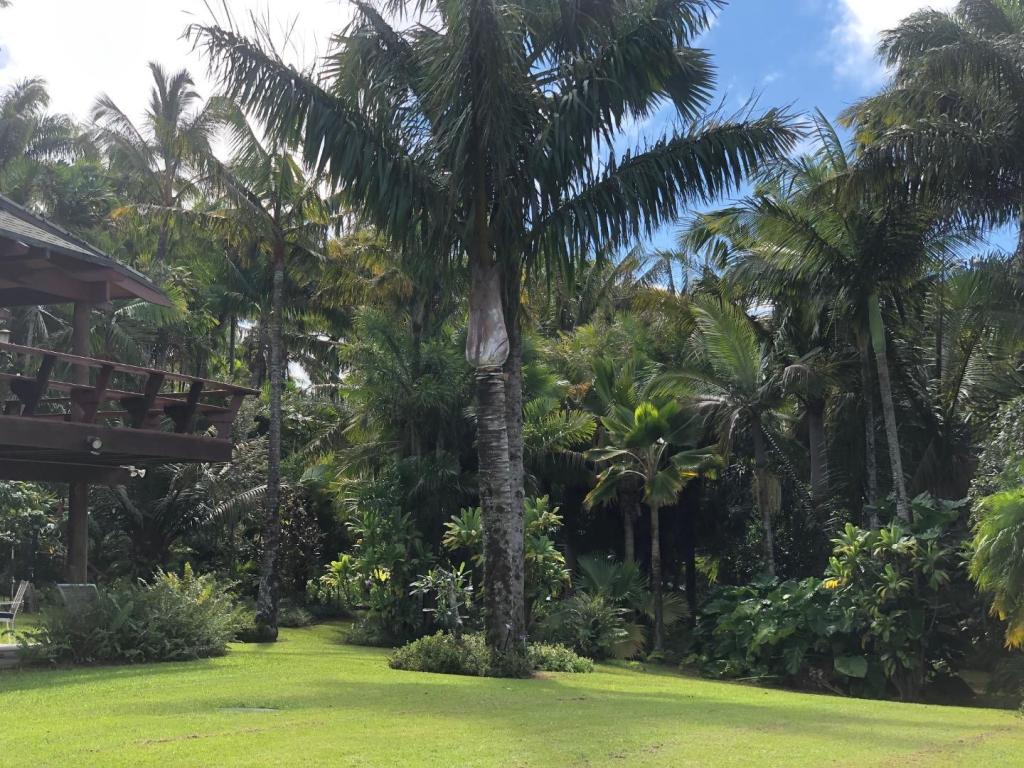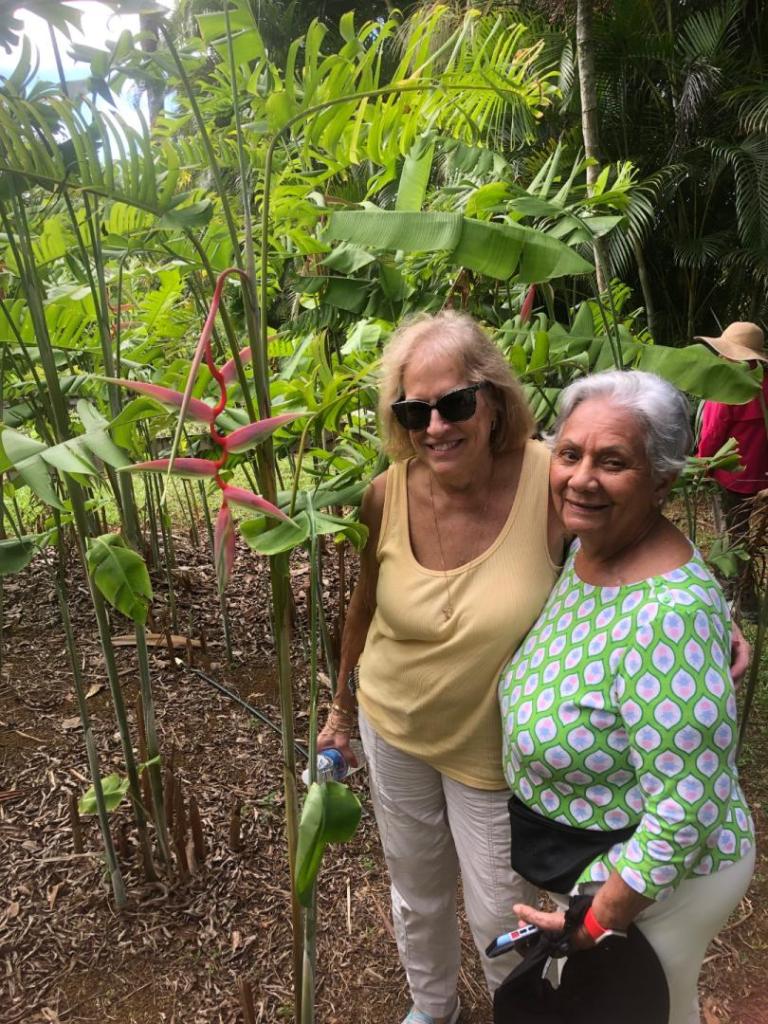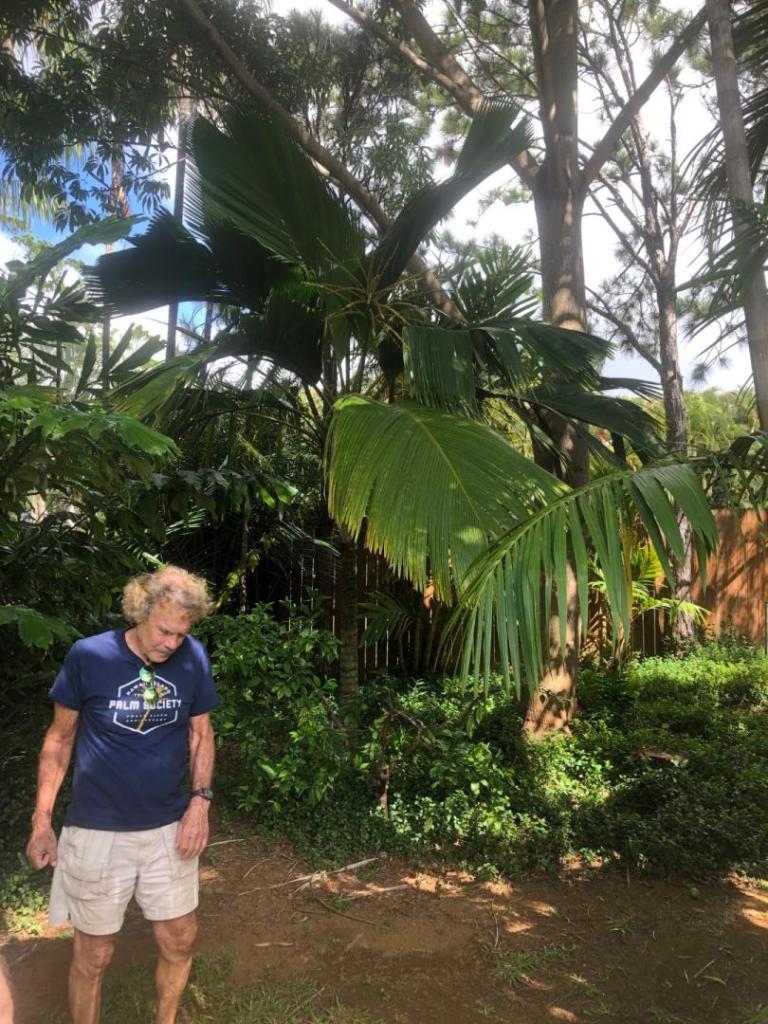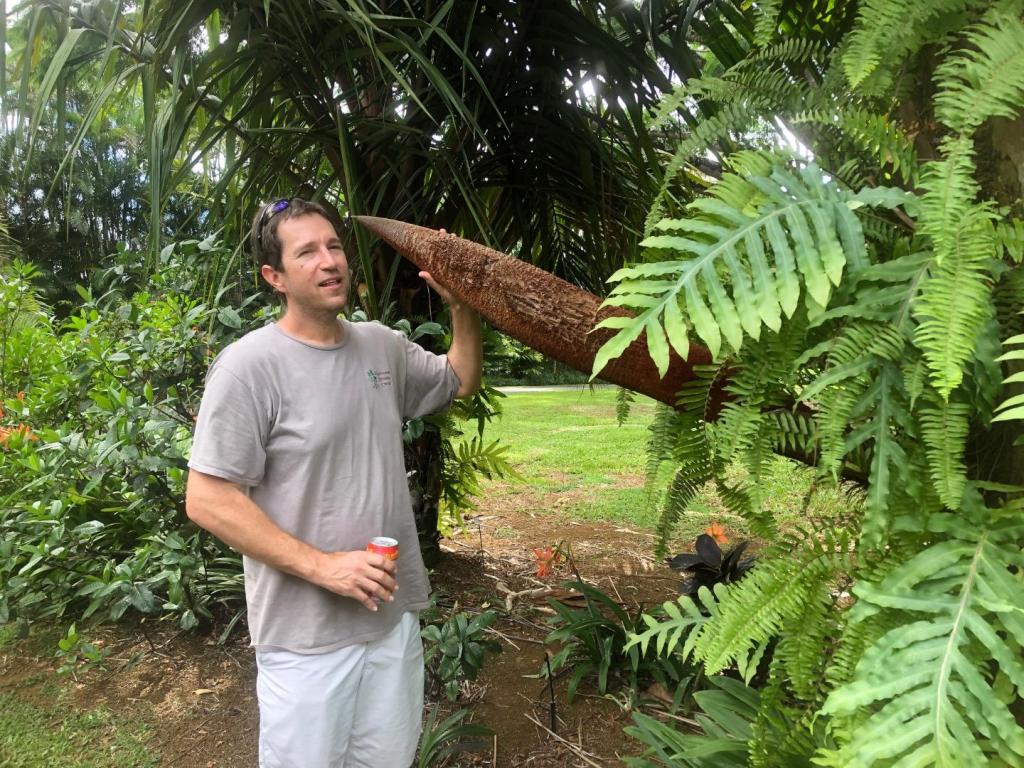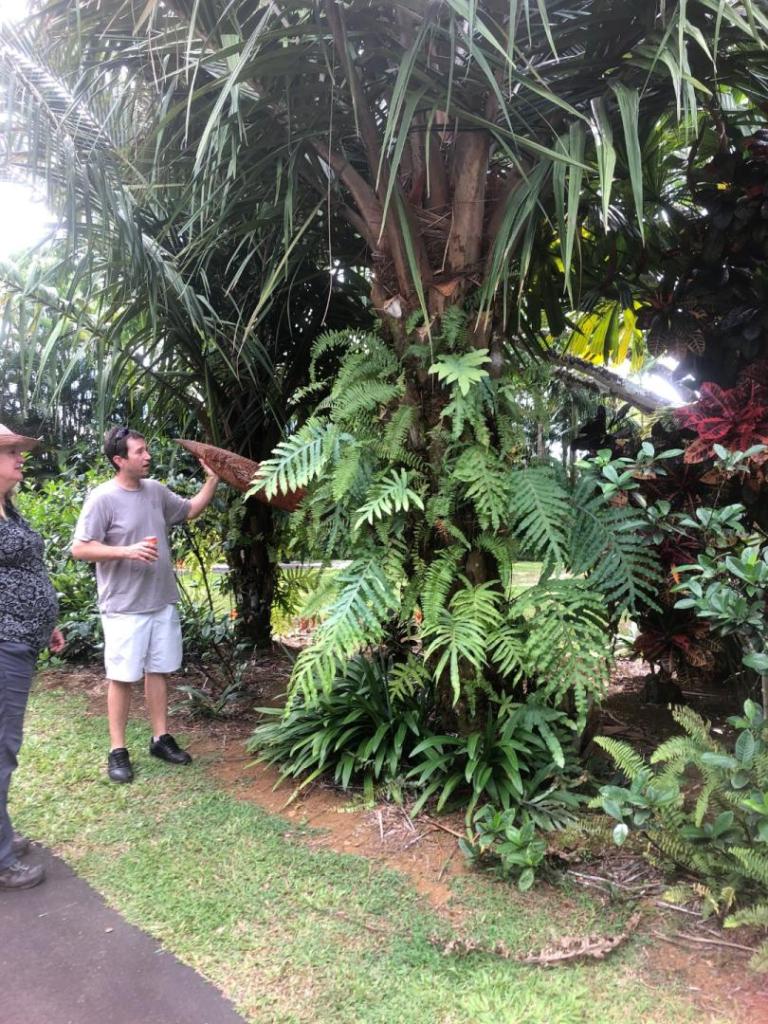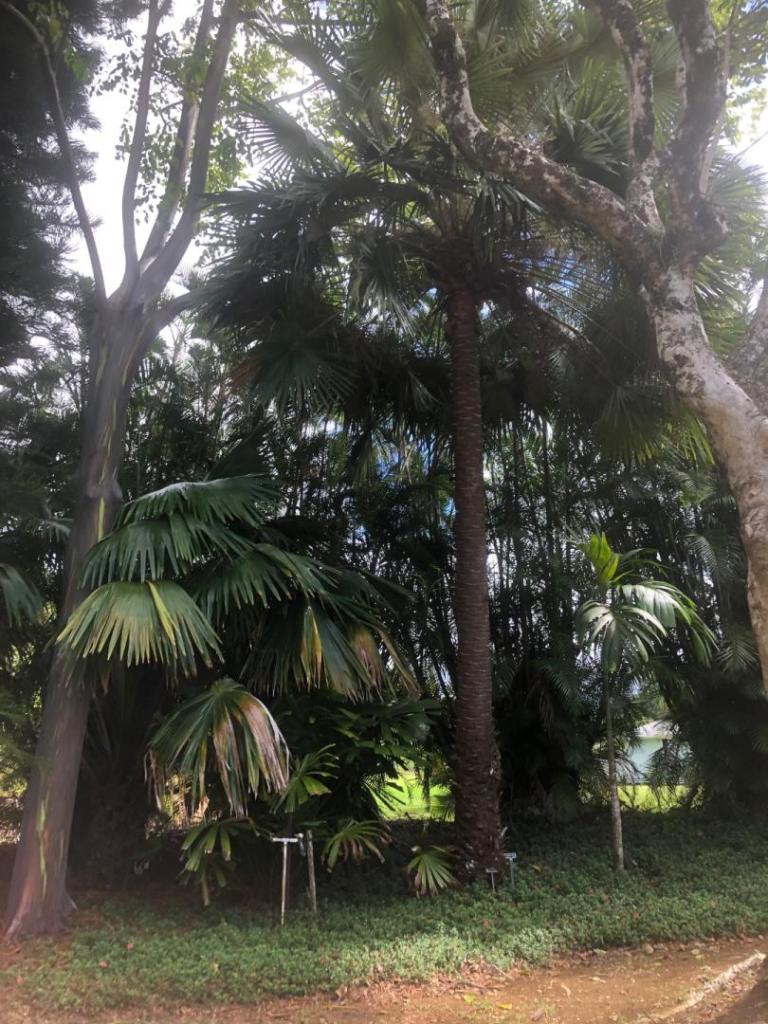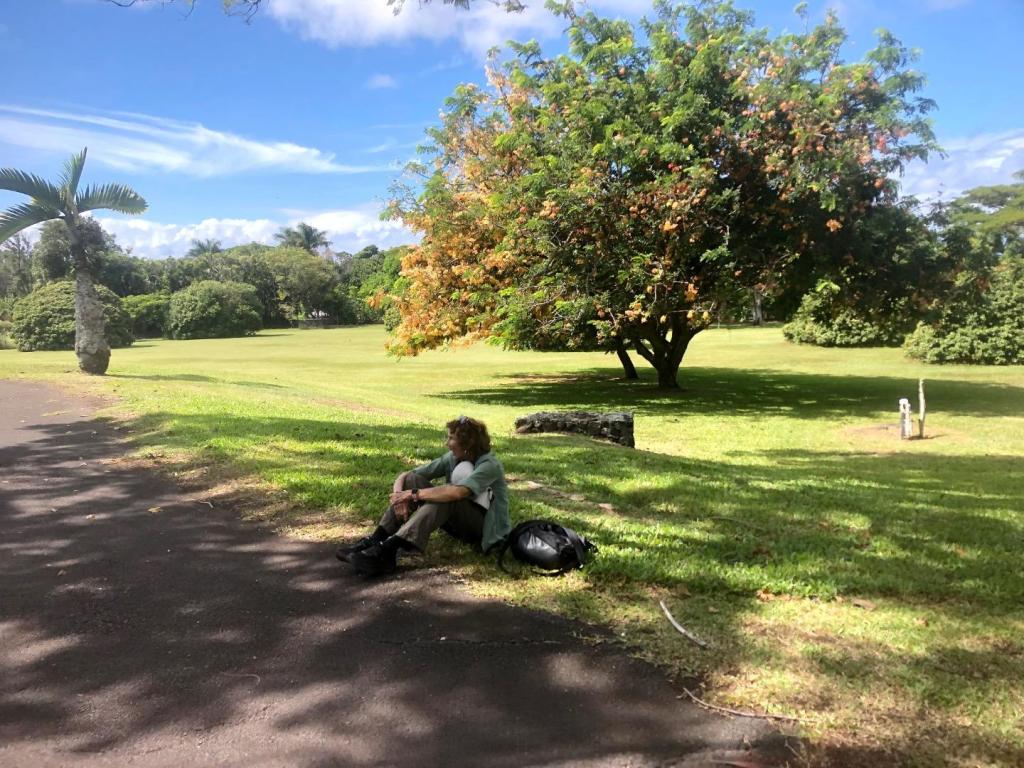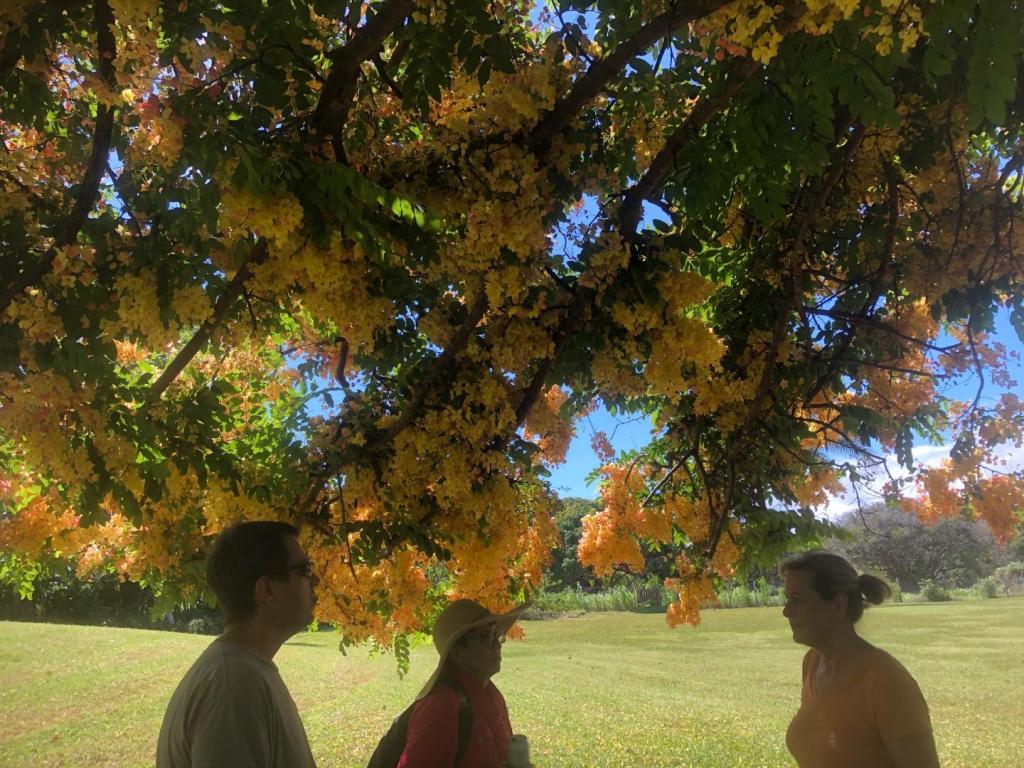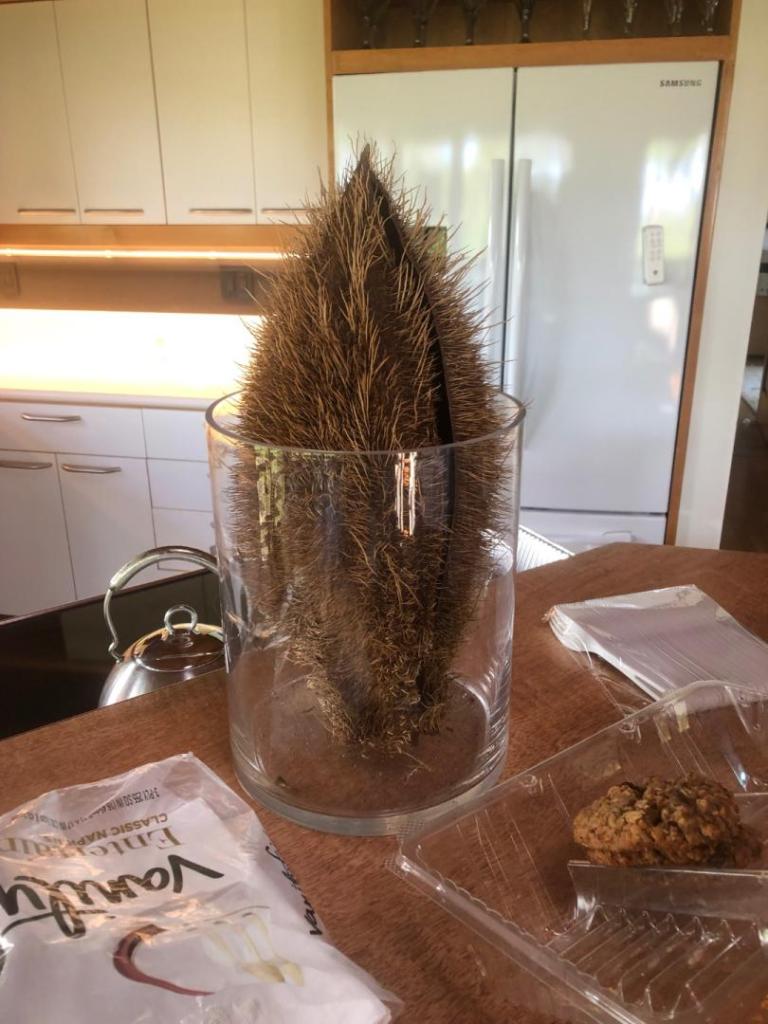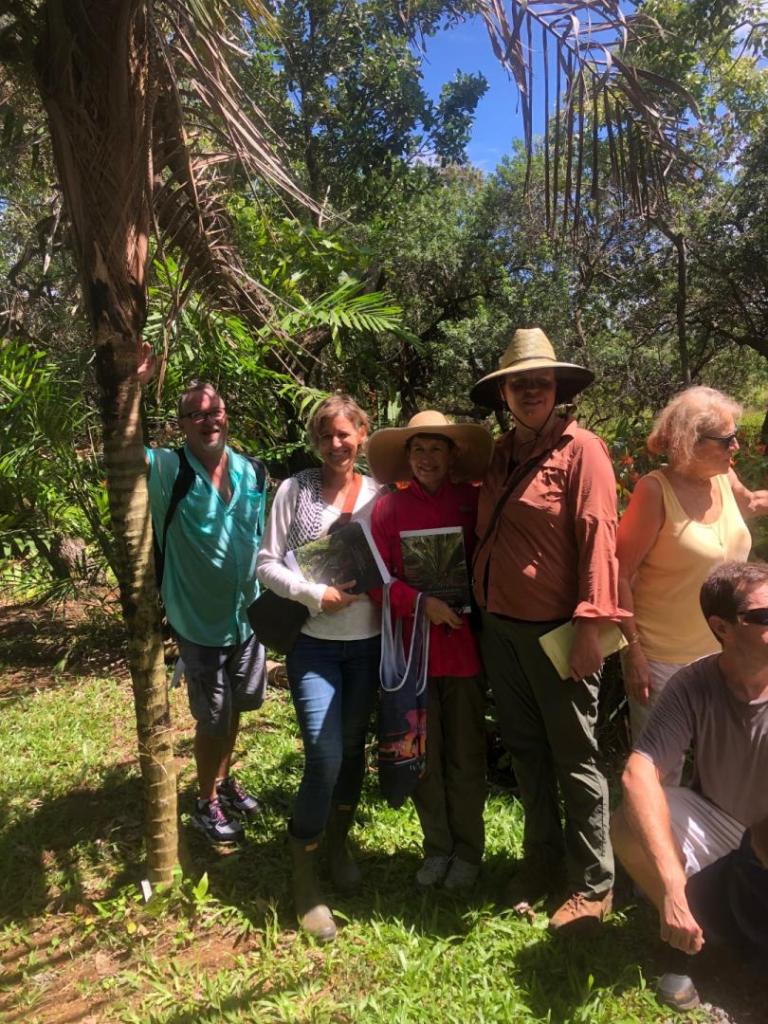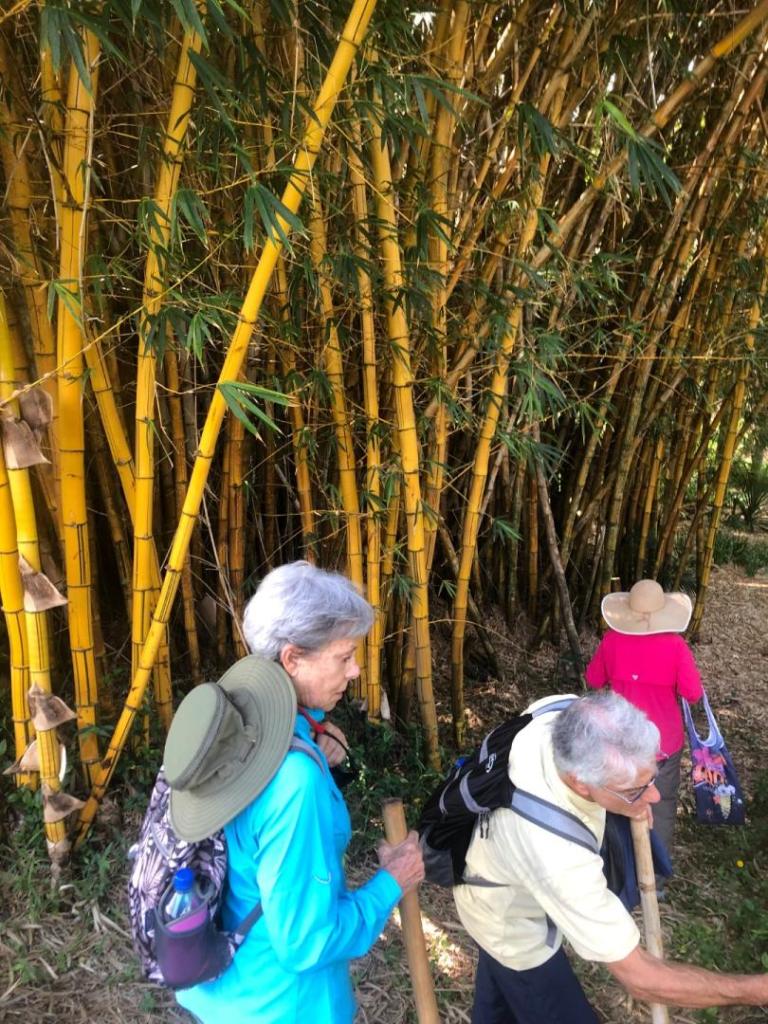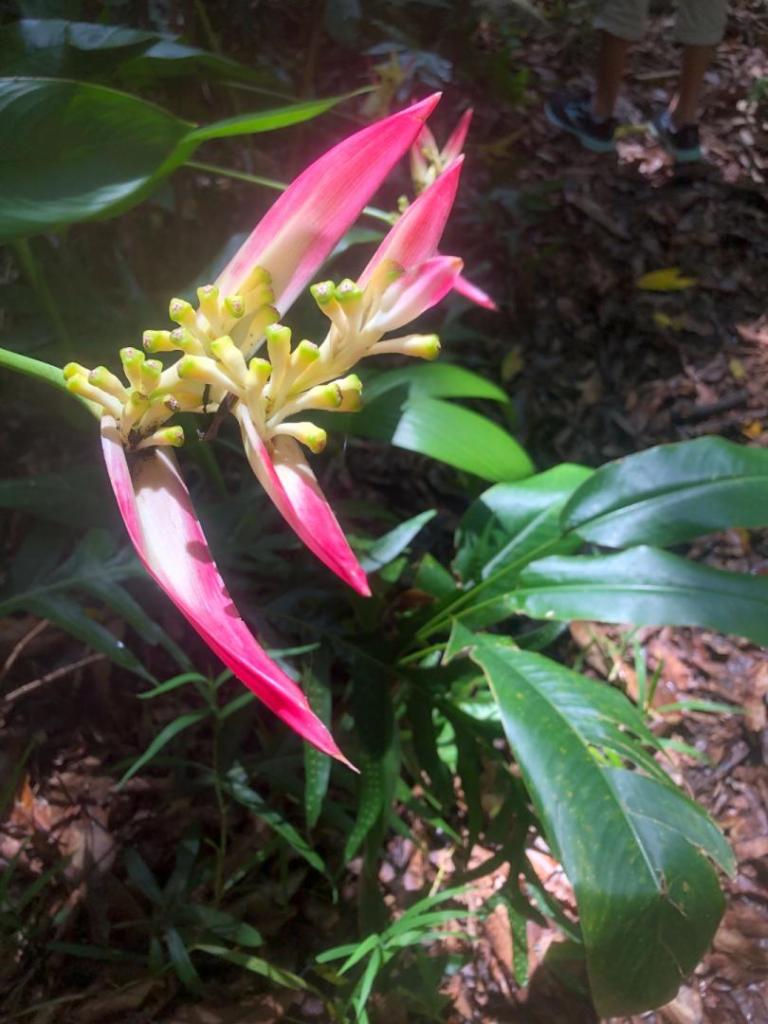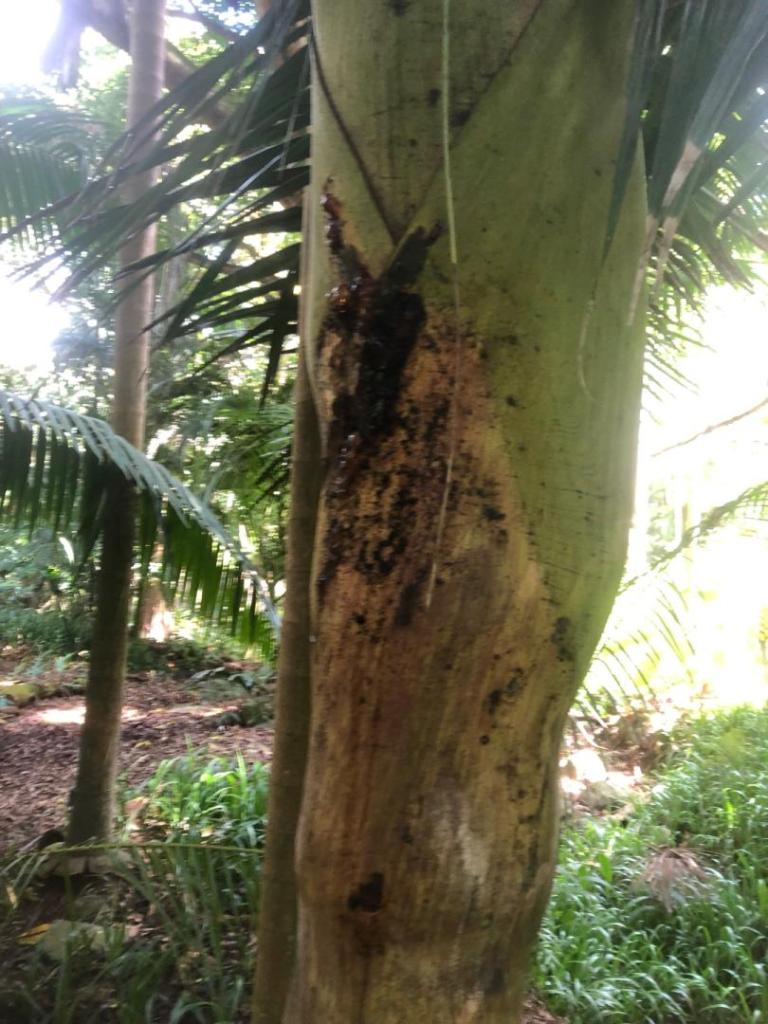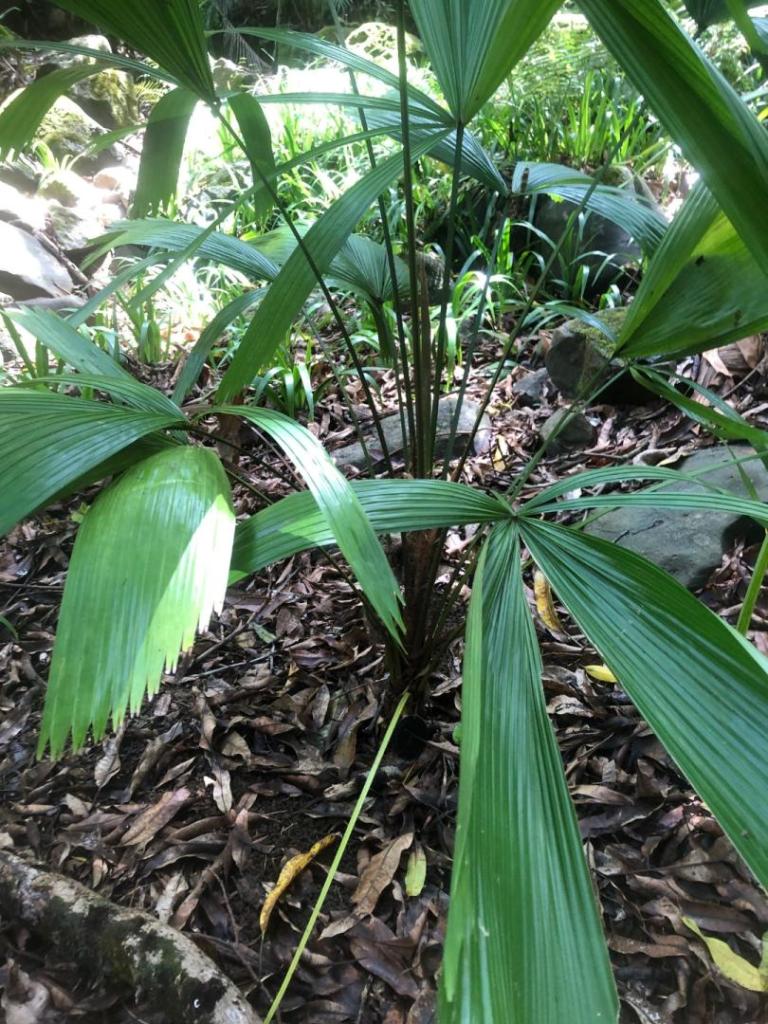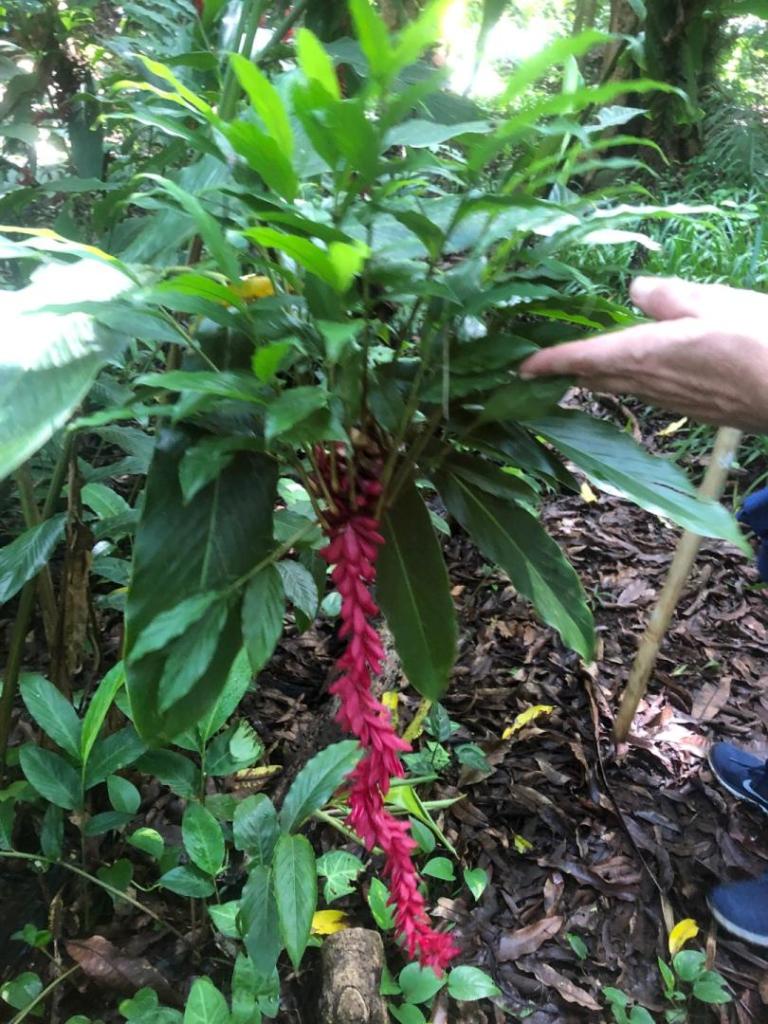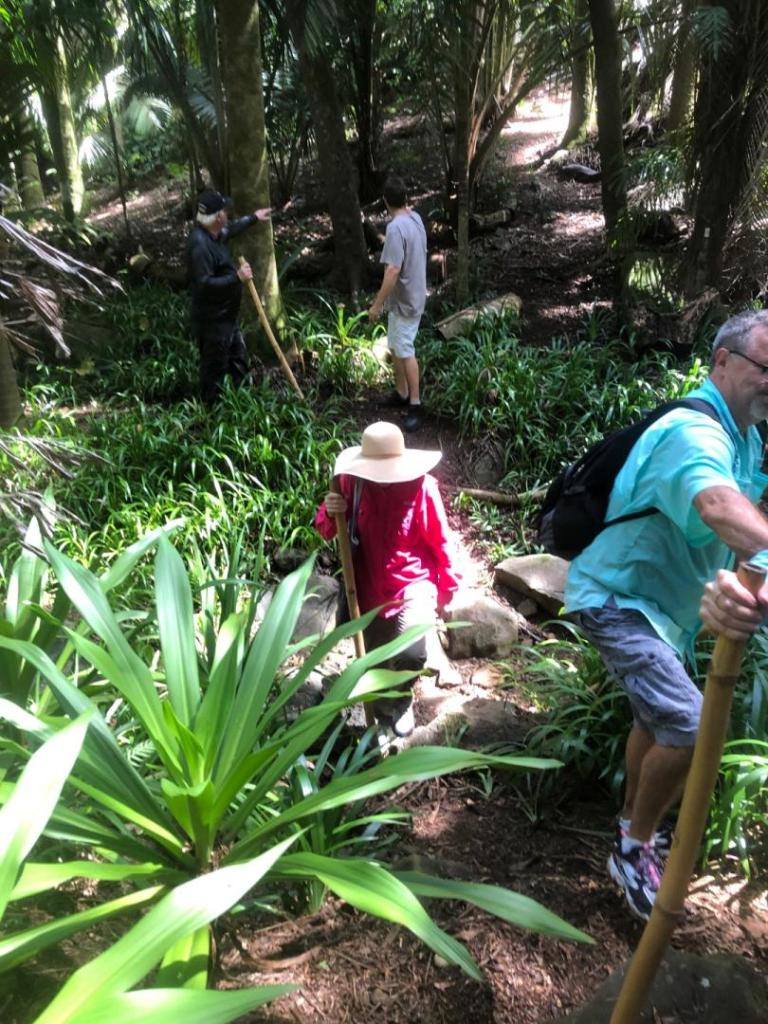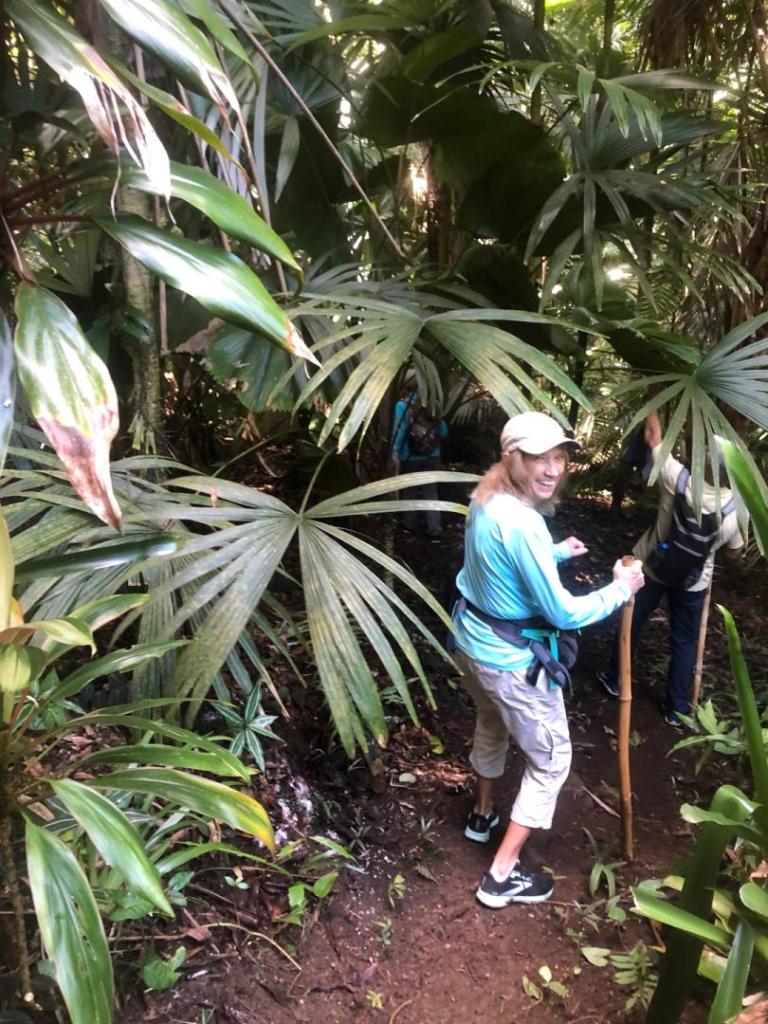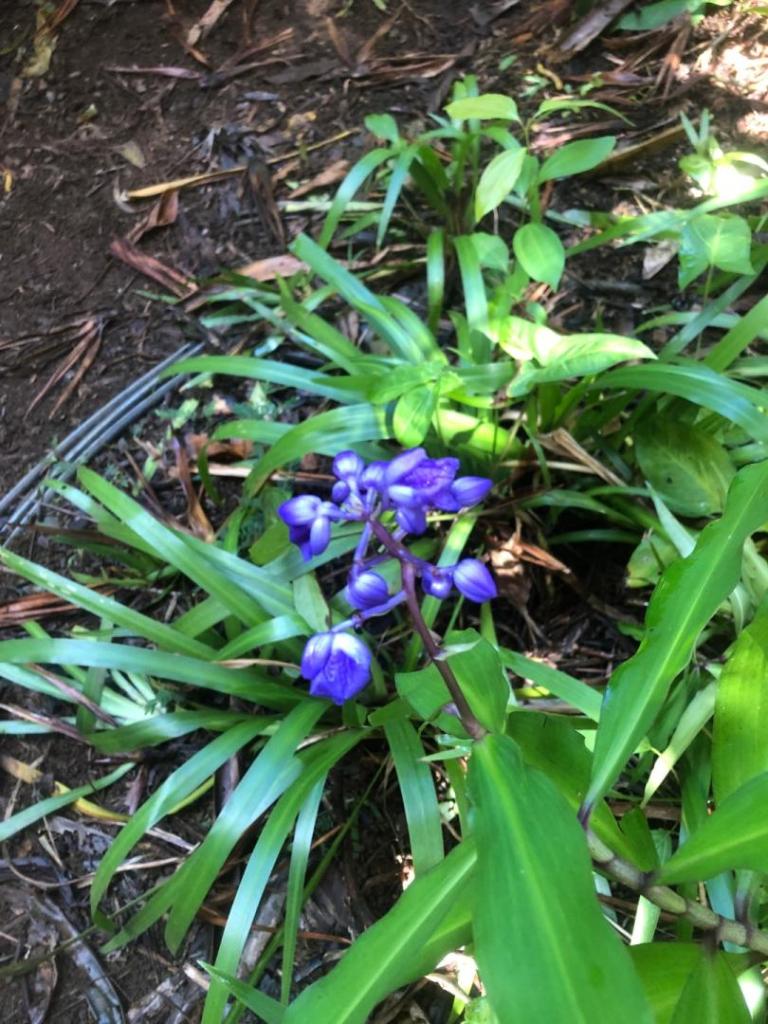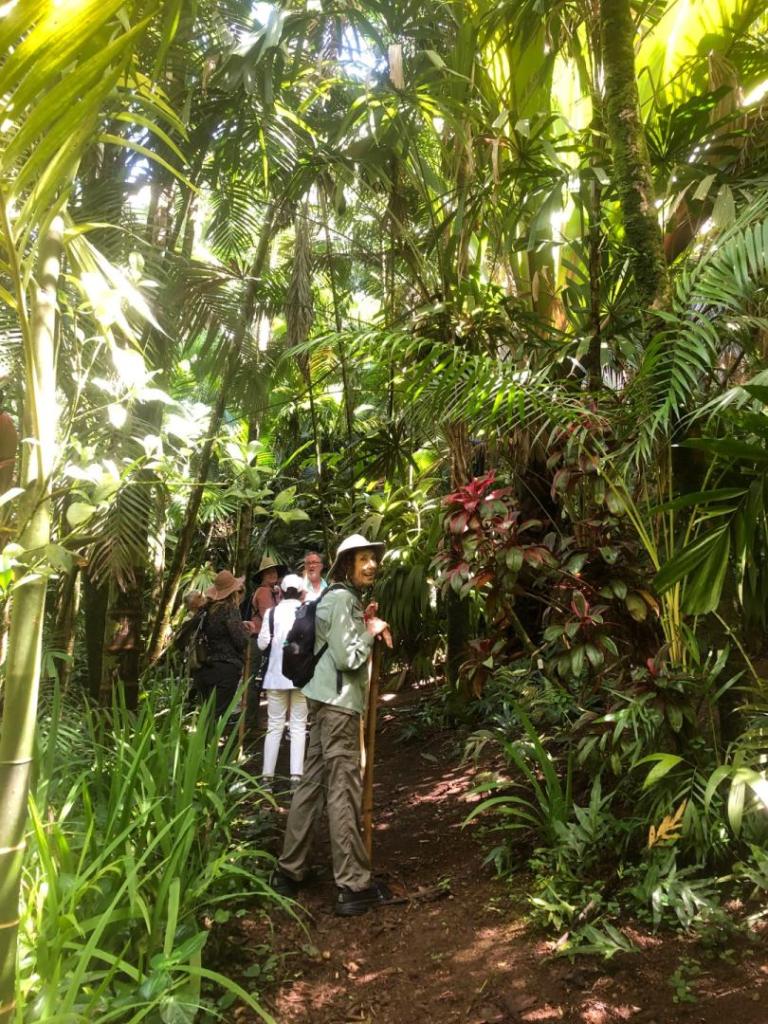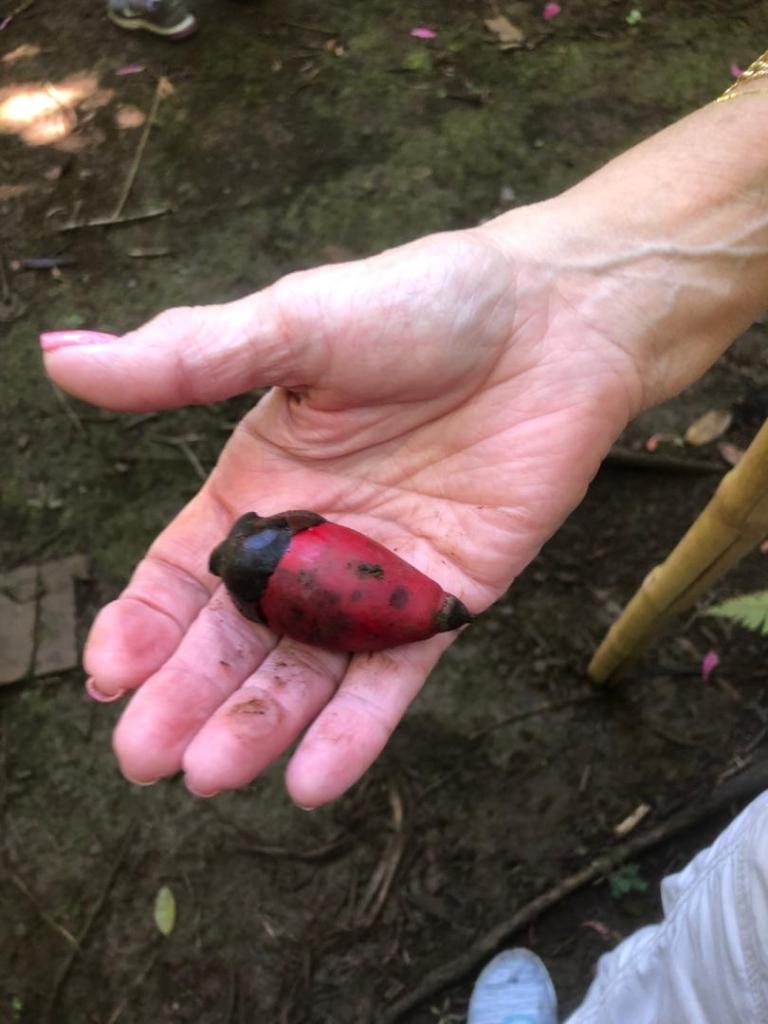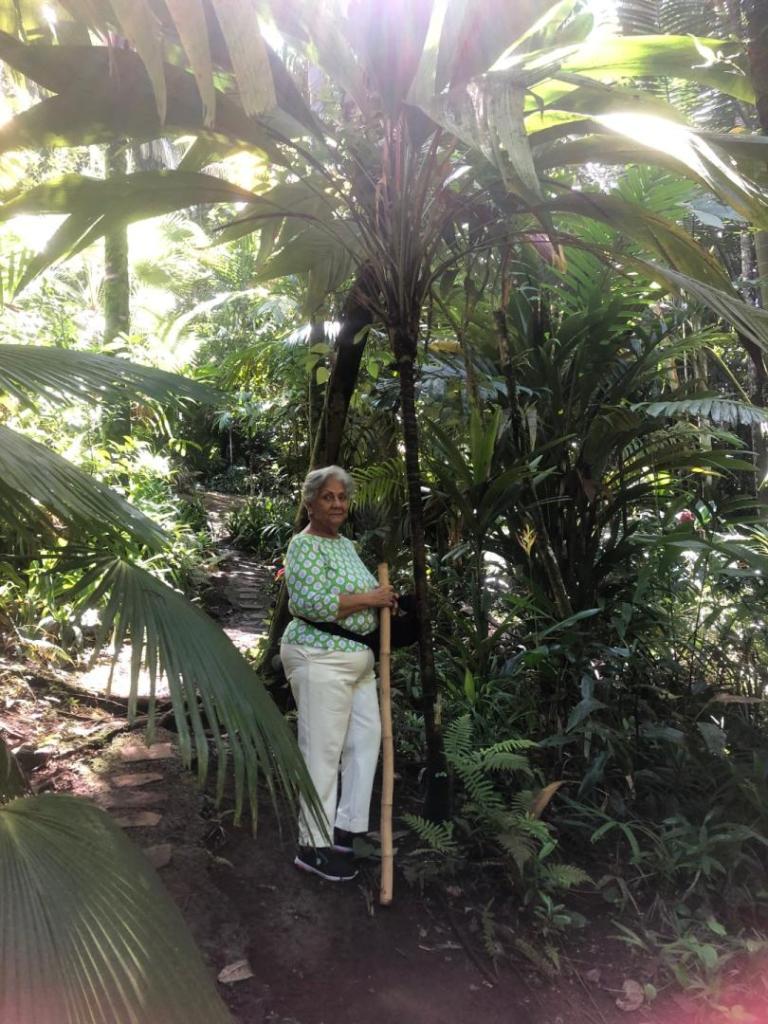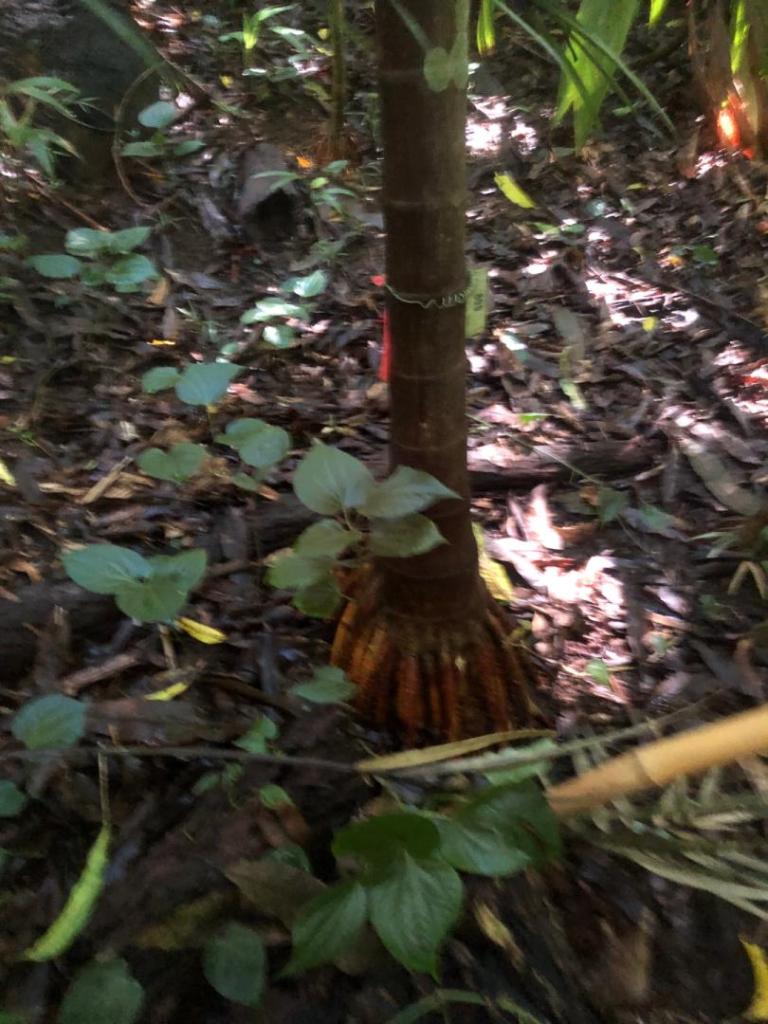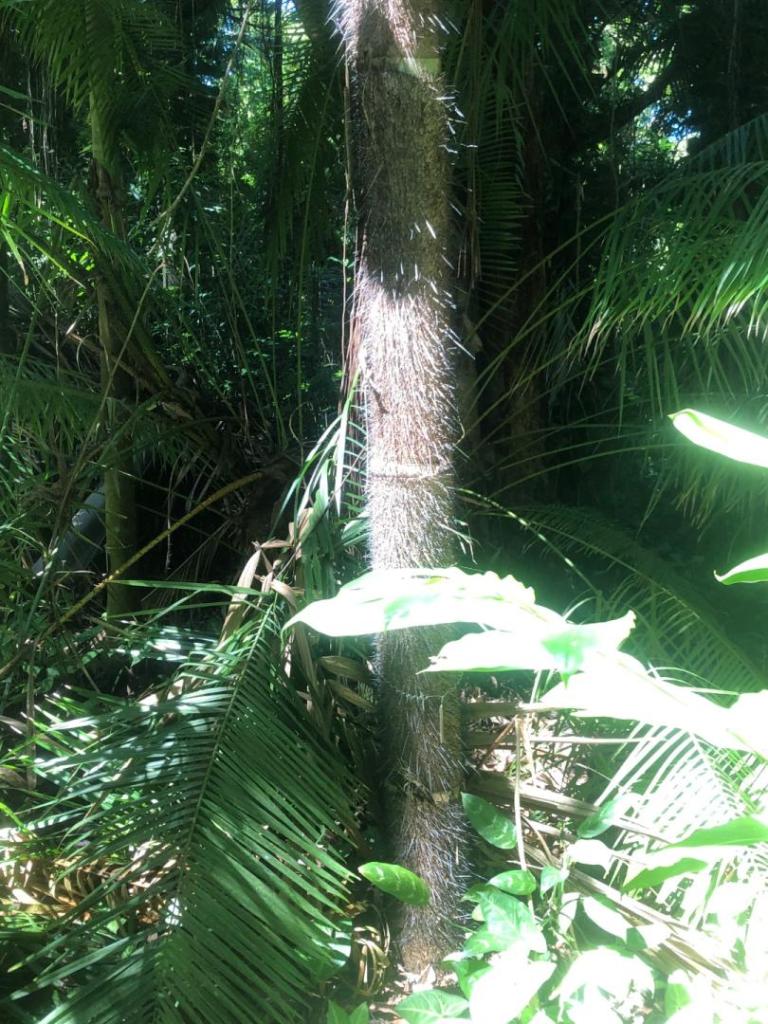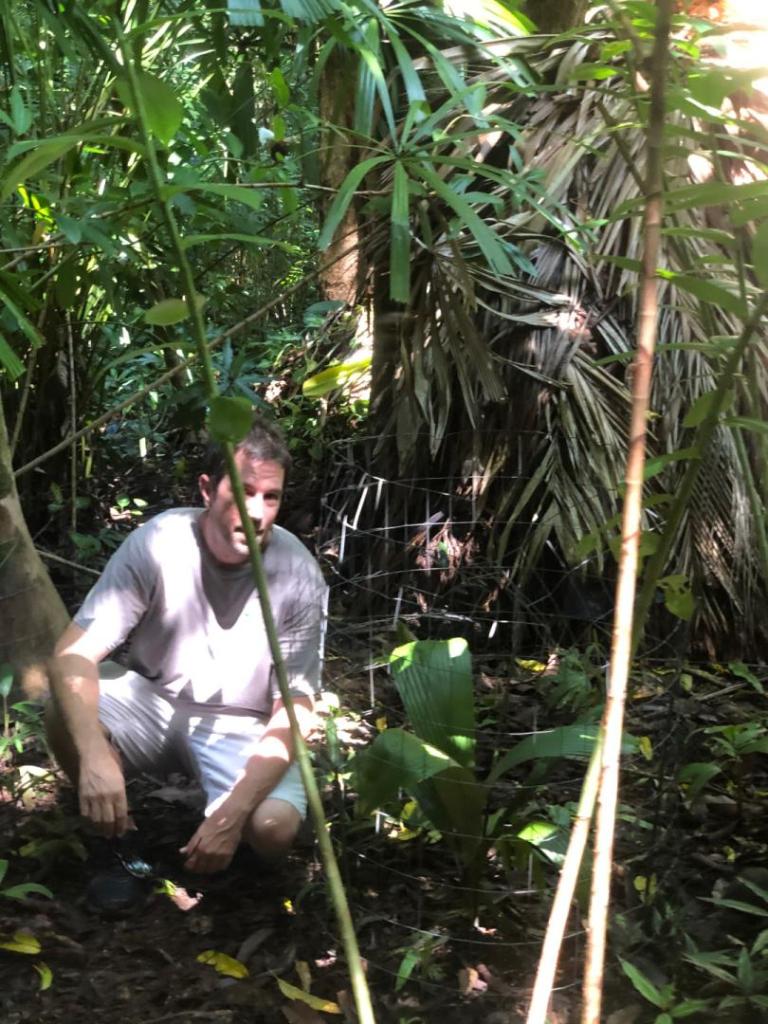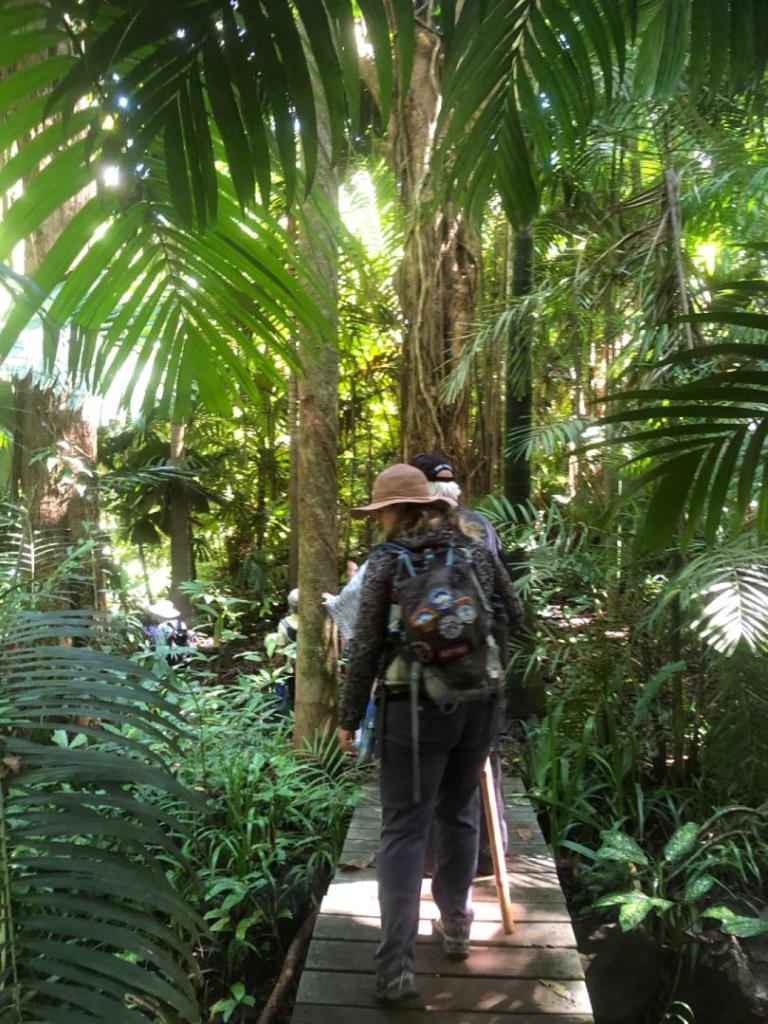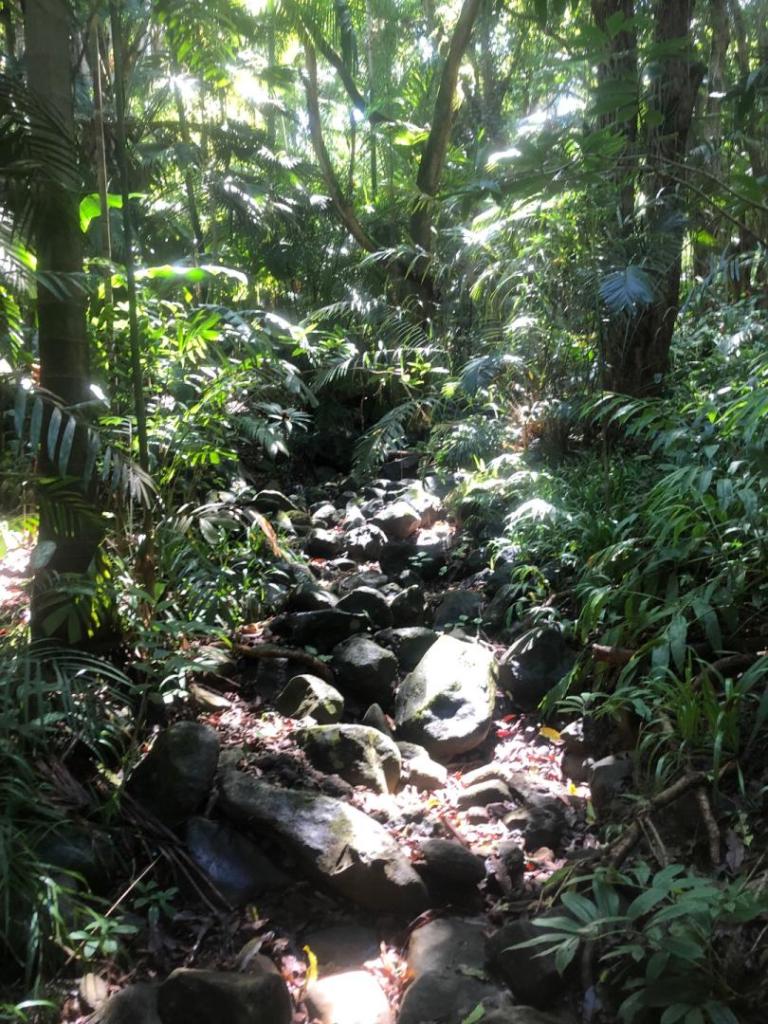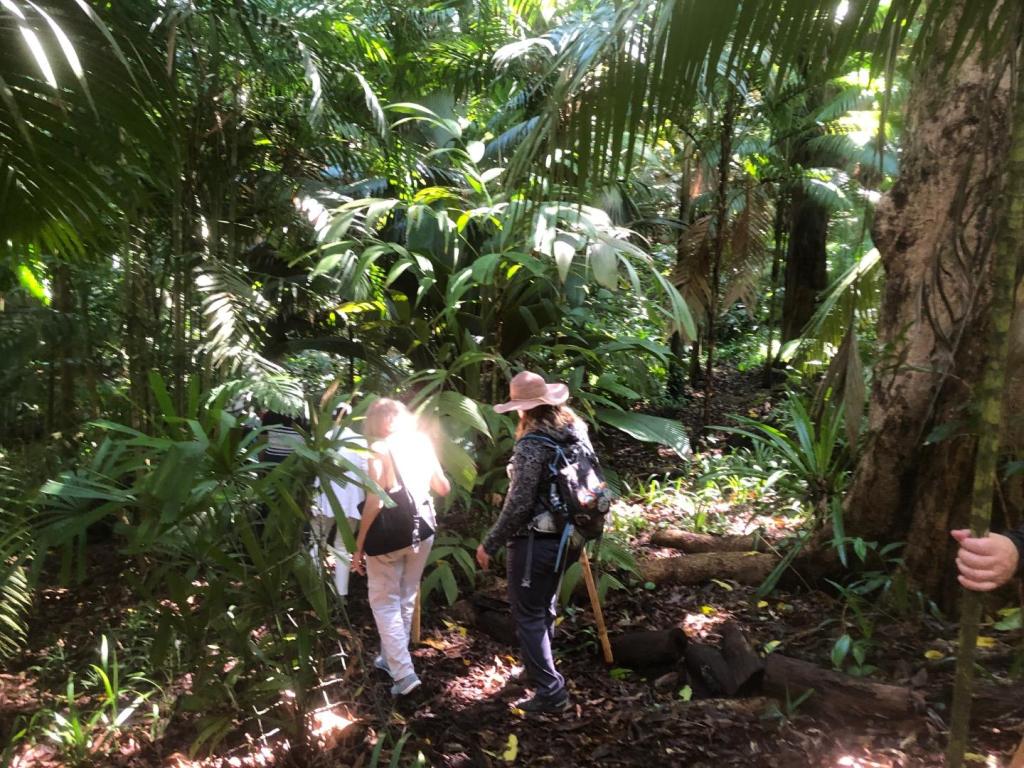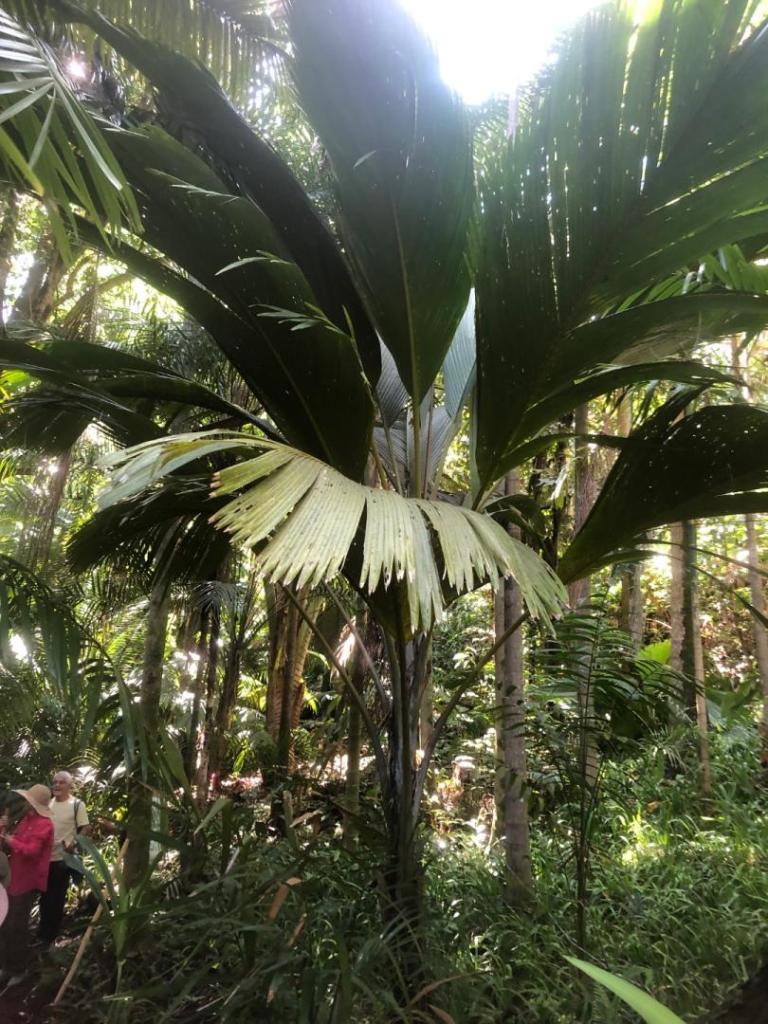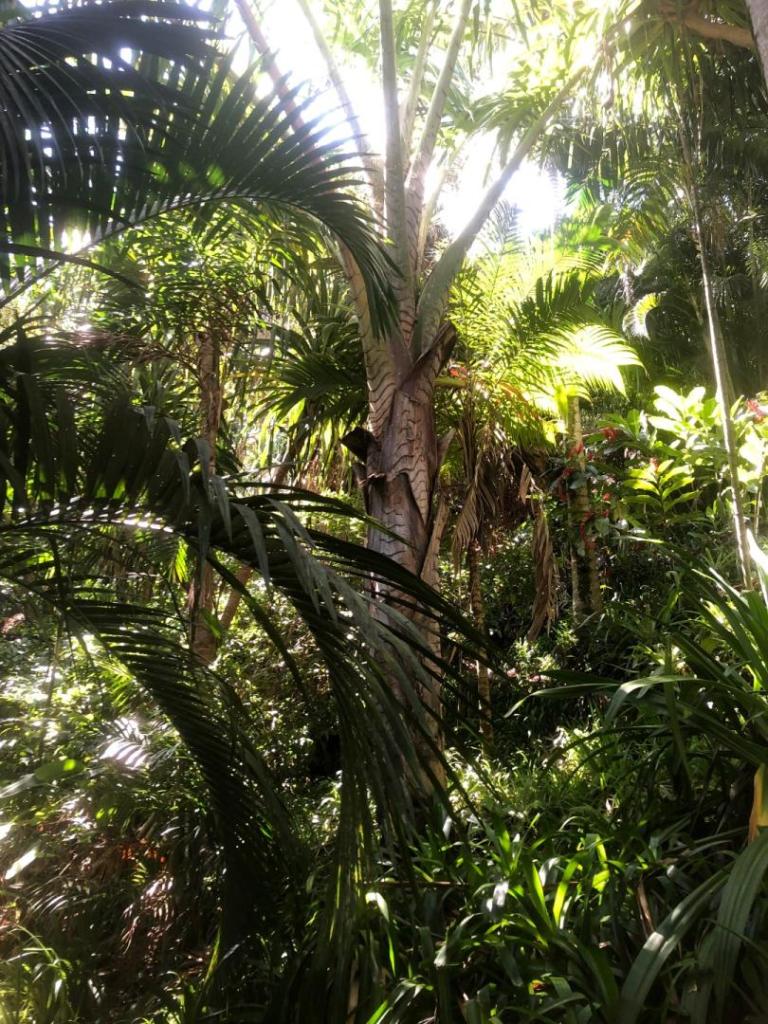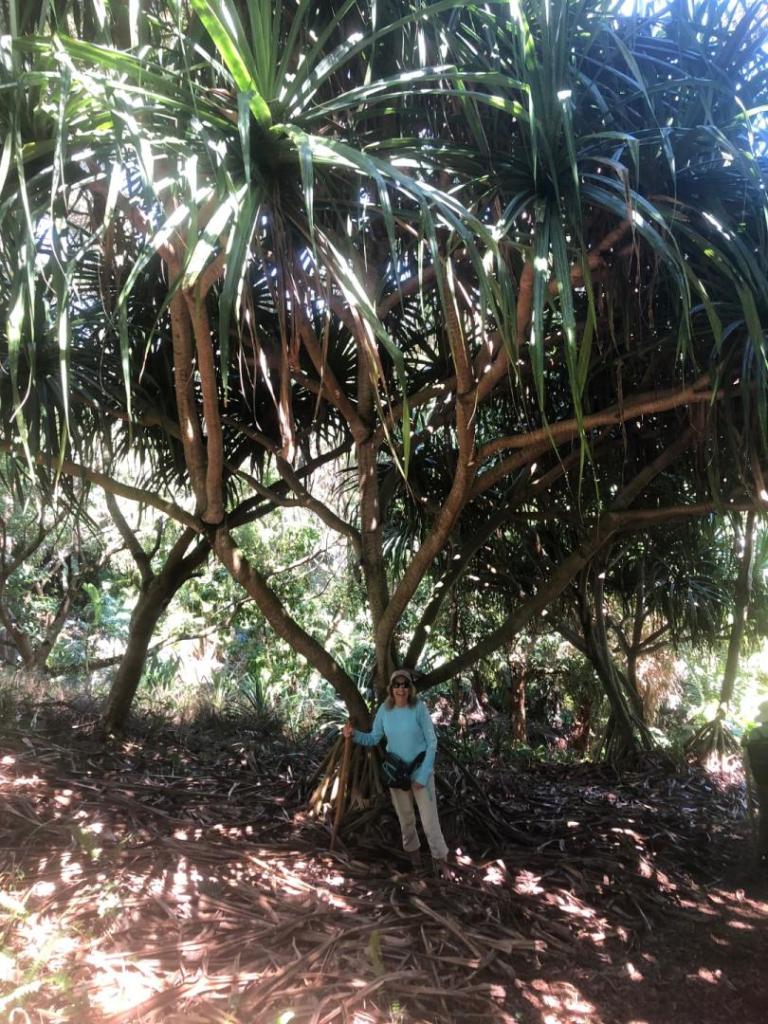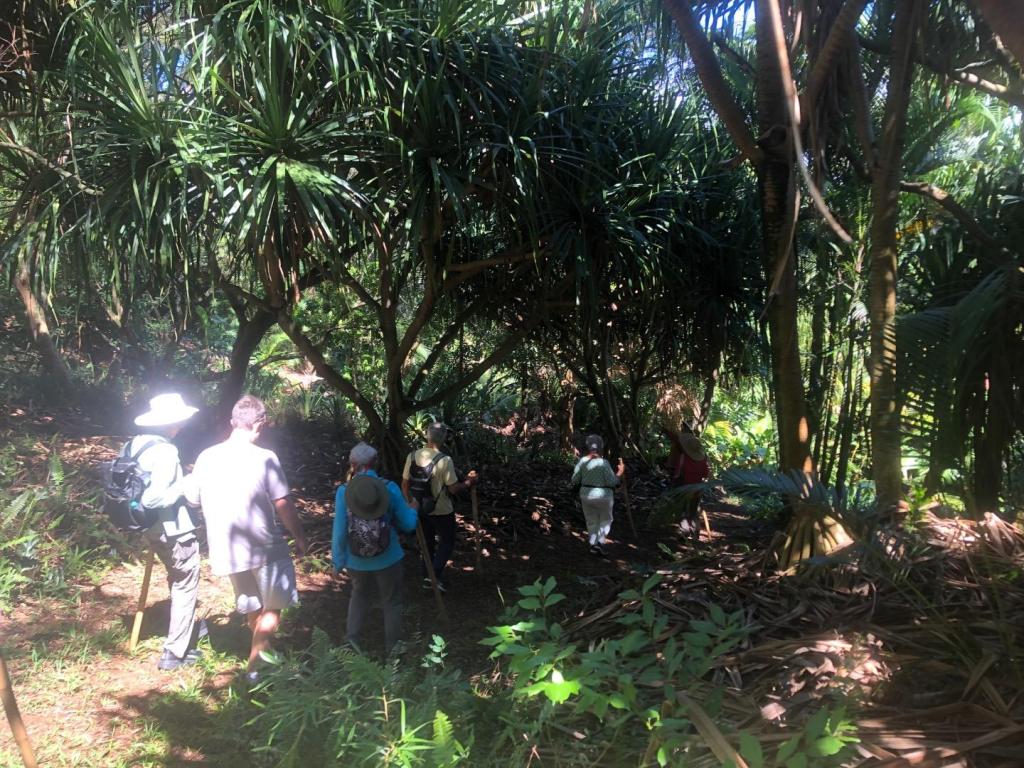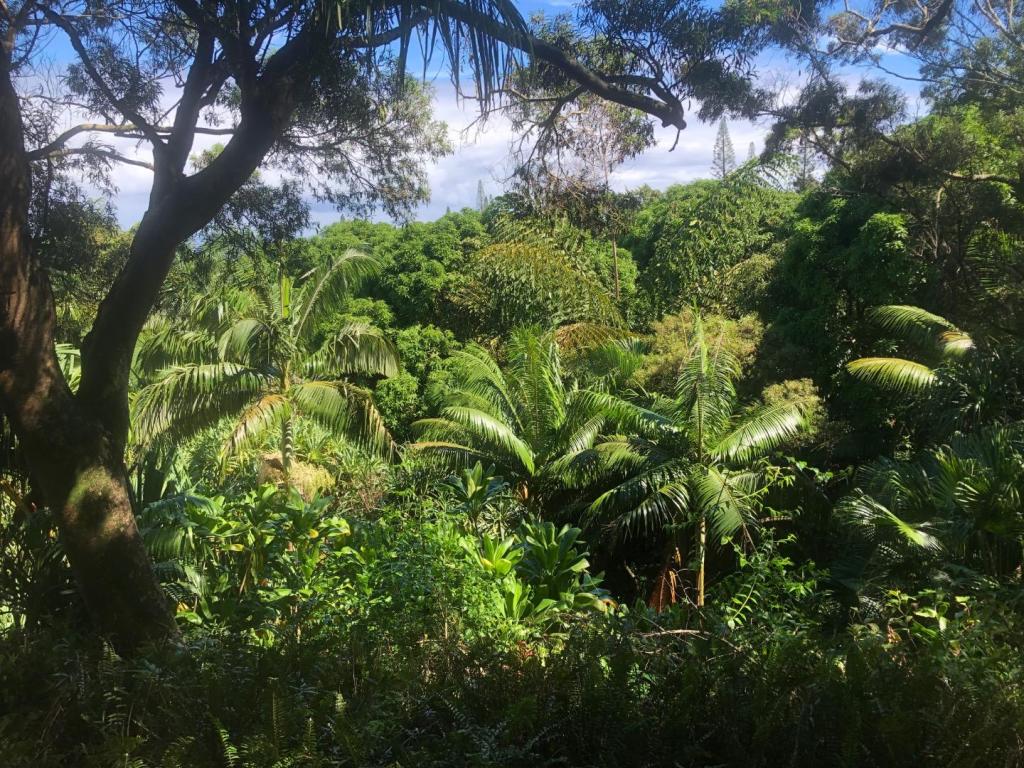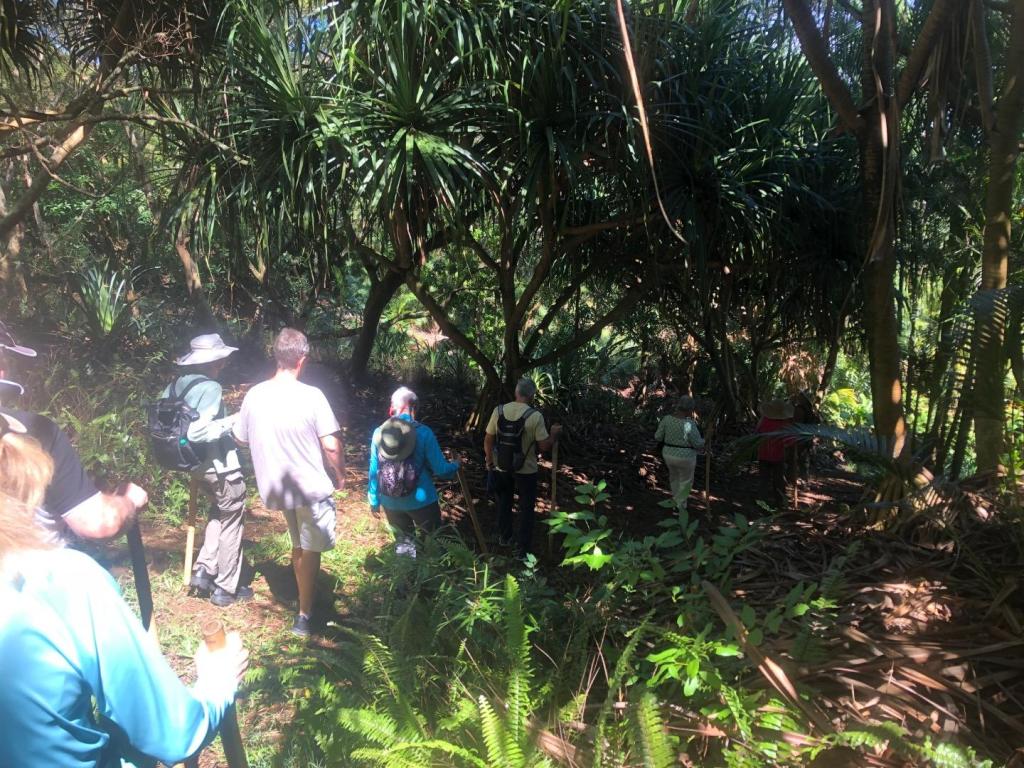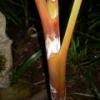Leaderboard
Popular Content
Showing content with the highest reputation on 04/19/2024 in all areas
-
I got more information from the nursery man, who planted this palm in November 2019. I inquired about the use of various fungicide's recommended by connoisseur, Steve Stern. None of these has been used on this specimen. That stated, it would probably help substantially if they were used. During this time frame, the minimum temperature recorded at PBIA was 37°F. Low 40°F (43F) temperatures nearly every year at the airport during this time frame. At all times, the median temperature well exceeded the necessary Koeppen temperature required for tropical rendering. In fact, most months median temperatures were closer to 70°F than the required 64.8°F. This palm is located at latitude, 26.93° north. It is in an area surrounded by water not far from the ocean. However, I would not describe it as "flourishing". It reminds me of the Newport Beach Coconut. The browning tips of the Palm are evident. This is definitely a very ticklish palm that requires close attention for success in southeast Florida.4 points
-
3 points
-
This is the most it has ever grown this early . I know it's because I kept the incandescent lights on it with the blankets into April , and I forced it to grow faster . It is almost respectable and it's only April . I know many have seen this palm , but it is my baby and I have been so impressed with its growth . I say I'm in 7B but I'm actually a few hundred yards into 8A now . But I'm sure I'll have more 7B temps in the future . Sorry I don't have Shaylen modeling . Will This picture below was earlier when I just took off the blankets :2 points
-
Purchased a couple of Metallica champs for the garden they will be group planted I have some good specimens already in my garden but you can never have enough chamaedorea in the garden especially this beautiful little palm there wa# also two Caryota maxima in the order as well I also have two giant specimens in my garden so I know they grow well2 points
-
This is what I’m getting at. When I say fast I’m talking number of fronds per year. Who wants to stare at a telephone pole and get a neck pain every time you want to enjoy the foliage? Plant queens if you want a palm that goes vertical real quick. Alfredii is the opposite. Just my 10 centavos…..2 points
-
2 points
-
I'd agree with the other comments on Sylvesters. They are getting wiped out here in Orlando now, and I'm about to remove an infected one in my front yard. Personally I'd avoid anything Phoenix, as it's not clear what other species are at severe risk. As far as other palms go, you could look at it as two categories: Easy sale "common" palms like Queens, Livistona Chinensis / Nitida / Decipiens / Saribus, Mules, Rhapis Excelsa "Lady Palms," Foxtails, some Dypsis/Chrysalidocarpus Lutescens, Bismarck, Fishtails, Pindos, Kings, Ptychosperma Elegans, etc. Those could be easily sold any time, but you wouldn't make much on them...they are more "commodity" palms that are grown by a LOT of nurseries. But it could make sense if you need a minimum acreage or sales volume to qualify for tax breaks. "Unusual" palms that may command higher individual prices, but are either slower growing or less in demand. Those are the sort of "collector" palms that we like here. In Zone 11 you could grow almost anything, and much faster than in zone 9 or 8. So you could grow Arenga Engleri, which commands biiig prices in Jacksonville. Or unusual tall palms like Arenga Pinnata or Attalea Cohune. Beccariophoenix Alfredii is another good one that should grow pretty quick in SFL. Any of the Copernicia would be good, as well as other interesting palms like Kerriodoxa Elegans, lots of options in the Licuala group, some of the "other" Syagrus like Schizophylla and "Coco Queen" Schizophylla x Romanzoffiana, etc. Many of these are "easy grows" if they don't see freezing temps, and could be shipped to Zone 10-9b areas easily. Overall maybe a mix of common and unusual is a good choice. But avoid Sylvestris.2 points
-
It looks like there is some chance of rain near @flplantguy and my location, a little less chance for @SubTropicRay, and nothing but hot sun for @Looking Glass in the forecast for Monday. Lakeland (KLAL): Brooksville (KBKV): South Tampa (KTPF): Ft. Lauderdale (KFLL): The top couple inches of soil here are a bit dry where exposed, but a few inches down there is moisture available for the plants. The photo below is of some soil from an area I de-sodded as part of a regrade project last weekend. Notice the top is bone dry, but turning it over with a rake shows there is still moisture present:2 points
-
1 point
-
@Mr. Clark Welcome to PalmTalk! Because of where you are located, you can grow practically anything. That said, if you want to get the nursery "into the black" as quickly as possible, you'll want to get yourself a guaranteed revenue stream with stuff that can grow fast and wholesale just as fast to commercial and government customers. Residents also buy most of the palms below and many of them are outside of the typical "Phoenix/Syagrus/Washingtonia/Sabal/Butia" that wholesalers have relied on in the past. Roystonea regia (Royal Palm) and Cocos nucifera (Coconut Palm) are an easy sell to consumers. Down your way they are common, but Royals are increasingly being used here to replace the more disease-prone Syagrus romanzoffiana (Queen Palm) and Phoenix species. The aforementioned Beccariophoenix alfredii is increasing in popularity rapidly from Jacksonville down along I-95 and the entire I-4 corridor. Mules are the even-hardier pinnate palm for cooler areas. Our municipality plants both everywhere. A good family of palms to sell includes Veitchia arecina (Montgomery Palm), Adonidia merrillii (Christmas Palm), Wodyetia bifurcata (Foxtail Palm), and Carpentaria acuminata. Where you are located and in most of South Florida, any of these can grow anywhere. In Central Florida, Christmas Palms and Foxtails sell quickly for residential landscaping and hotels. Veitchia are more of a novelty here, whereas down your way, they line streets and are planted near buildings. Carpentaria is more of a dark horse of the family, but is a good palm for areas that require a Veitchia look with a smaller crown. If you hybridize Veitchia and Wodyetia, you'll get the highly-coveted "Foxy Lady" palm. Another good family of palms to include is Bismarckia nobilis (especially the silver variety) and at least Latania loddigesii (the Blue Latan Palm). Bismarckia is popular throughout almost the whole state and grows pretty fast once the root system is in place, and I've increasingly seen Blue Latans used in milder areas near me, like Winter Haven and Palmetto. Another easy seller is the Archontophoenix genus, especially Archontophoenix cunninghamiana and Archontophoenix alexandrae. Collectively, King Palms are very desirable and the supply is way lower than the demand. Archontophoenix cunninghamiana becomes viable somewhere around coastal JAX or St. Augustine. Archontophoenix alexandrae tends to do better a bit further south, but you'll still have a market for them in roughly 2/3 of the state. The Chambeyronia genus, which has now swallowed the Kentiopsis genus, has a lot of popular, chill-tolerant crownshaft palms you can sell to 2/3 of the state. The big sellers would be Chambeyronia macrocarpa (all varieties), Chambeyronia oliviformis, and Chambeyronia pyriformis. The Chrysalidocarpus (a.k.a. Dypsis that grow in Florida) genus tends to sell decent. Probably the most sold is Chrysalidocarpus lutescens, but Chrysalidocarpus decaryi probably isn't too far behind. Chrysalidocarpus leptocheilos, Chrysalidocarpus pembana, and Chrysalidocarpus lanceolata would sell better if they were more commonly available. These grow a bit more slowly than most of the other palms above. With the arrival of Lethal Bronzing in Florida, I'd be remiss if I didn't mention the Livistona genus. In particular, Livistona decora is a prize for municipal planting here. Livistona nitida, Livistona mariae, Livistona australis, and Livistona chinensis are also planted frequently. These also tend to reach mature size at a later time than some of the tropical and subtropical options above. This list is a bit myopic since these are primarily what is bought along the I-4 corridor and areas either further south or with similar microclimates along I-95, but it gives you a way to operate at a profit in a shorter amount of time and still provide a unique inventory to most of the peninsula.1 point
-
thanks for the input! going to look into these suggestions this weekend. I will try to post a few pictures tomorrow.1 point
-
New member, but have been getting some good info from everyone on this site for a while. Started getting some palms a few years back and got inspired to start a bigger garden. In DeBary FL, about 30 miles north of Orlando. Progress so far: 2 B. Alfredii, one on the left planted from a 15g in June 2022, other went in this week from a 25g. Archontophoenix Cunninghamiana planted from a 7g in November 2021. Side yard has a couple of flamethrowers, Chambeyronia Oliviformis, another king palm, Lanonia Dasyantha, Caryota Obtusa, Chamaedorea Radicalis x Cataractarum (most likely) and Chamaedorea Microspadix. Plenty of other tropicals mixed in, big fan of Plumerias. Always run the risk of a hard freeze, but taking advantage of some high oak canopy and looking forward to a dense jungle look in a few years time.1 point
-
I agree with Jim's recommendation of Mules and Beccariophoenix alfredii. FDOT has been buying up Mules for their highway planting and B. alfredii is starting to be more commonly planted commercially. However, both are relatively slow growing and not really utilizing the full extent of your climate zone. You might also consider adding in some more tropical stuff like Satakentia liukuensis, Carpoxylon macrospermum or Chambeyronia (Kentiopsis) oliviformis. These are faster growing and may turn a profit sooner. You might also consider some of the South Florida natives that are becoming more common for coastal plantings in Central Florida like Pseudophoenix sargentii and Thrinax radiata. Mass plantings of Royals are pretty ubiquitous and you might run into issues with how much water a large planting of royals will need. They should meet your criteria of high disease resistance though.1 point
-
Mules and Beccariophoenix alfredii (High Plateau Coconut) are the two “hot” palm species now since they take some cold and have a Coconut personality.1 point
-
With a global temperature rise of 1°C since 1880, I doubt that’s been the main reason for a few area’s planting zones going up. There are many factors involved. The earth was MUCH warmer and with much more plant life at a point in prehistoric time. My area is a zone 10a, not 10b but we’ve been fortunate to have 10b winter lows most winters since 2007.1 point
-
Welcome to PalmTalk. Would you like to share pictures of the nursery? I think that would be cool to see.1 point
-
This conversation has led me down quite an unexpected rabbit hole. @swolf I found this thread below that you were part of back in 2008. I know Merrill is no longer with us but I have to imagine that someone from this group knows a thing or two about the specific palms I posted pictures of. Tank seems like a good person to ask but it appears it’s been about six months since he was last on. Beyond that, this thread has a really impressive list of unique palms that have taken 10 degrees. I’m sure some people would enjoy reading it.1 point
-
"No skirt leads to dark hole" Just be sure to pick the right hole1 point
-
Here it’s dry as a bone. Grass is drying up despite frequent irrigation. Some palms are not thrilled. I just hand watered all the palms deeply, and am right now running irrigation over that. Super dry sand all the way down here. We need a decent soak pretty bad. Water bill ain’t gonna be pretty this month, and nothing on the horizon for now. I call this time of year, “The Starving Time”. Usually around now I start wishing I planted more Caribbean/Cuban and native palms as they tolerate the dry spells well.1 point
-
Water it a lot for the entire upcoming hot season. Hopefully experts here will comment how much. Be cautious with fertizer for now. Again, hopefully experts here will comment when to start, and how much to use. The appearance of the lower part of the palm will not change very much. The first sign that the palm is doing better will be new fronds growing. Those will emerge as "spears". I think you may not see any new spears for months. As noted earlier in this thread, this palm was underwatered and overpruned, to begin with. Now it will experience transplant shock. Unless you were able to dig up a very large rootball, which would be very hard for a palm of this size, then the transplant shock may be severe. Right now, your goal is survival. Your palm may look very impressive in a few years. I congratulate you for your $700 experiment! I hope it succeeds!1 point
-
🎵 ....We've come a long, long way together. Through some cold times ...and some rain. I have to ....Celebrate you, baby.. I have to praise you like i should... 🎶 ....Some ~slightly~ adjusted lyrics from the wayy back machine to welcome in the second best time of year, esp. here in the Desert.. Randoms.. Phacelia ..crenulata ..Closer to being sure on the ID. Have others popping up elsewhere from seed i'd collected to compare these to when they start poppin'. Calliandra eriophylla Penstemon parryi Pretty sure there were Black Chinned Hummers checking out the taller parryi when peeking out the window this morning after awakening. P. superbus.. Differences obvious now, lol. Dogweed, ..or Gold Fields < Genus Lasthenia > ( No clue where they came from. Didn't order seed of... ) 2024 crop of Salvia coccinea already flowering.. ..................................The Globe Mallow Sisters..................... S. laxa ....Ready to go S. "... Not quite sure yet / Boyce Thompson / Picket Post area collection... " .....Almost ready to go S. coulteri ...On the way.. This specimen anyway. Other that popped up is bloomin. Lupinus sparsiflorus about to pop L. texanus.. Moving a bit faster now ..At least out by the sidewalk. ....Flowering by??? ....Mid March??? Senna covesii ...joining the party.. ....While the in ground Plumeria... ( Crossing my fingers this is the year for my special specimen ) ...Galactia wrightii ...Mealy Blue Sage ...Berlandiera lyrata and Aristiolochia fimbrata all awaken from their winter naps.. Ratibida columnifera too ..As usual, the over achiever between the plants out there is already just about ready to pop.. Other specimens, up closer to the house ( and currently in more shade ) aren't even budding yet. Some complain the desert is a stark and boring place devoid of much interest / options ...or that flowers are boring.. ...I look out the window and laugh, ...hysterically, at such narrow minded, dull, and squared " views".. Never a dull moment / lack of color, 99% of the year in this yard ...Except maybe during the worst part of: " Hell Season " Ha Ha. Welcome, ...to Spring...1 point
-
Alrighty everyone send me a message with address and I'll ship some out soon. I wanted to make sure I send to everyone all at once.1 point
-
1 point
-
1 point
-
Queens aren't that tropical...I was thinking more along the lines of royals and foxtails 😆. Queens are one of the cheapest and most available palms, they'll be back. No but seriously a lot of non-palm zone 9b/10 stuff make for great dieback perennials. I don't care if guava, star fruit, or June plum die to the ground occasionally...I'll still get a ton of fruit in the years that they don't die. Just put an atemoya in the ground to test. Tons of tropical foliage/"houseplants" you can grow this way too like many Ficus and Schefflera.1 point
-
there were a couple yucca at a site i was working at which were going to be run over by the skid steer so i dug them up and brought them home last spring... then in the late fall i planted them up north near midland ontario canada i went up there yesterday and it looks like they survived the winter! although it was a mild winter...1 point
-
A lil' Sunday color... Late season CA. Poppies, CA Buckwheat ( white flowers ), Senna covesii ( yellow, lower left ), Erythrostemon palmeri ( yellow / center ) and the yellow flare up of Parkinsonia florida lurking in the background on the lower right. Palms are obvious. ....And the next batch of seed viability trials.. Tossed in pots today: 🫰 Ceiba erianthos, FL. sourced. Sent back in 2018. Amourexia / Cochlospermum palmifidum. S.E. AZ sourced. Sent in '22 Bolusanthus speciosus, Tucson sourced. Sent in '18 or 19. Albizia sinaloensis, locally sourced last year. ( Not from mine.. Too small to start flowering ) Mimosa palmeri, Sonora Mex. sourced. Seed sent in '17 or 18. Mimosa xanti / now listed as M. tricephala xanti. Sourced in Baja. Seed sent in '17 or 18. Senna hirsuta v. glaberrima. From my own specimens. Sown to test first harvest overall viability.1 point
-
1 point
-
1 point
-
A few on your Saturday...... I spy a visitor.. Clitoria mariana, leaves get bigger each year.. Plumerias, waking up Almost done with the front bed extension.. Was nearly complete when i looked at and said " ..need to remove another sliver to come to a satisfactory width for everything going in there " ( Purple line ) Magenta dot is a sprinkler head i'll be removing / possibly placing somewhere else.. As mentioned, Penstemon in there will be moved after seed on them finishes ripening. Waiting for that just in case the plants themselves fail to transplant. Other stuff ..Desert Marigold / a few Senna covesii may be totally removed to " clear the slate " so to say. have plenty of seed from the Senna, and Desert Marigold are easy to re- sow as well ...so no big loss in yanking them to get the bed finished. Looking at it now that it is wider, gonna need 3 more Baja Ruellia. 3 won't be enough, lol.. While i'm sure i'll waver a little, here's one idealized chicken scratch idea.. Purple = Ruellia, Orange = specific Plumeria cultivars that should stay in the 6-11ft height range, and produce flowers that have some Orange in them. For the most part, Native Annual color will stay on the outside of the Yellow line. May change the rock type / size/ color in that area too. White is a one of a kind center piece.. Something extra rare or one of a kind that deserves to be seen. Won't say what i've decided on yet, but needless to say, it's definitely uncommon ..but shouldn't be. Hasn't flinched thru any of our winters ..or summers in it's pot so far and should be a perfect complement to all the other unusual stuff planted out there. Overall, centerpiece / Plumeria / Guaiacum coulteri out there should provide a nice break between the yard and street / traffic ( Maybe even a little shade, once taller at least ) but not overwhelm the space / get so tall that they take away from the view of the palms / trees across the street / sky ..and add lots of color, ...on top of all the other color out there already. Bed is wide enough that any moron foolish enough to try will be trespassing if they attempted to steal any of the plants ( no excuse of " ..It was near / within easy reach of.. the sidewalk " ).. Would be a dumb idea anyway since there are LOTS of home / business / city cameras in this area of town, Police are present on our road / parking lot of the Med offices / Hospital across the street 24 -7.1 point
-
1 point
-
A few Good Friday Randoms.. Uncarina peltata waking up.. New stuff added, just in time for a good natural soaking this weekend... Back of the house side - bed finished / unfinished bed by the master bedroom started.. Live in the desert ..or similar dry areas of the West, must have a Creosote Bush planted somewhere in your landscape. This will be utilized as a living sun screen on the left side of the Patio.. Shouldn't take long to reach a size where it can be carefully sculpted to fit it's space ..Similar to the shot of a small-ish tree sized Creosote next to a Pygmy Date i've posted in the past, though hemmed in just a tad tighter. ....After watering it ..and everything else planted yesterday, patio smelled like Creosote after sunset. Main side bed along the west facing wall / notch bed by the " good " Bougainvillea: Russellia " St. Elmo's Fire " Flower detail Alternated Baja Ruellia, and " St. Elmo's Fire " Russellia.. Didn't realize this Coral Fountain selection can reach 4-6ft X 4-8ft so... the main bed might get a little more crowded than assumed ..which is fine. Since both plants will flower on and off at roughly the same times, should provide lots of color thru the year when they cycle.. Bed by the Master Bedroom in progress: Chilopsis " Sweet Bubba " A supposedly seedless ( Doubt it will be completely " Seed less " ) cultivar of Desert Willow. Gotta love a tree that might already have some flowers the year it goes in the ground too If curious why i planted it off center, rather than dead center in that bed, answer is simple... During the summer, sun angle hits that side of the house from about the angle of where the trunk of the tree sits.. Though desert Willow drop most / all foliage during the winter, nekked-ness at that time isn't an issue since the sun isn't near as intense on that wall as it is during the summer. Idea is it will fill out in such a way that it will completely block the sun from that angle.. Other stuff will be planted below / around it, inc a semi- compact / compact sized Plumeria cultivar near where the remaining Juniper stump is located. The two combined should provide great color, some afternoon shade, and wafting fragrance into the house on those stormy, warm humid nights in summer when you can open the window. As fast as Desert Willow grow / hot as that area gets, i won't be surprised if puts on enough growth to provide enough shade there to drop a Plumeria in by Fall.. We'll see. Soon, i'll start putting in the edging block to define the bed rather than leave undefined as - is. Tecoma stans " Sparklette " interesting cultivar i picked up to try. Like the two - toned Orange flowers. Supposed to stay somewhat short ..in the 6-8ft height range, but, we'll see. Anyone who has grown Tecoma understands they rarely stay as short as some nurseries might advertise. Now to figure out where to plant it. Rest of the Baja Ruellia purchased will go out front once i get that bed ready.. Besides getting the back beds planted, potted and in - ground Plumeria, Guaiacum and other important stuff provided a wake up, spring dose of 20%K just ahead of that good soaking on the way, ...and more sustained warm up about a week or so later, hopefully.1 point
-
1 point
-
1 point
-
1 point
-
Not perfect but better shots of the same Hong Kong.. Seems like it it is at peak bloom now.. ....And some other noteworthy flower power noted along the way. Was hoping to track down something i noted on a street view search yesterday nearby, but missed the location by a couple streets.. Next time.. From the yard.. May not be the native sps, but the annual Larkspur starting to pop will work as a nice stand - in for now. How about that, actually got one Owl's Clover this year, haha.1 point
-
1 point
-
1 point
-
Weekend color.... Two shades of Calliandra eriophylla. See this among specimens out in the desert too. Gotta love Scorpoid Cymes.. " Spring " Sunn- ny flowers galore.. Plenty more on the way ...Some quite colorful even w/ out any flowers. L. texanus almost ready to go.. Tis' the season, ...for Grape Soda ...2024 ...And Lemon blooms ...Sweet Acacia, gearing up Clitoria mariana waking up..1 point
-
A few randoms, on a Monday.. L. texanus, on the way. If they don't start poppin by the end of the week, Long stretch of 80F+ heat suggested in the forecast beyond the start of next week should wake 'em up. Another YTBID'ed Spring annual that popped up.. Flower morphology suggests something Phlox family but there are a few other Genus in a couple other families that have flowers that look similar.. Tiny, so this should be a fun one to ID. Couple things noted showing up in a neighborhood Big Box.. Clerodendrum splendens ..Want to succeed w/ these here? Plant in filtered, all day shade. E. facing side of a wall / house, w/ overhead tree canopy in front of the wall where planted to provide morning shade would be ideal.. 1-2X deep soak, esp once it gets HOT obviously. Remember these being a bit tender, so imagine they can get nipped if it gets cold enough, even here. Same w/ these, Passiflora vitifolia. White Bird ..babies?? Seen a few different Pink Salvia greggii cultivars over the years but this one is quite vivid.. Hard to pick up the correct color in pictures..1 point
-
Before I sleep I will just whet your appetite with a few photos from today! Our first garden is one of the National Tropical Gardens I was fortunate to enlist several attendees to provide scale and enthusiasm to several photos. Thanks to you all! Here is Peter Warner with the Queen Anthurium (A. waroqueanum). And Frank Van Twist with a fruiting Pelagodoxa Horace Hobbs (past president of the IPS and current Director) with a Corypha Debby Hamann with a Marojejya darianii Stay tuned….1 point
-
1 point
-
1 point
-
1 point
-
Great to hear from you Peachy!! Once again short on time to post here properly in real time because we leave our suitcases with the tour company in about an hour, catch breakfast and then from the morning adventure we fly to the Big Island! However if I were to be forced to select just one favorite from yesterday this Sommieria would be it! Laz was equally enthusiastic.1 point
-
1 point
-
1 point
-
Swamp Bloodwood / Corymbia ptychocarpa is stunning when in flower and the native parrots love it. This pictured very small tree was cut right back as it got too lanky due to shading, the shade creators have gone and abundant growth and flowers resume for the Swamp Bloodwood. These pics where taken in December when Swamp bloodwoods are in flower, I didn't post back then so posting today. Pete1 point



